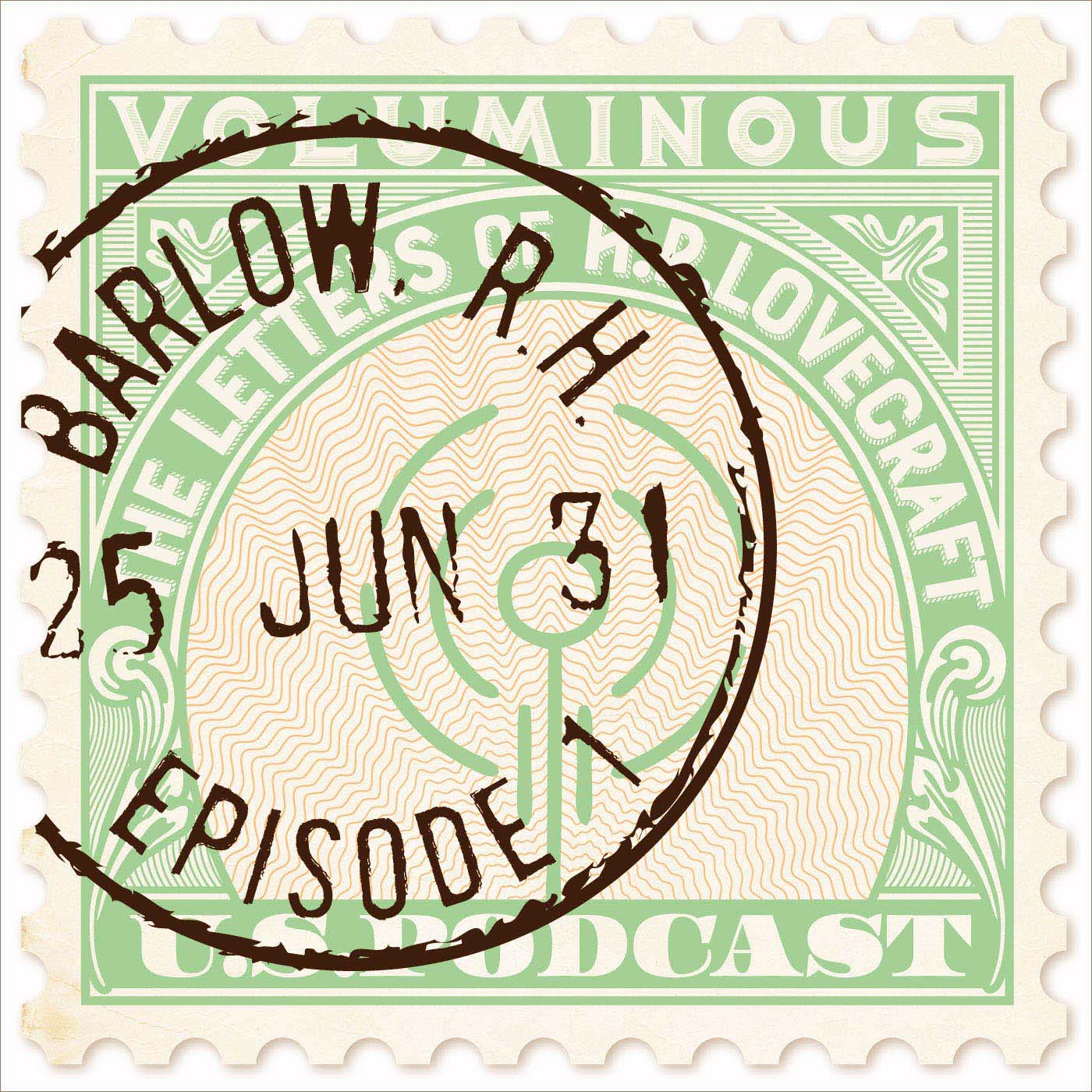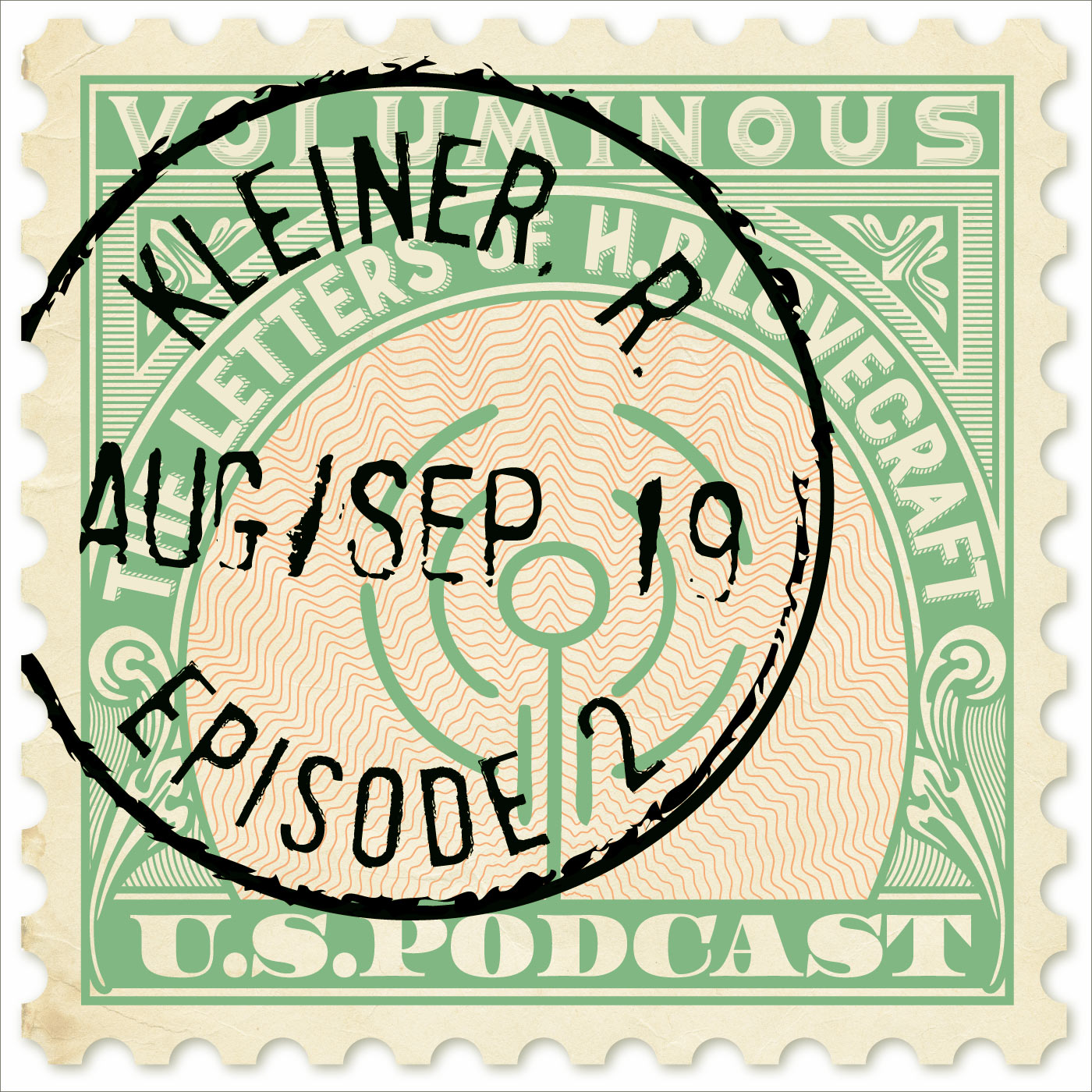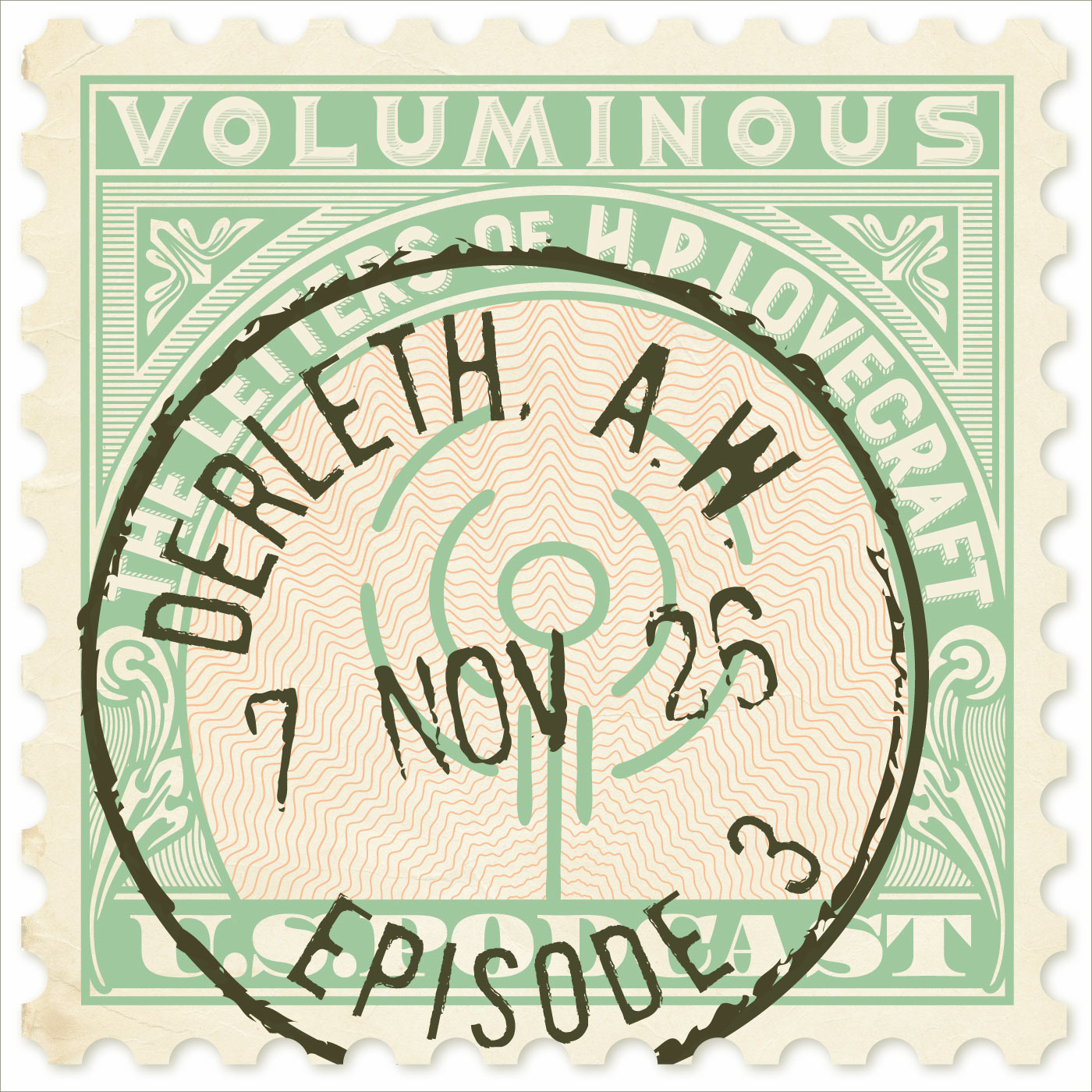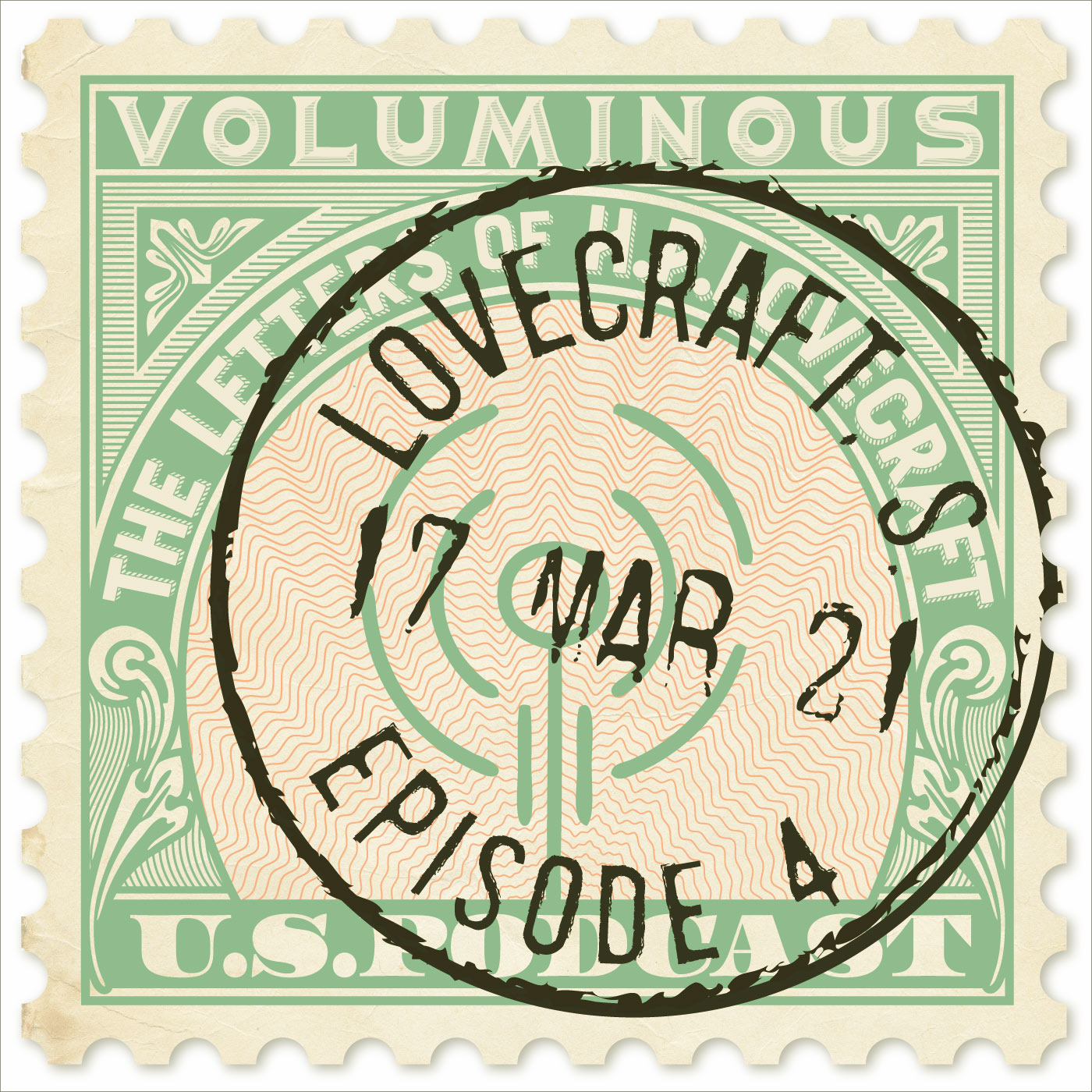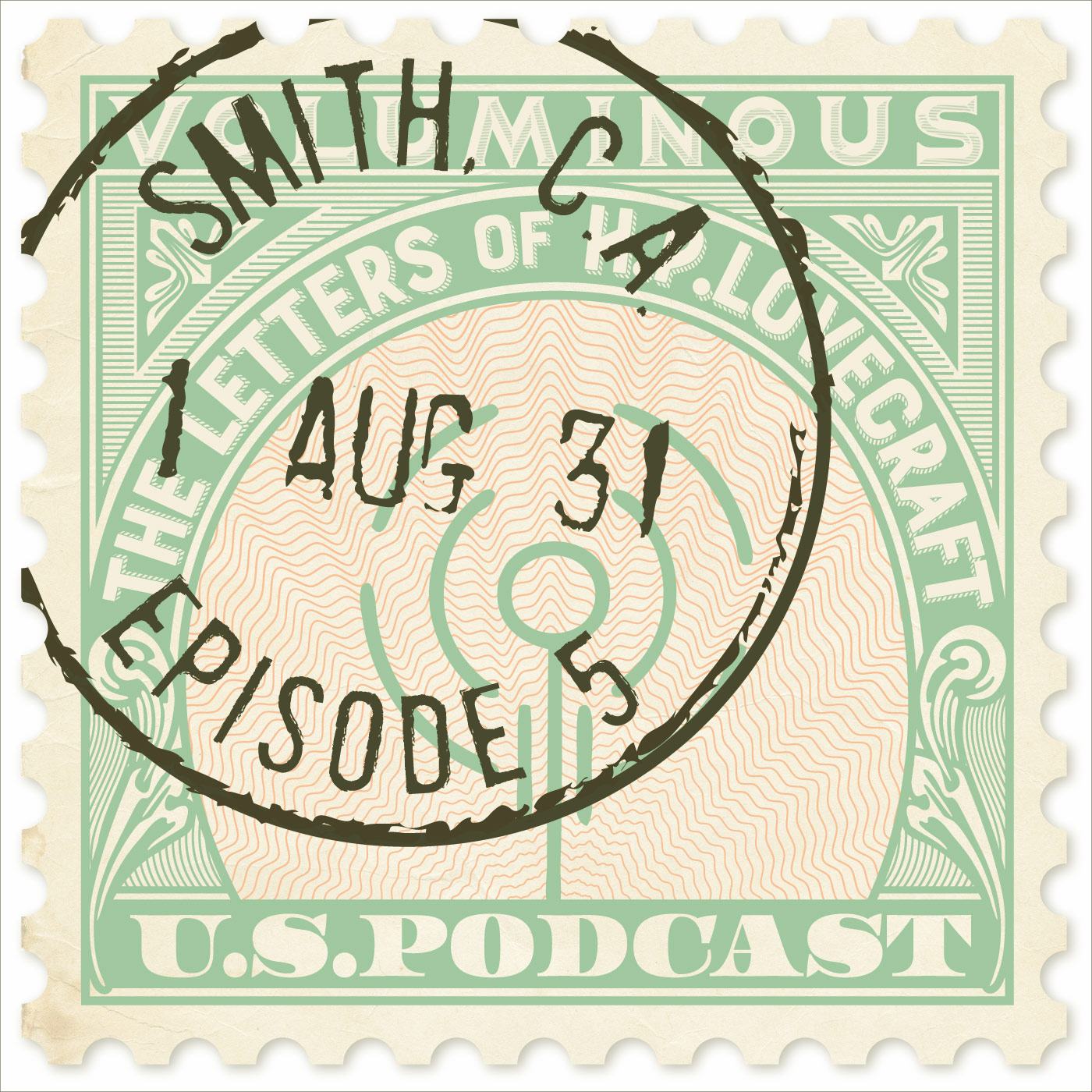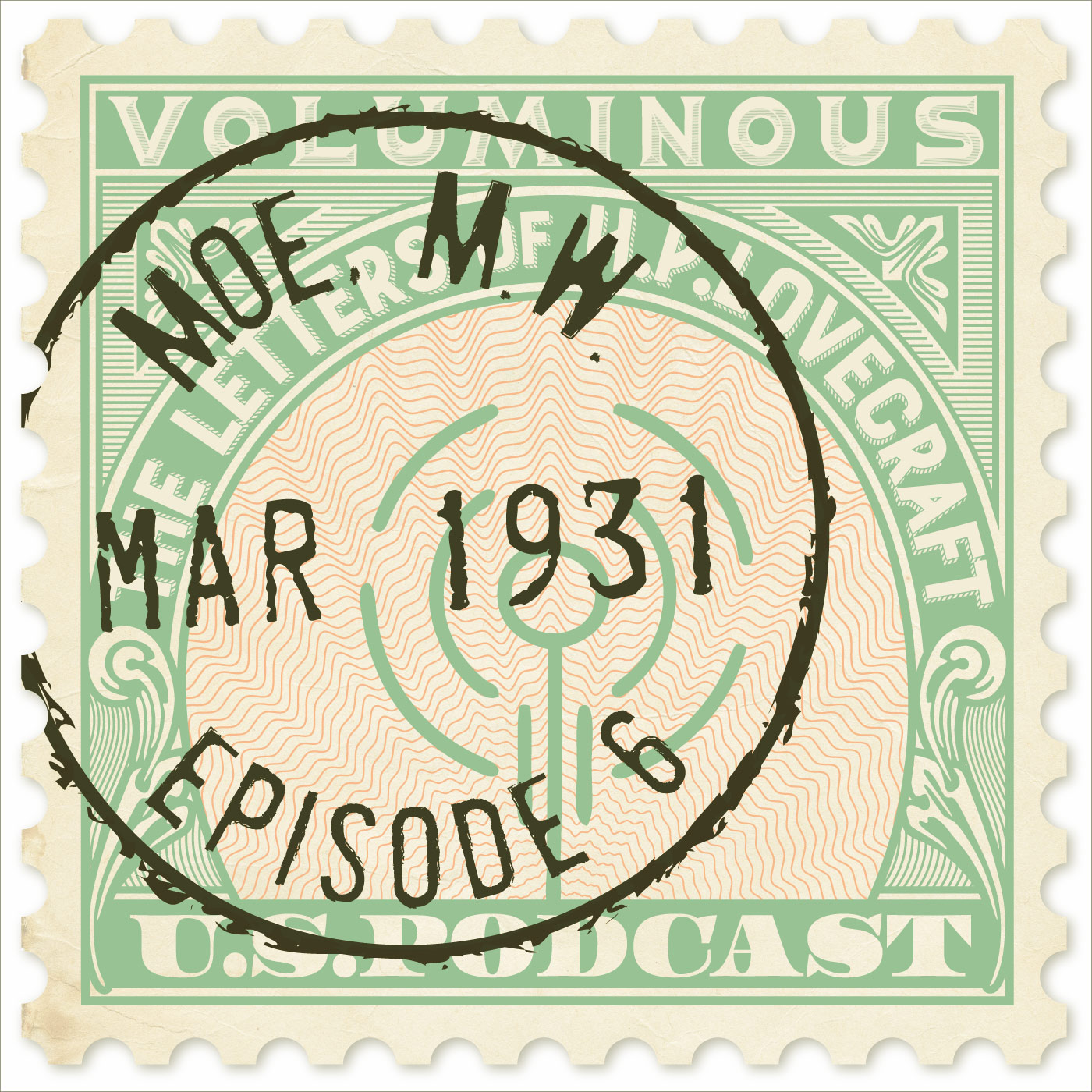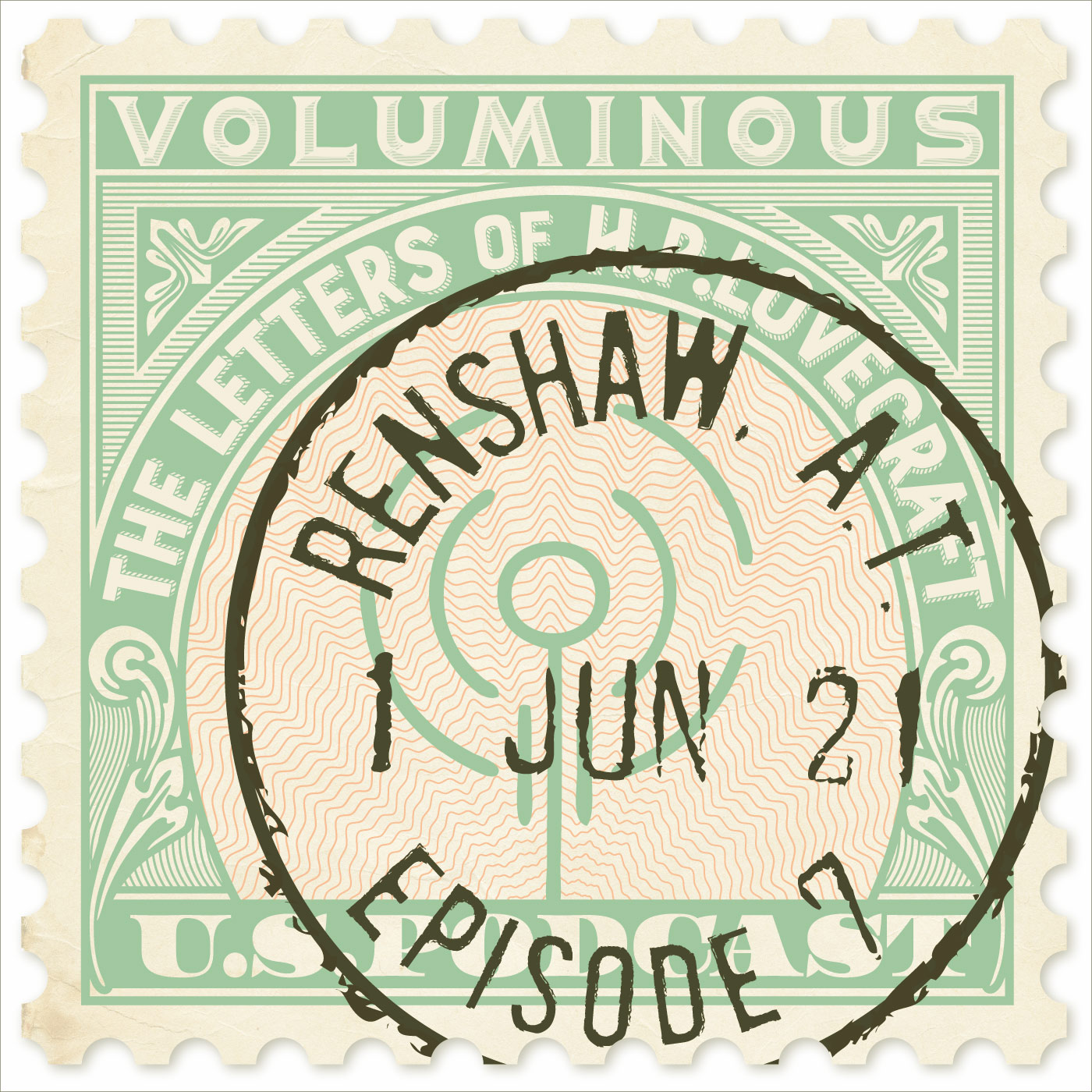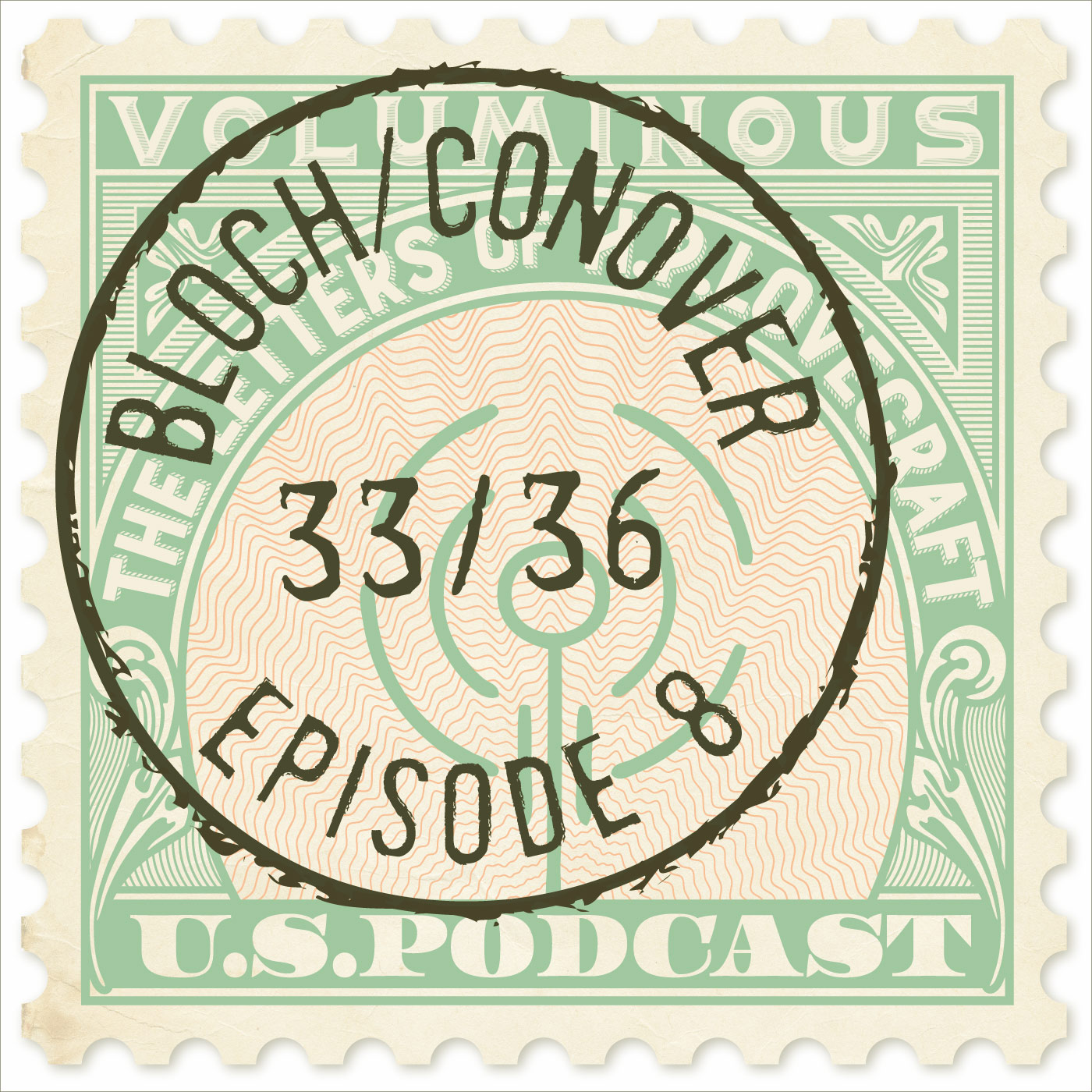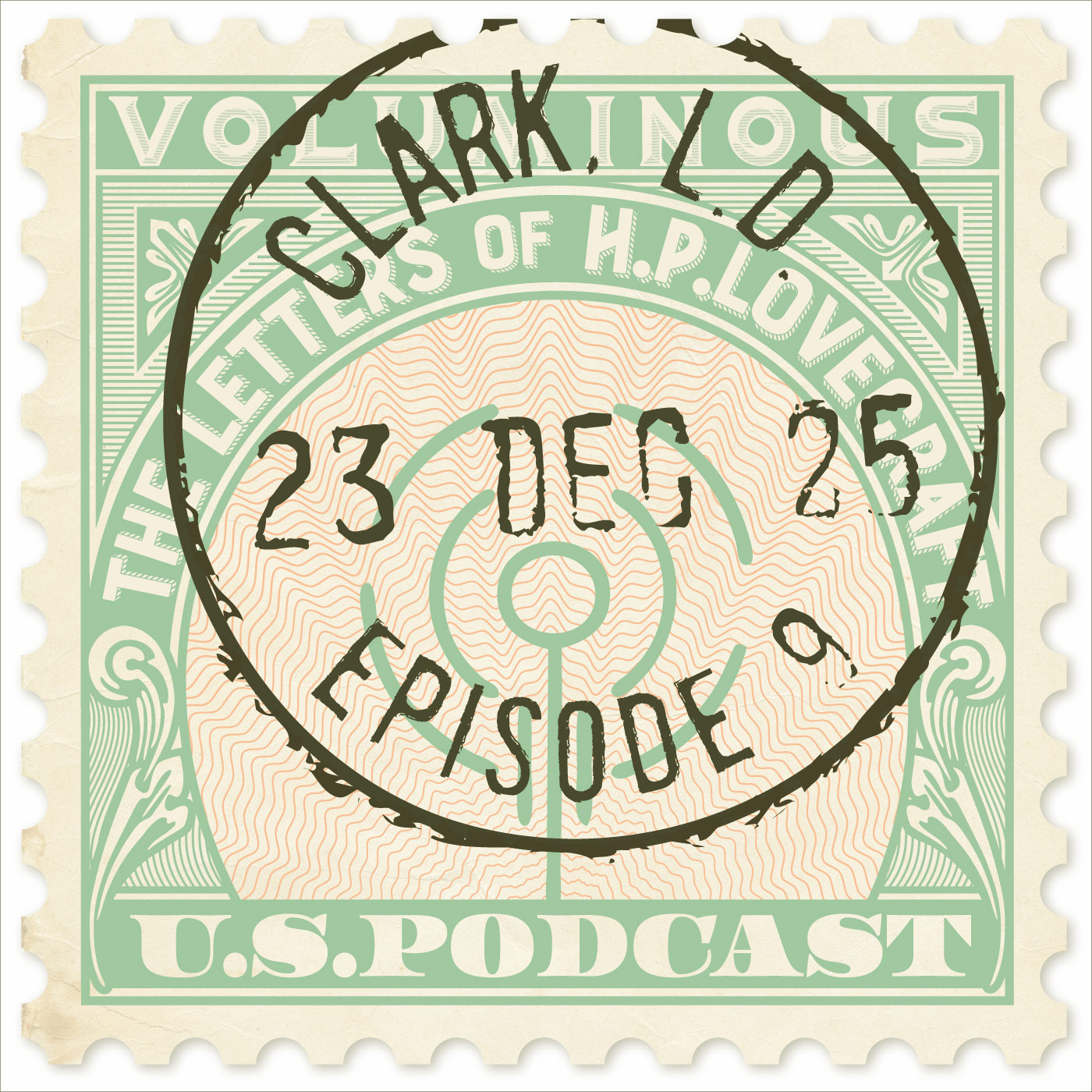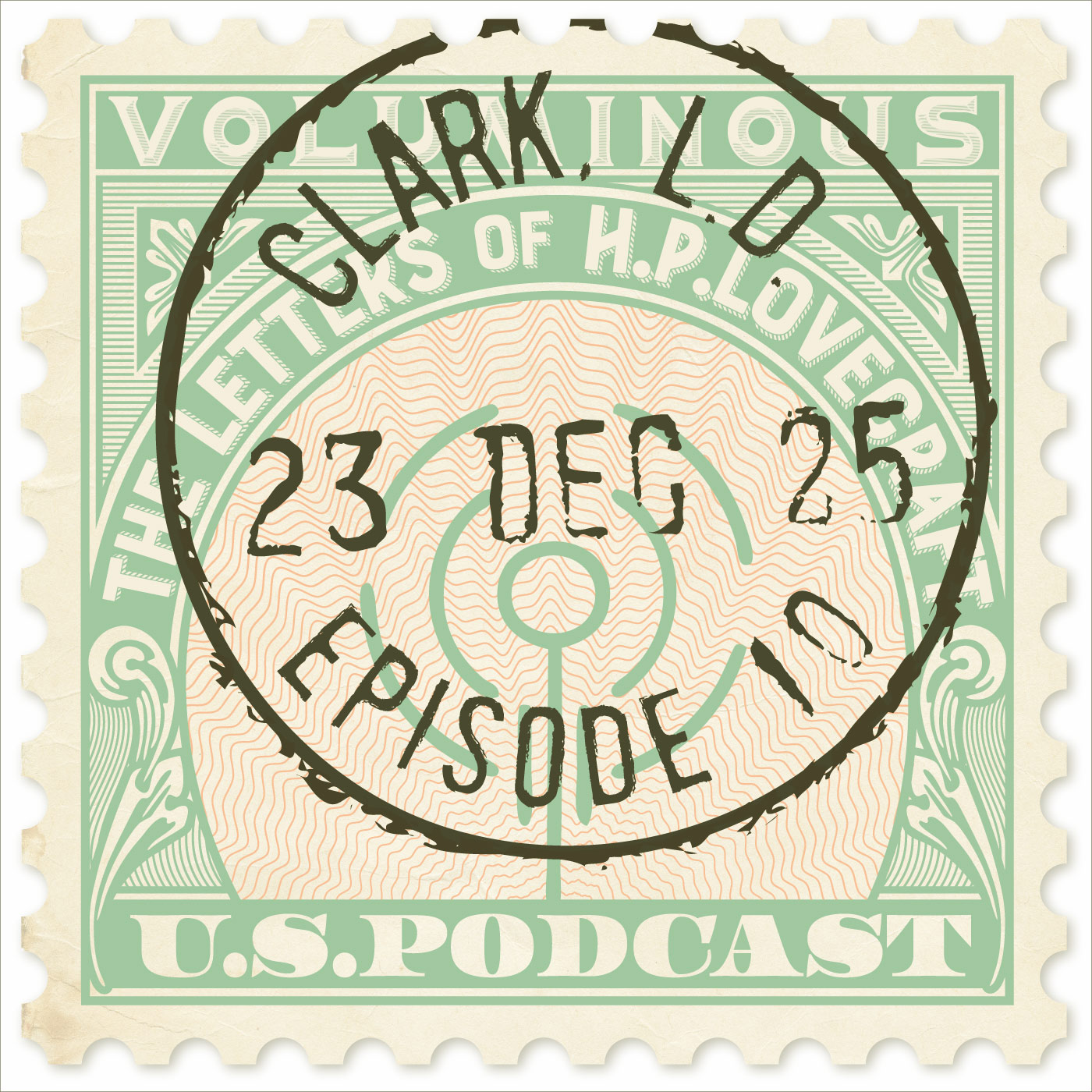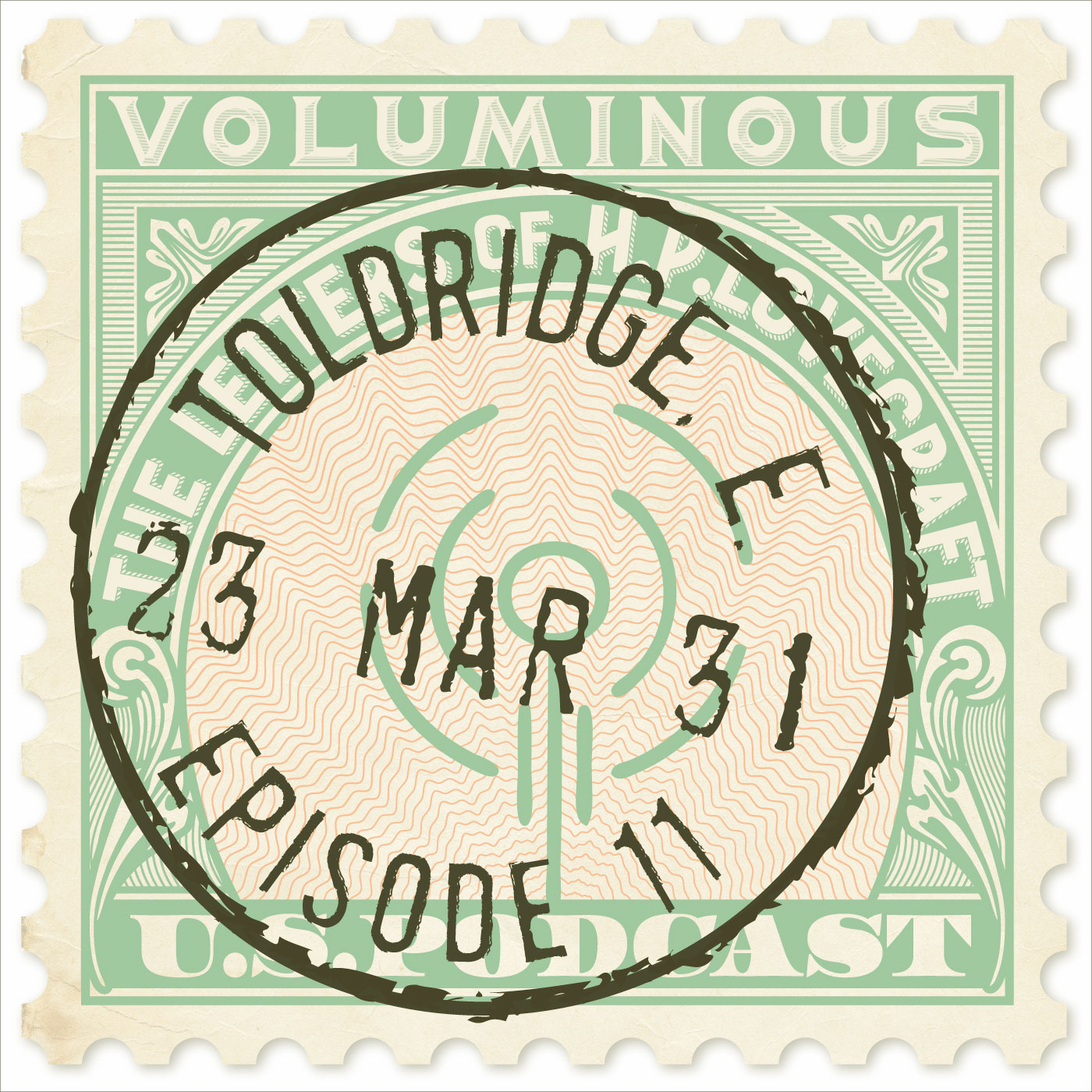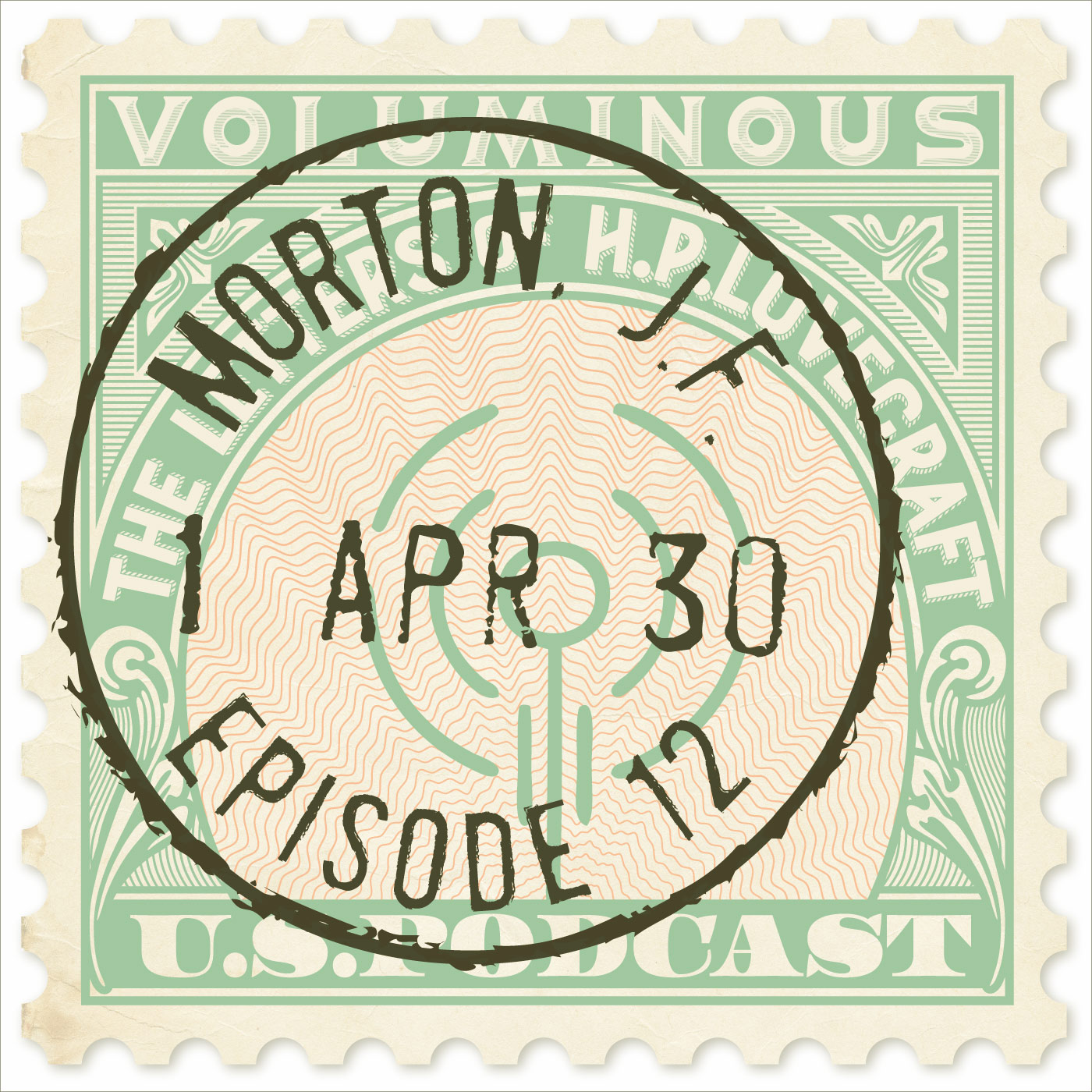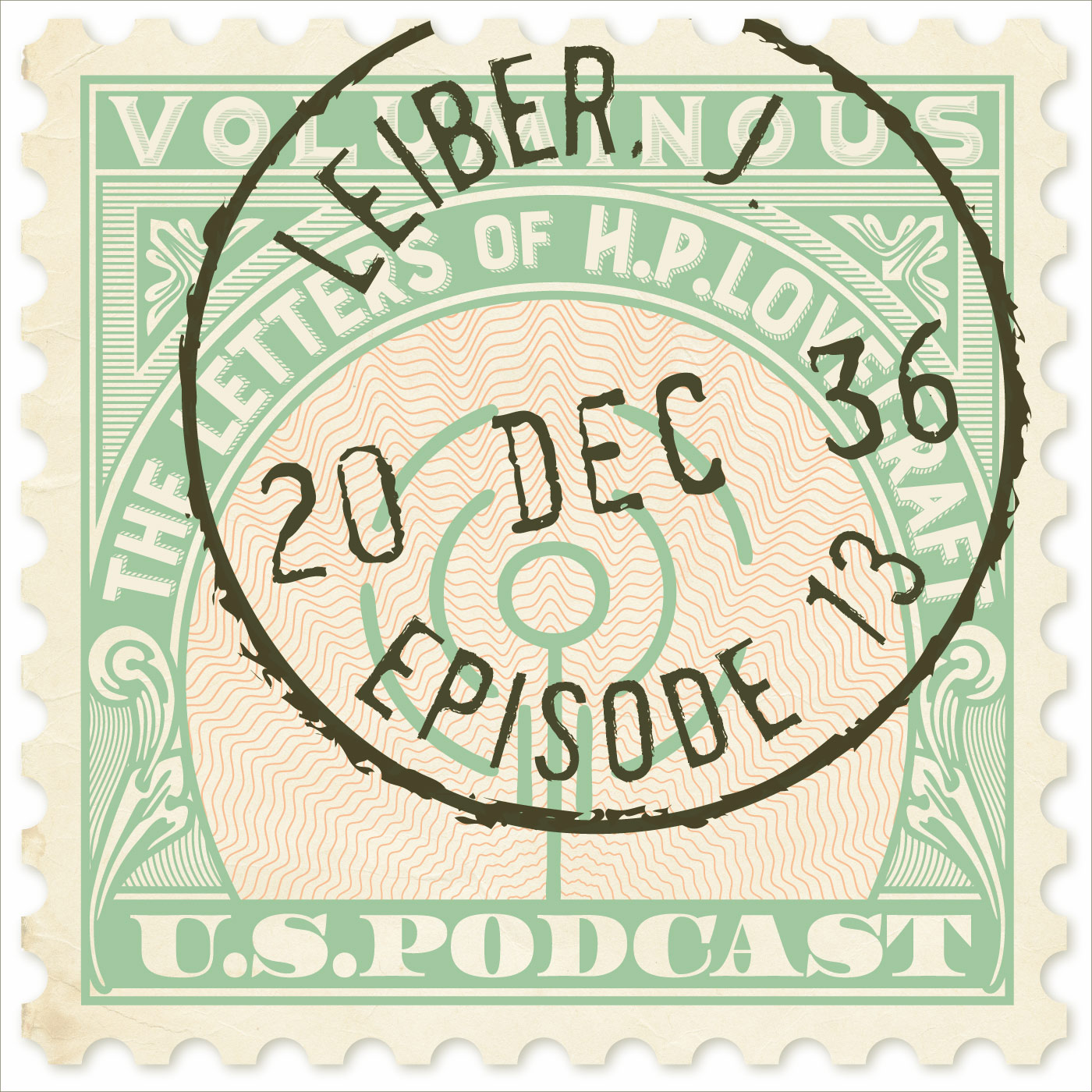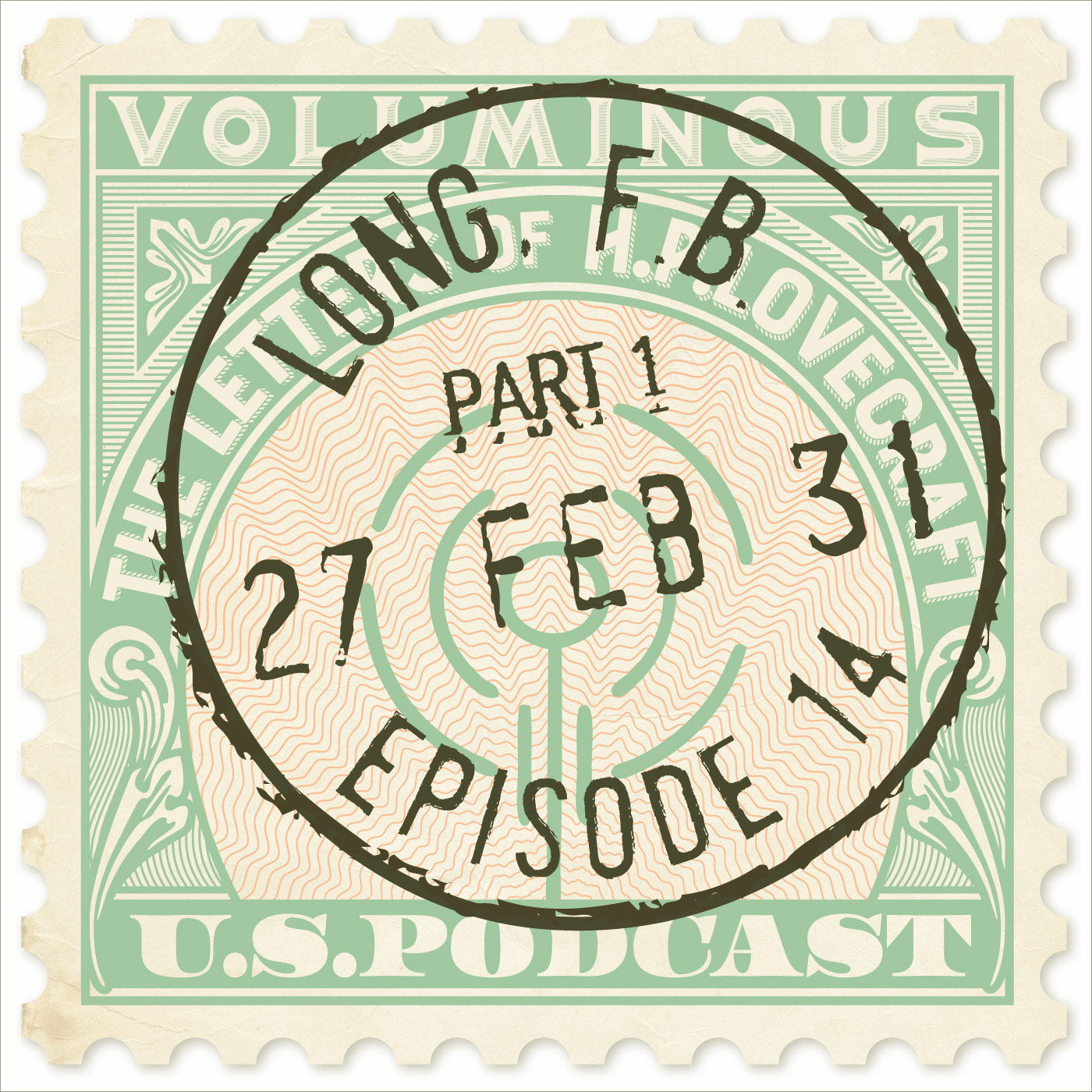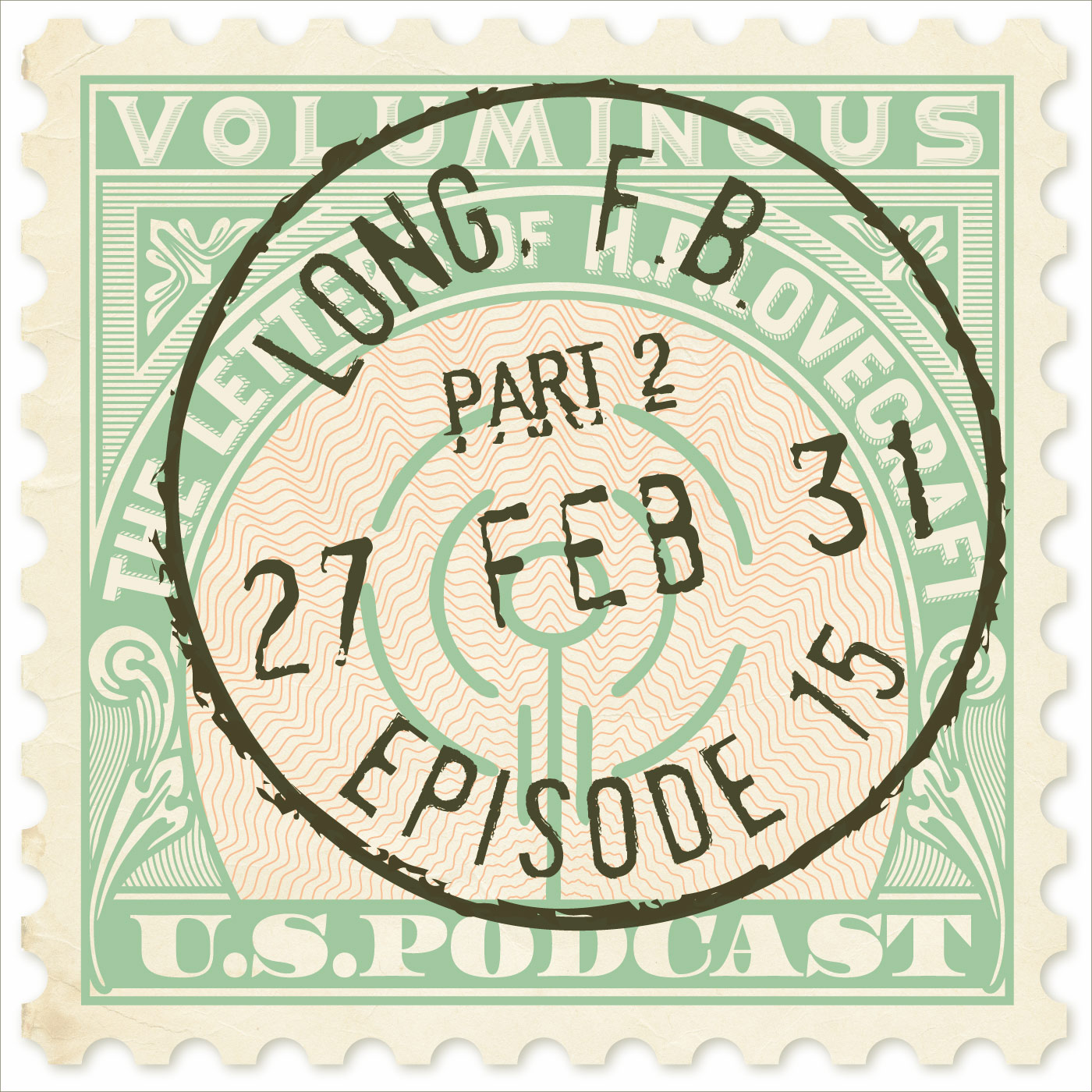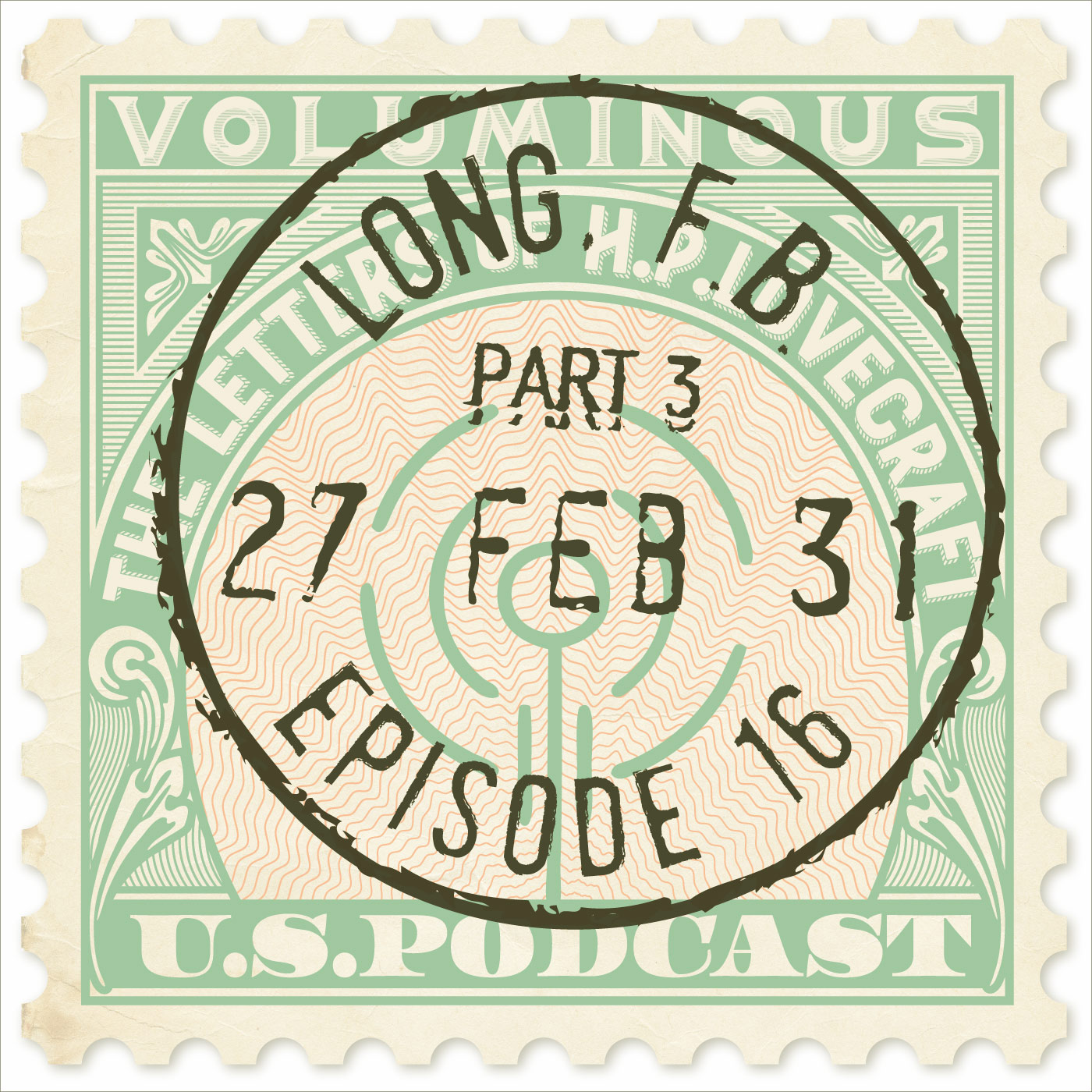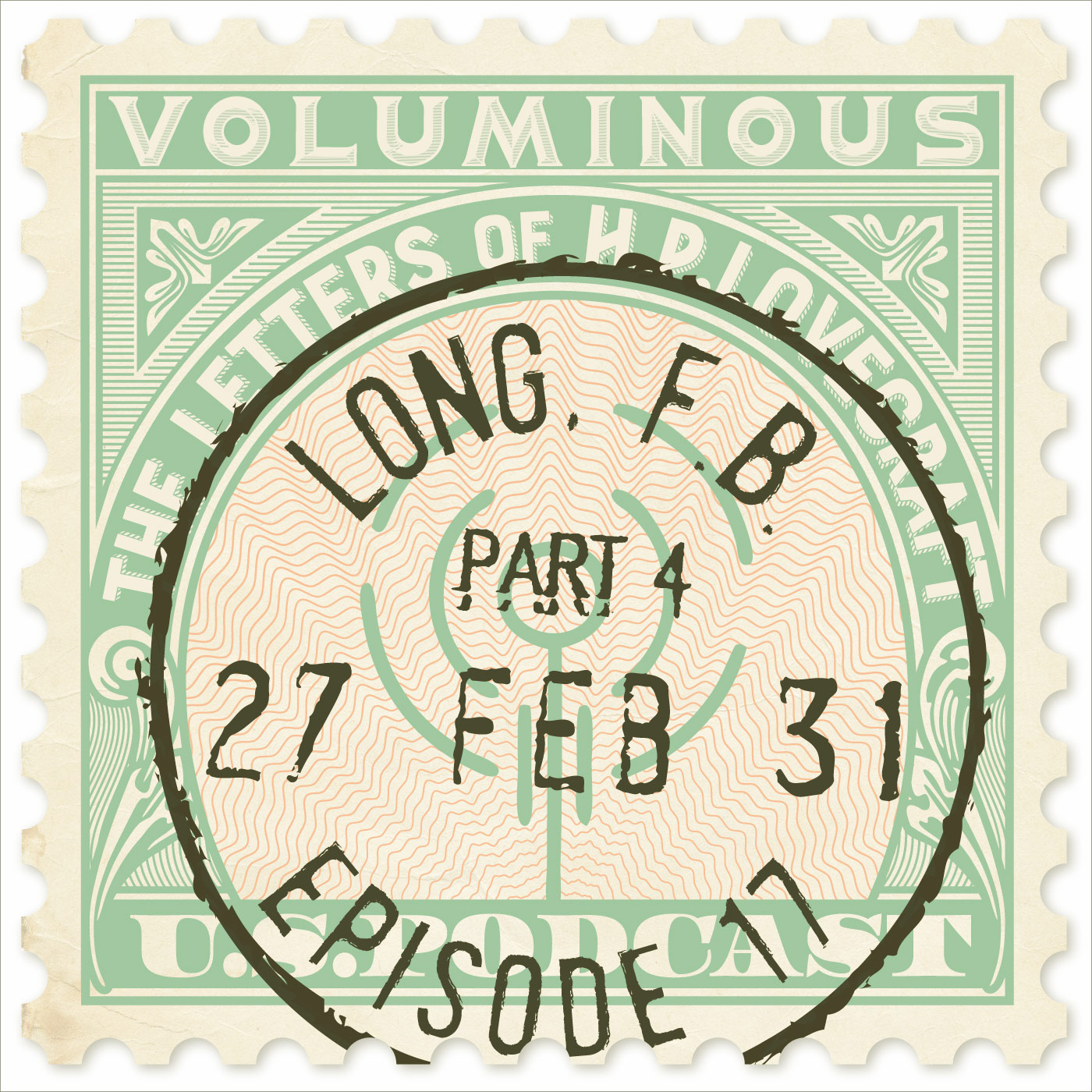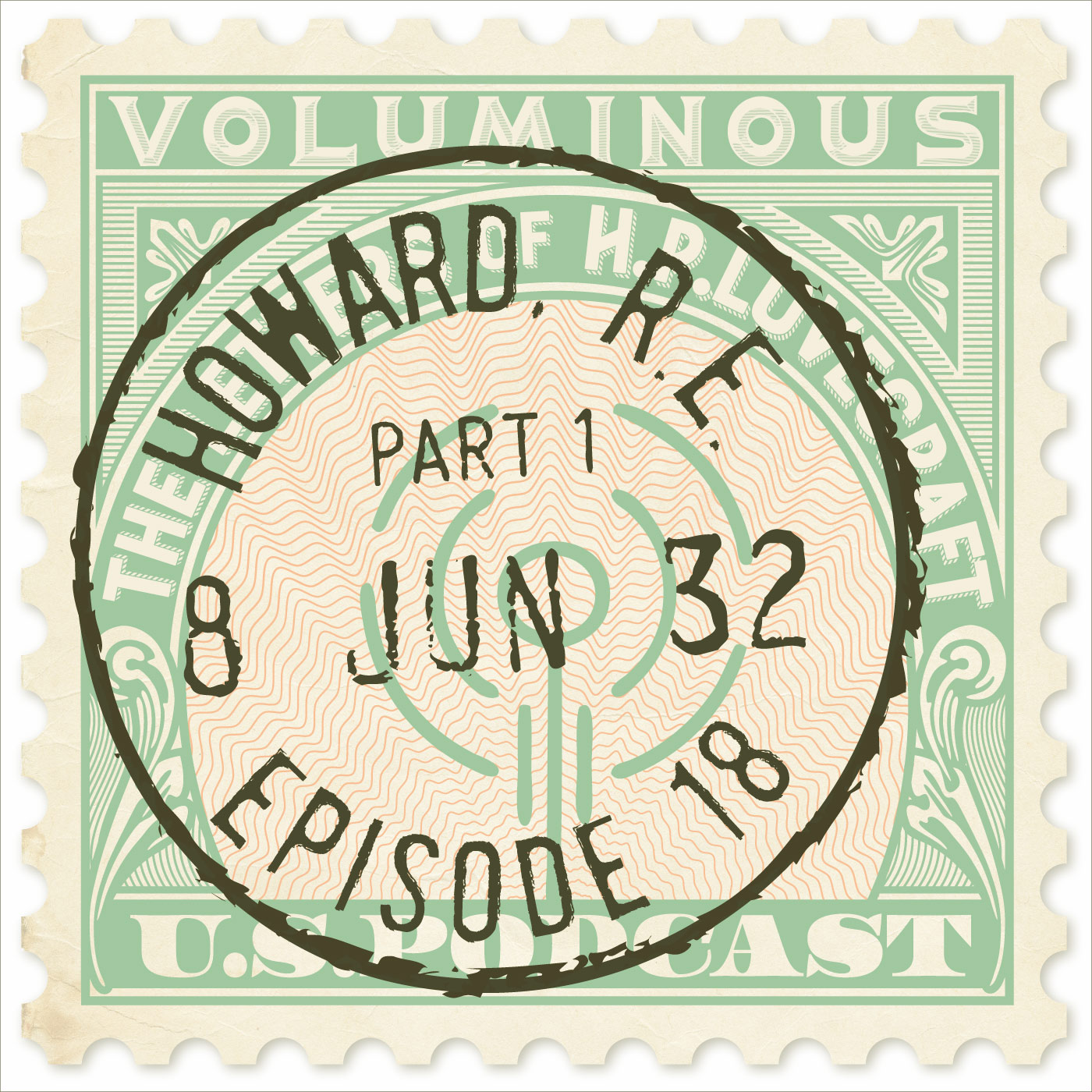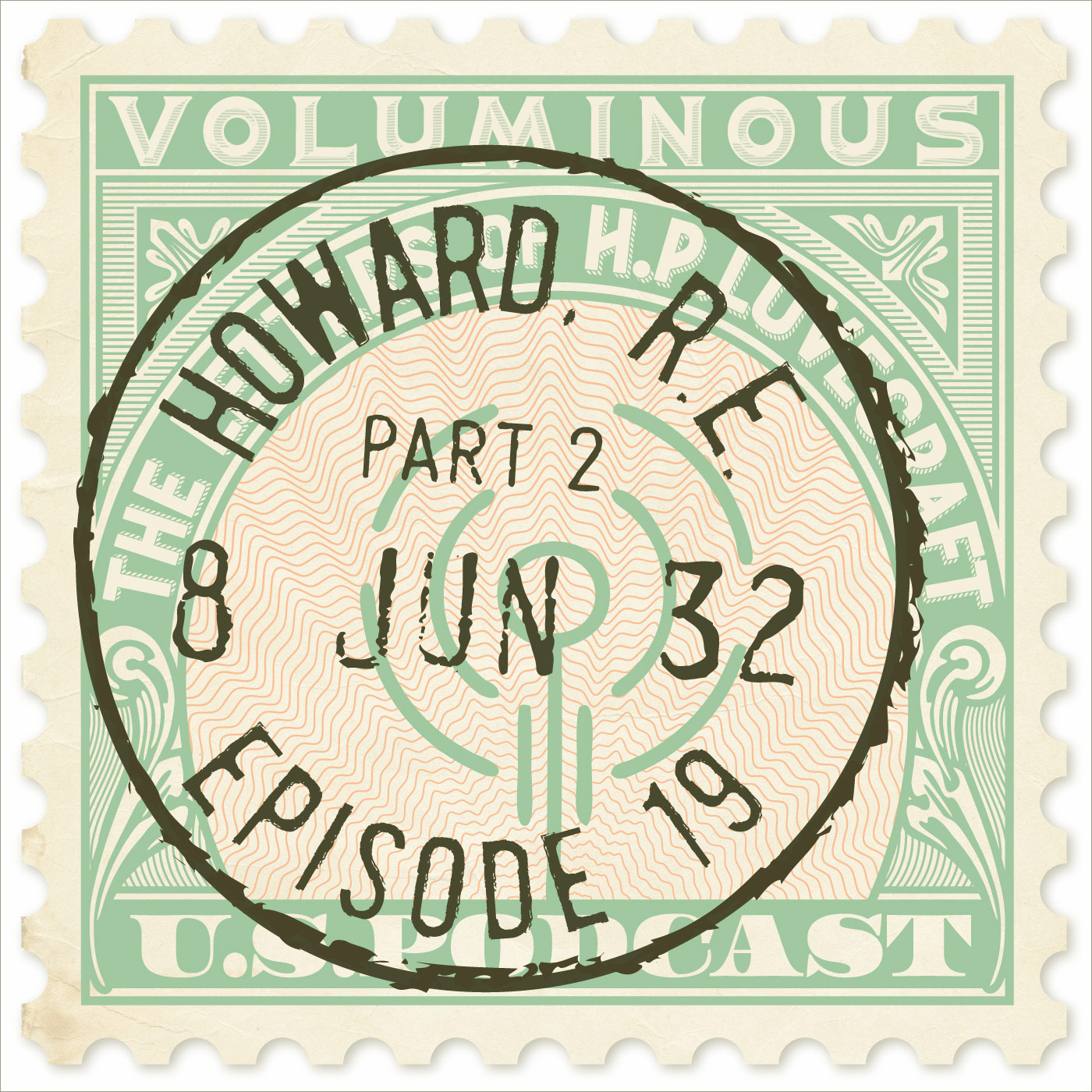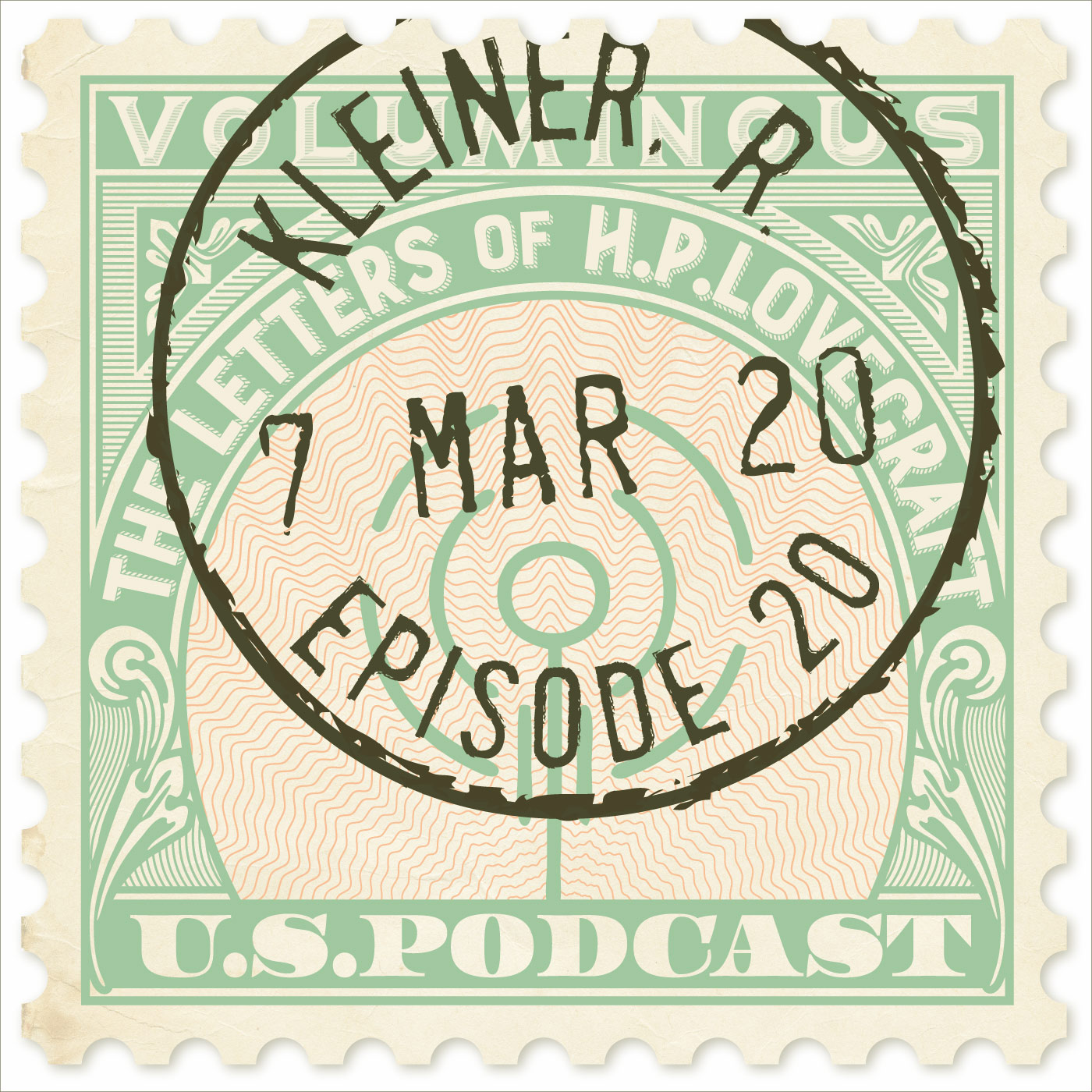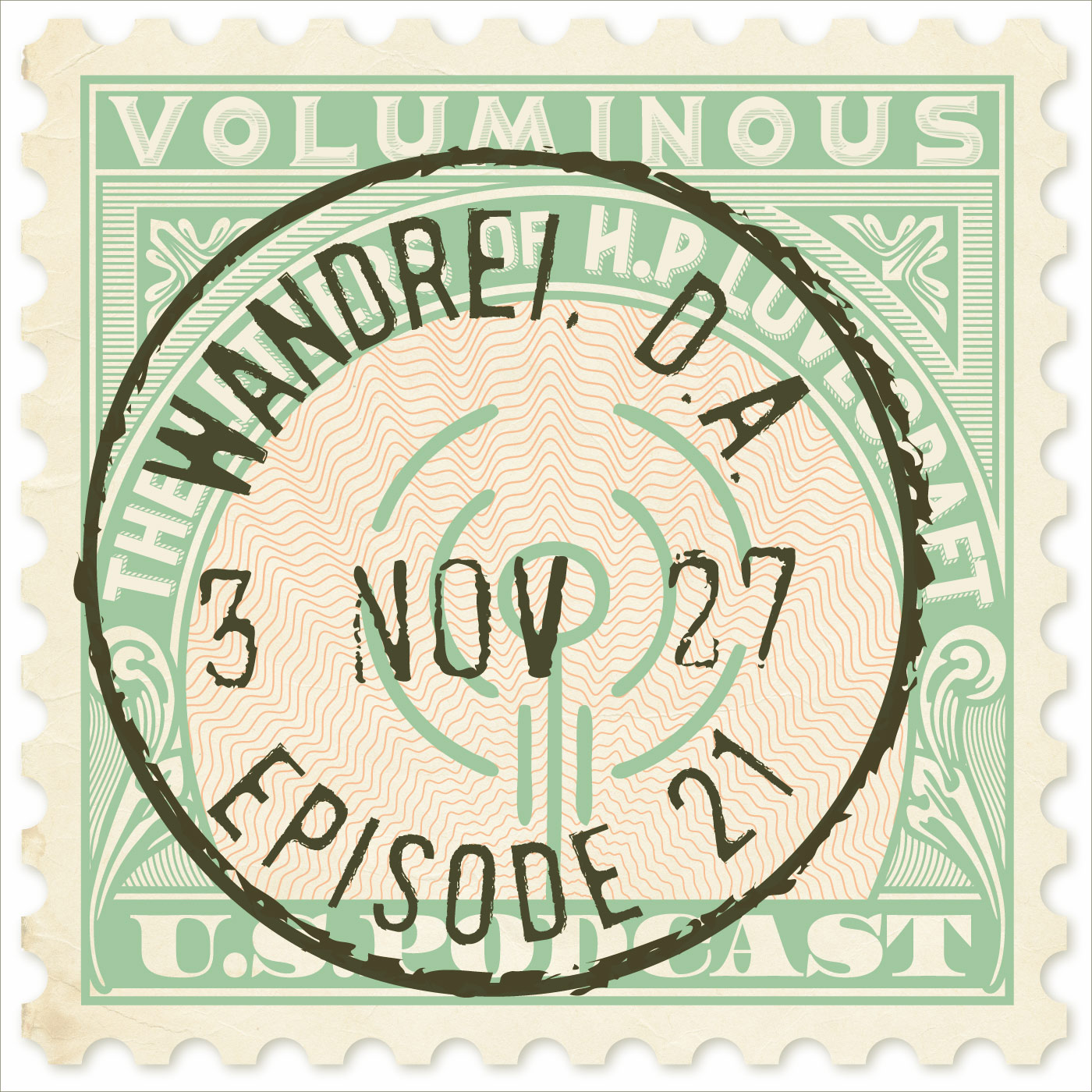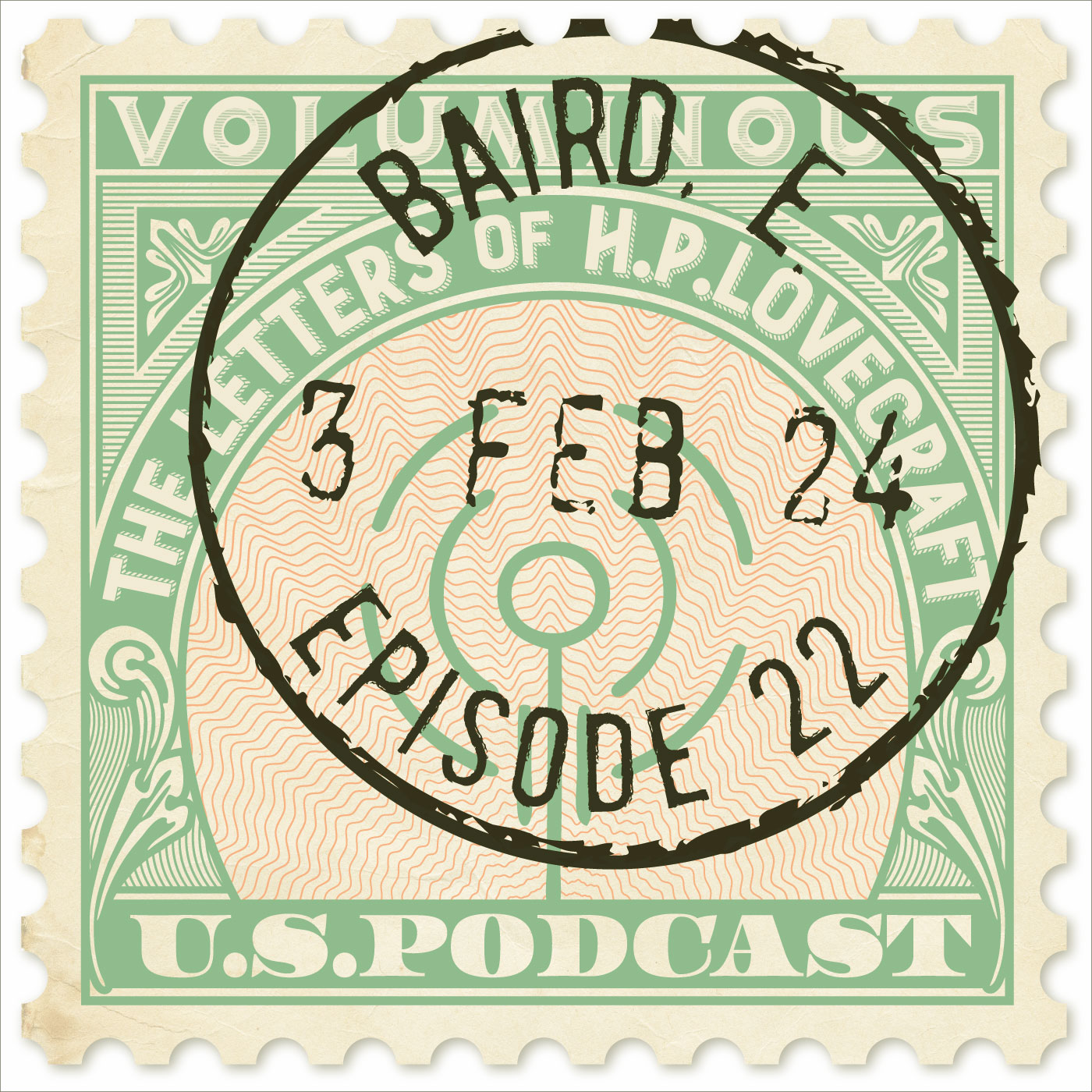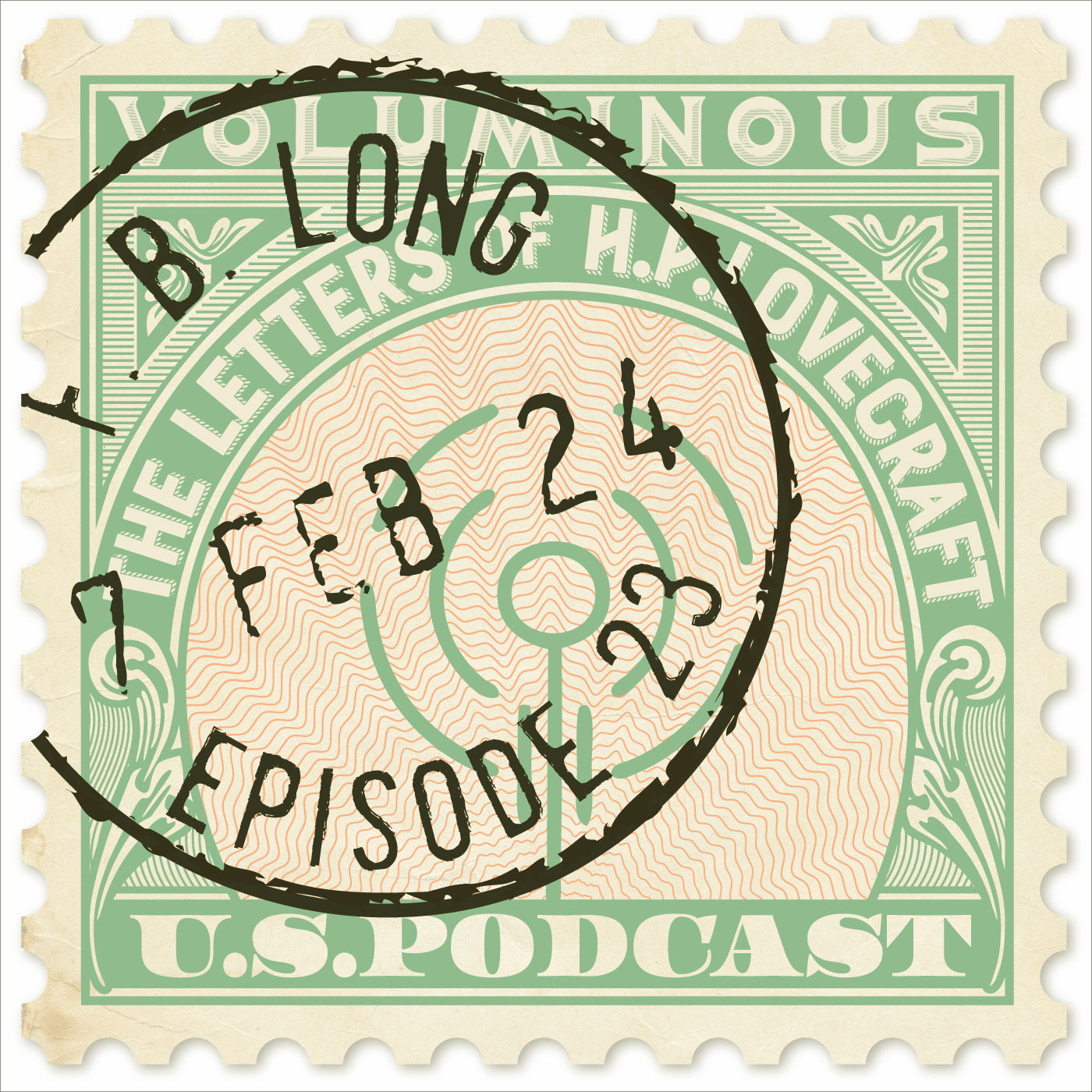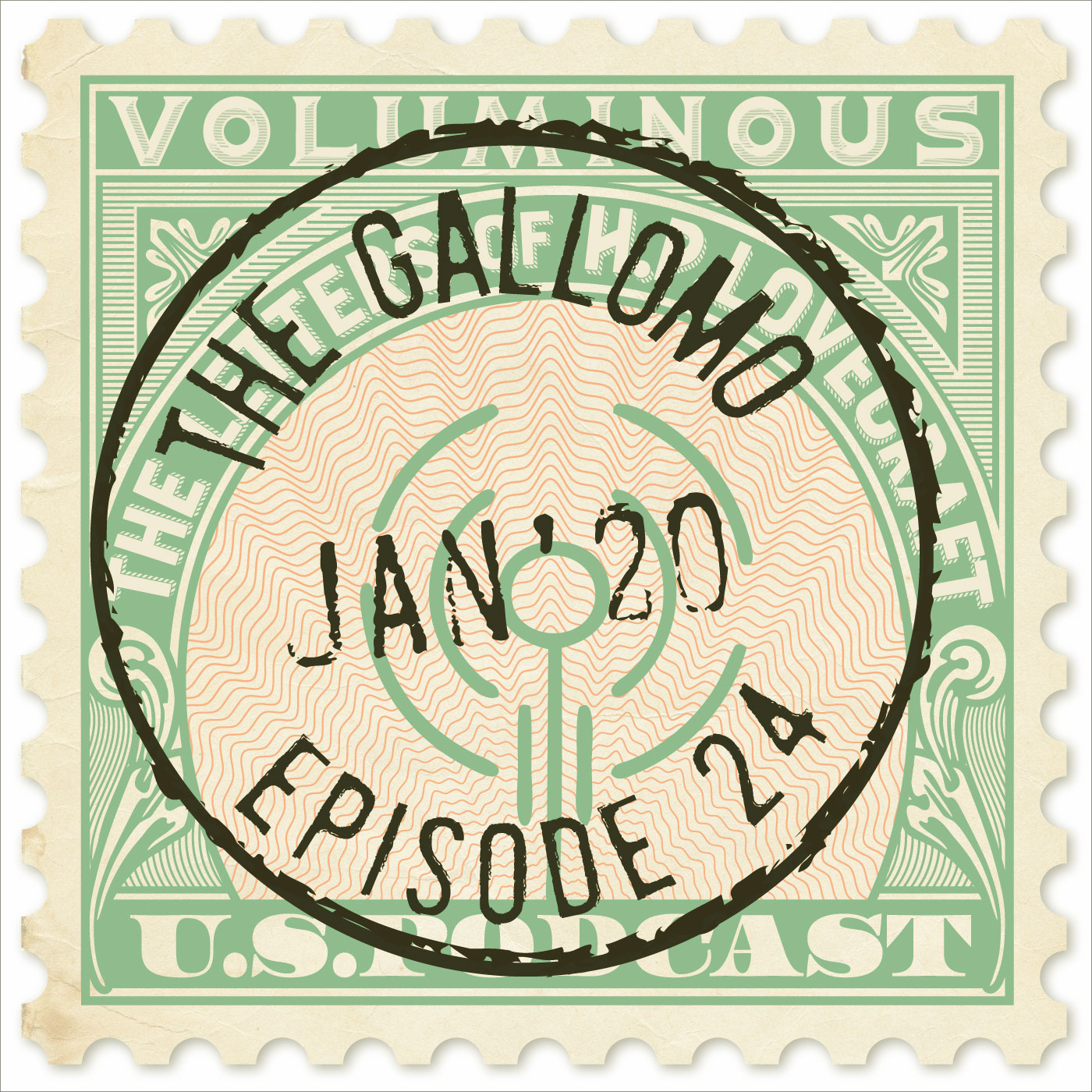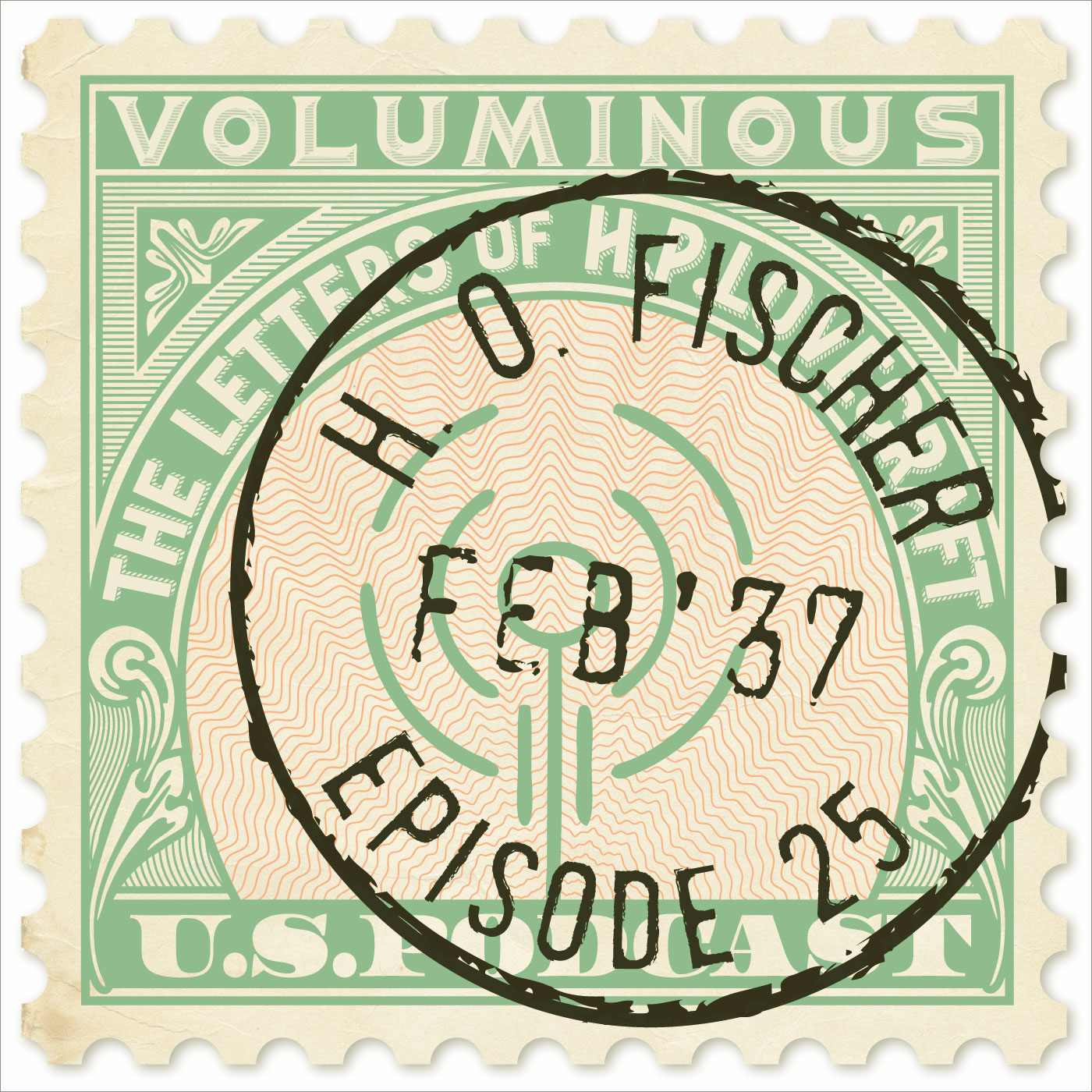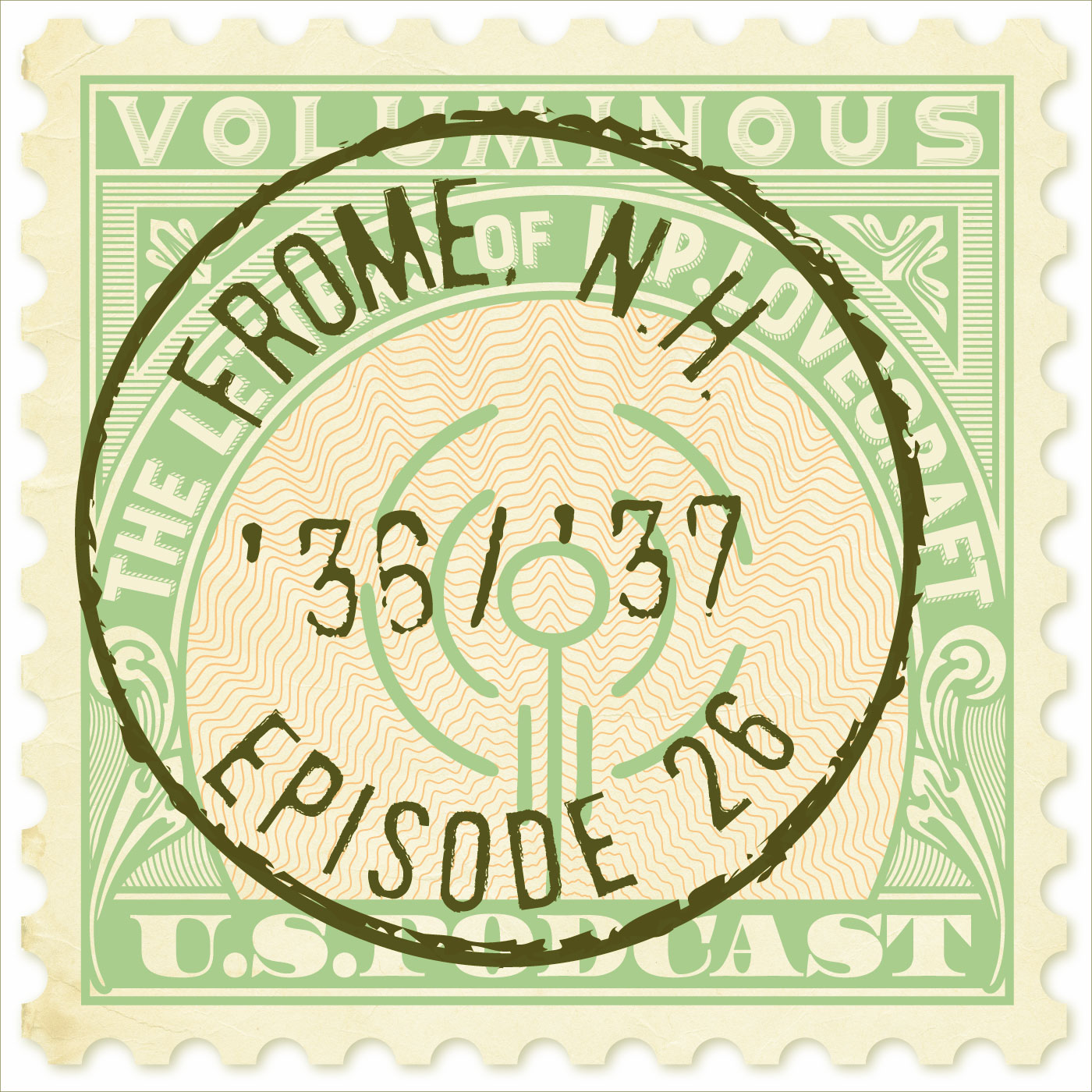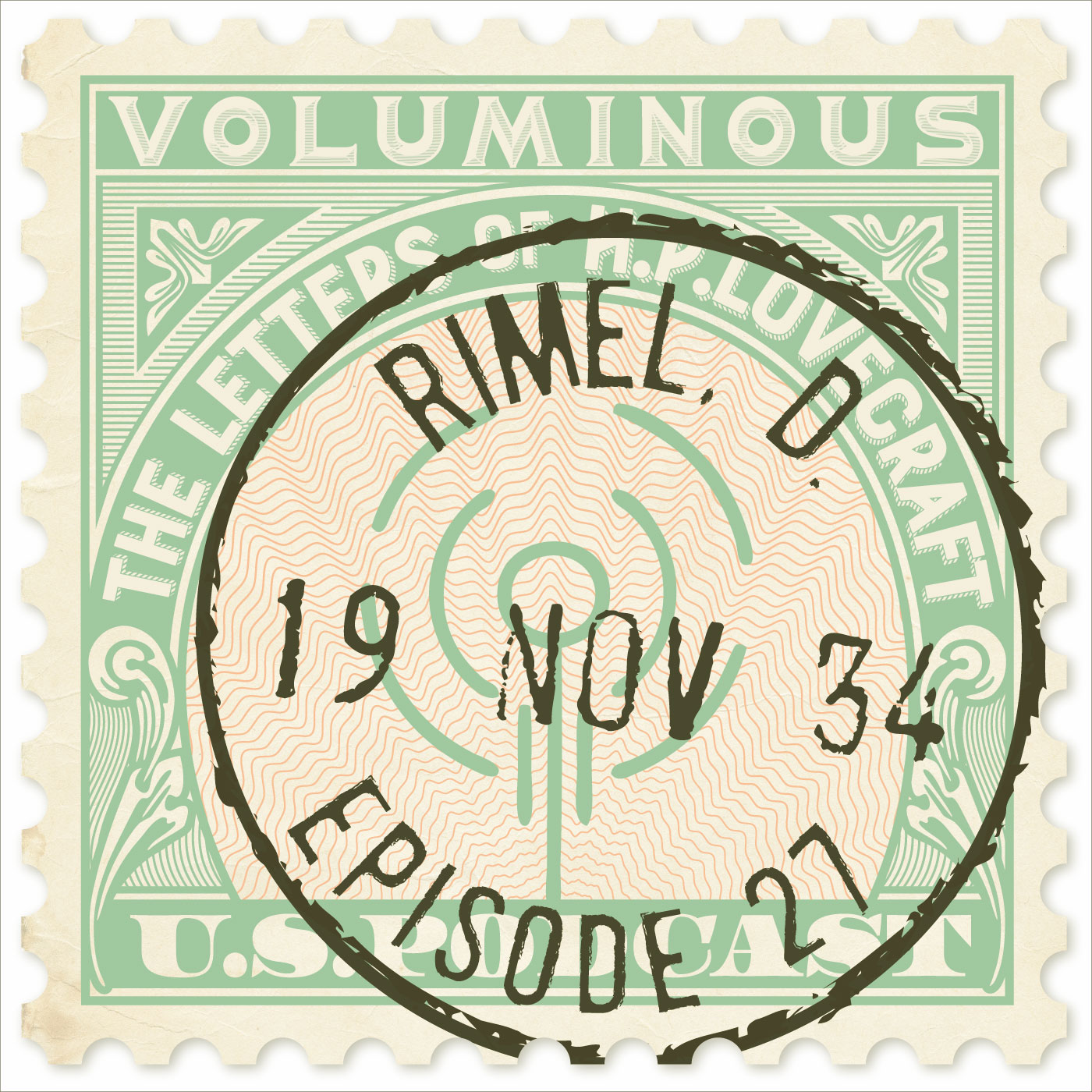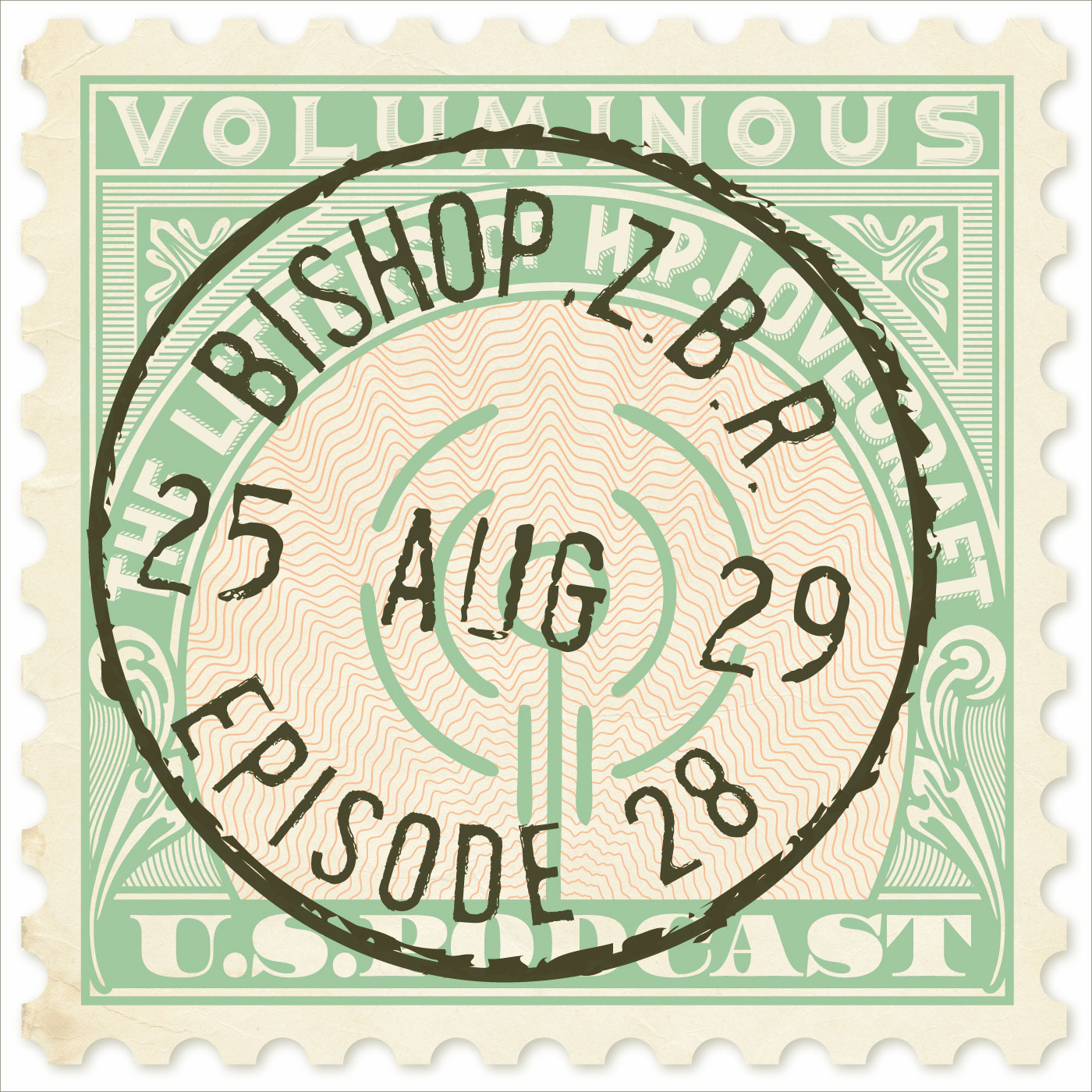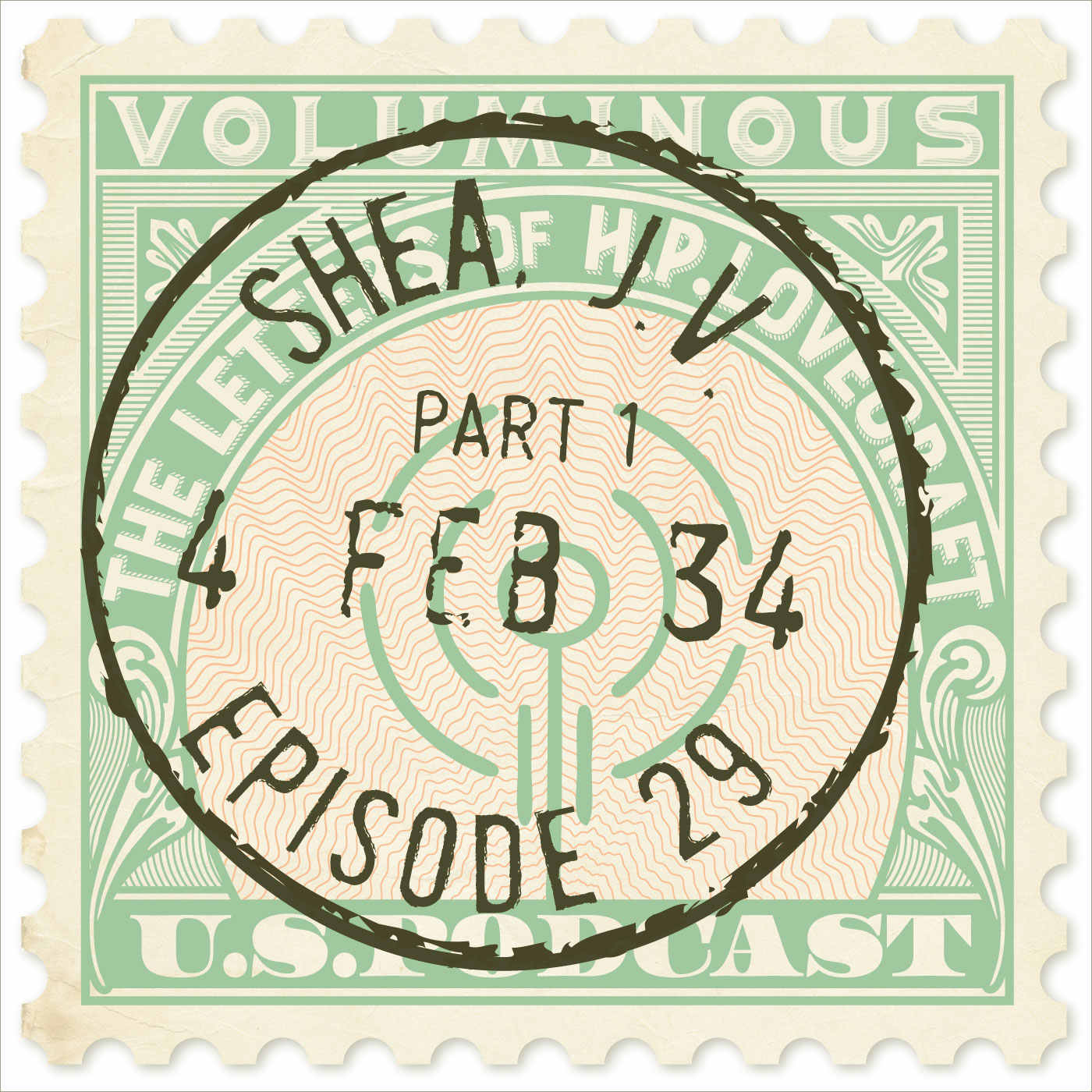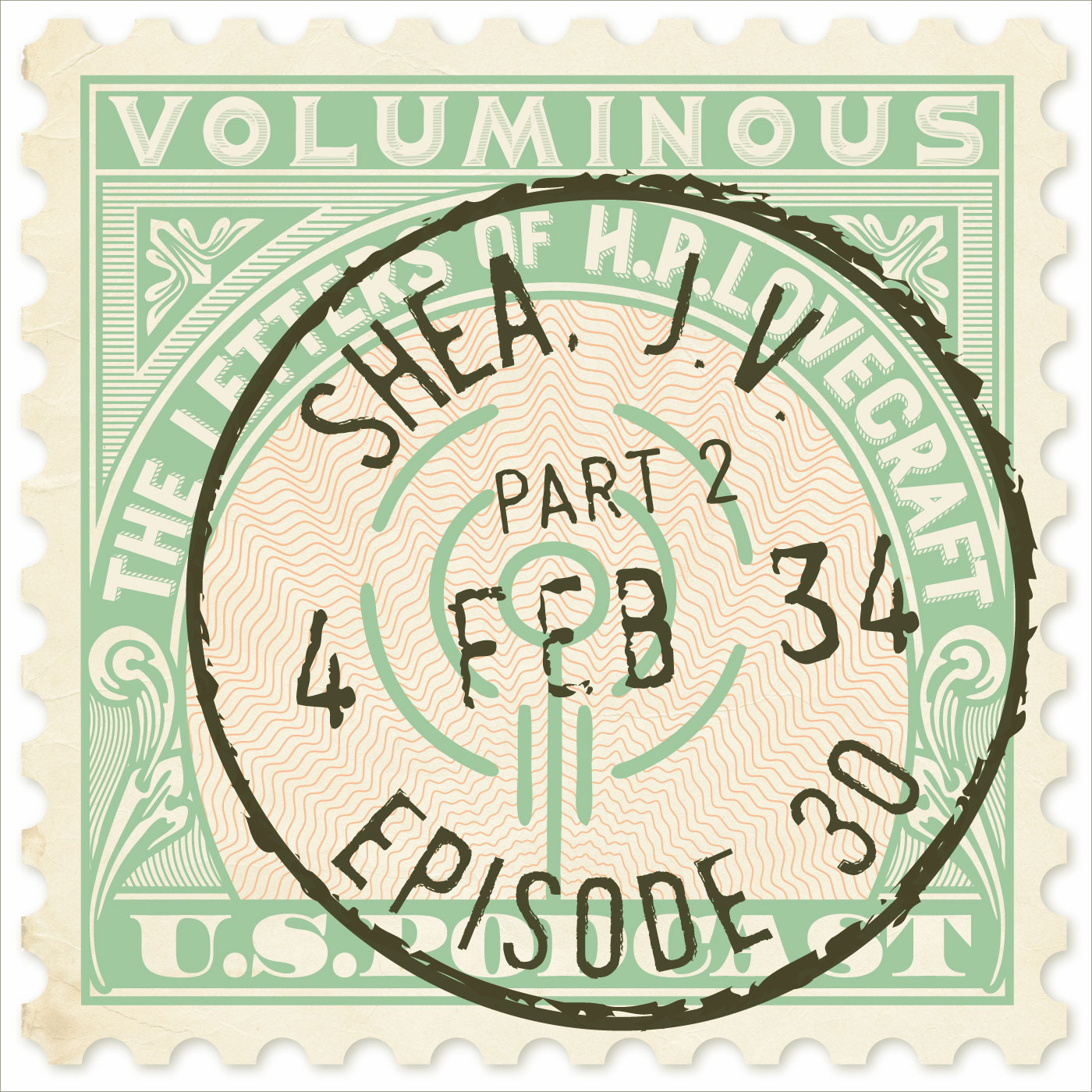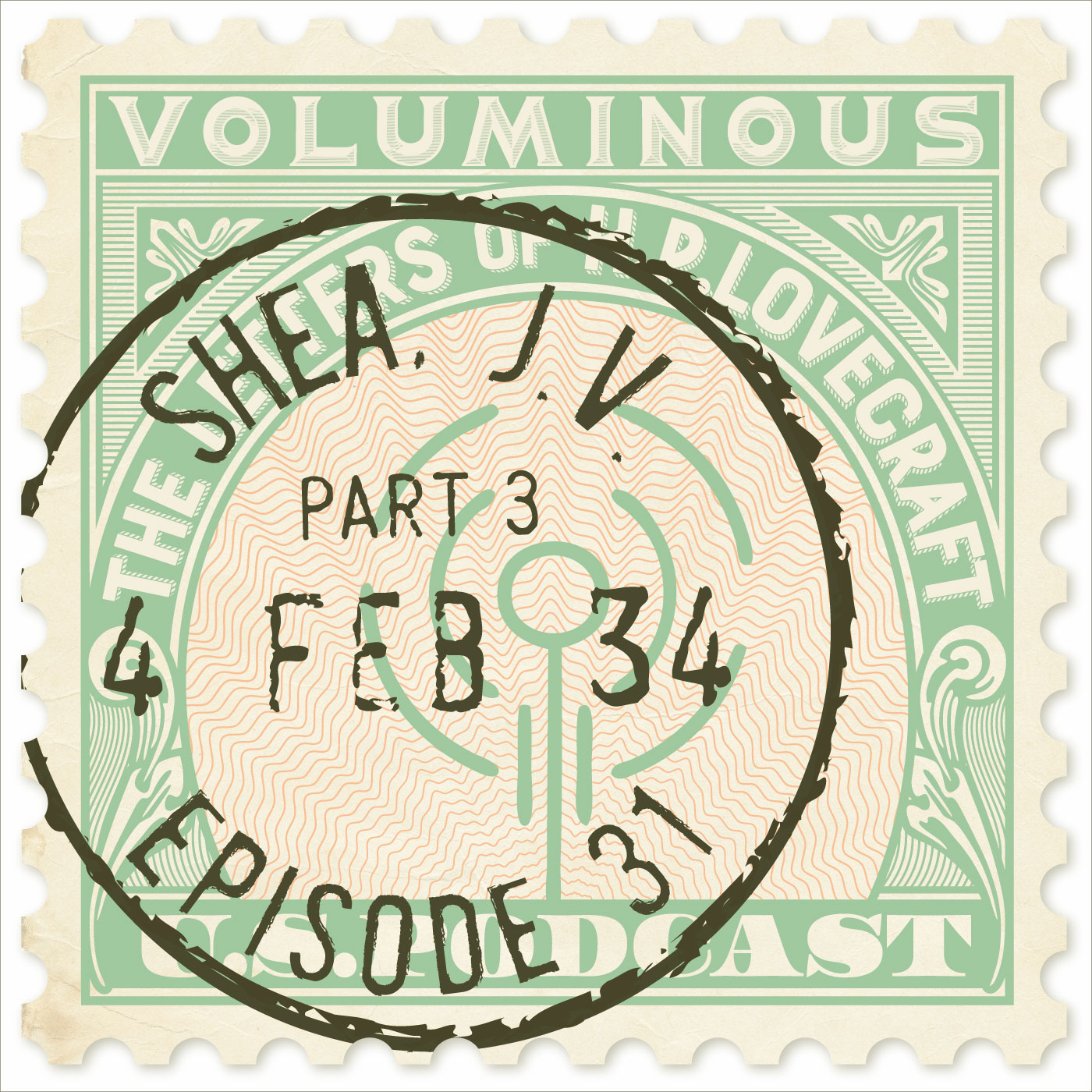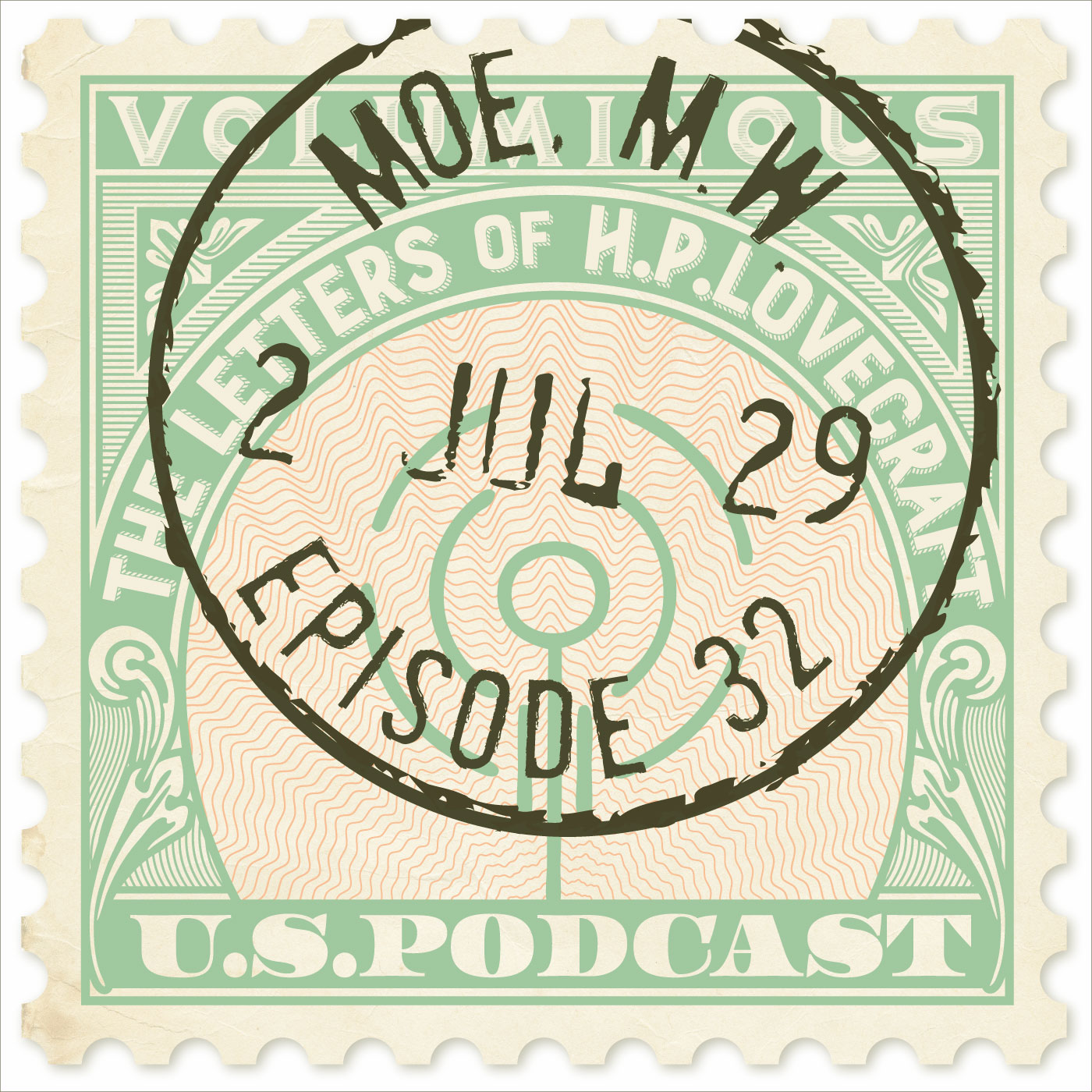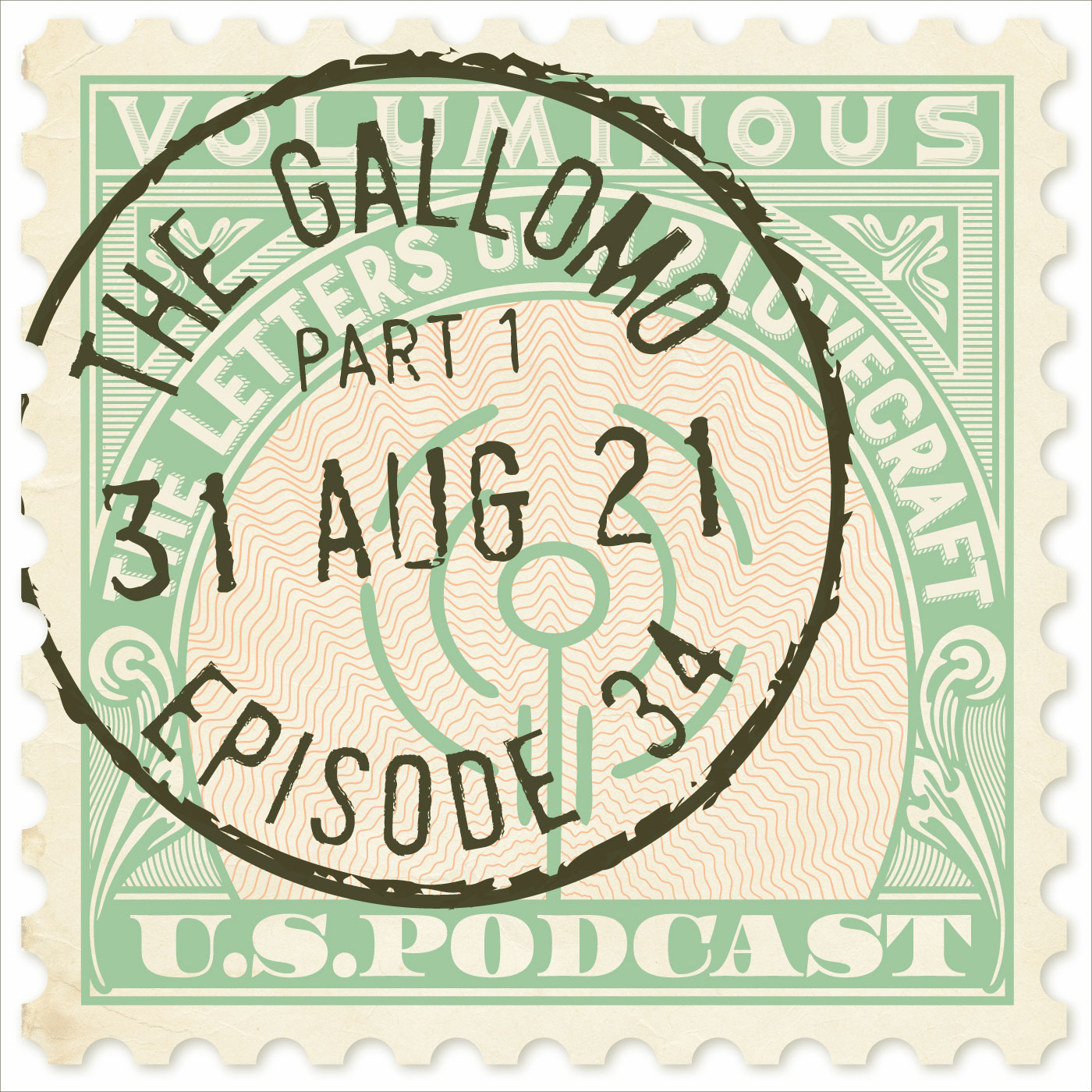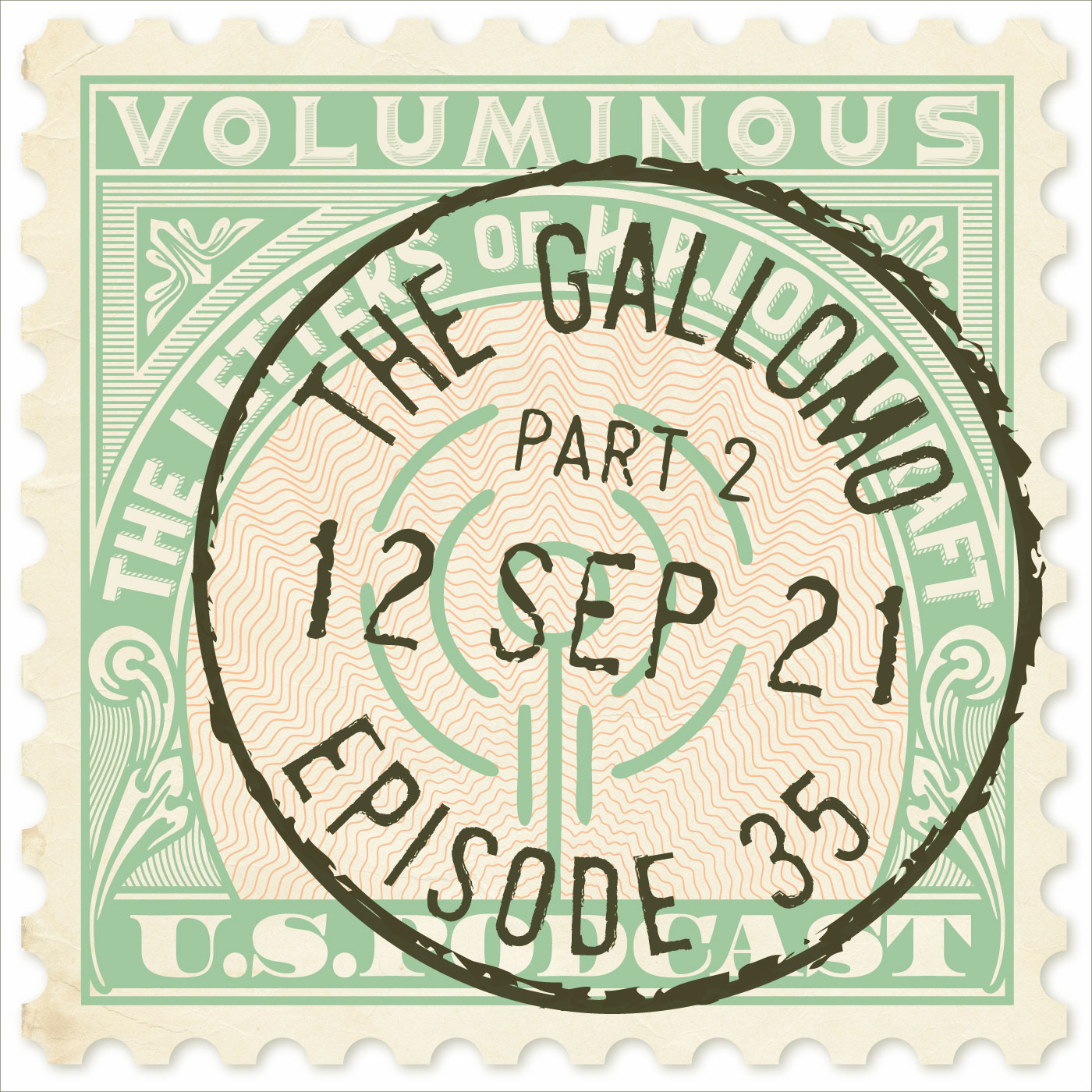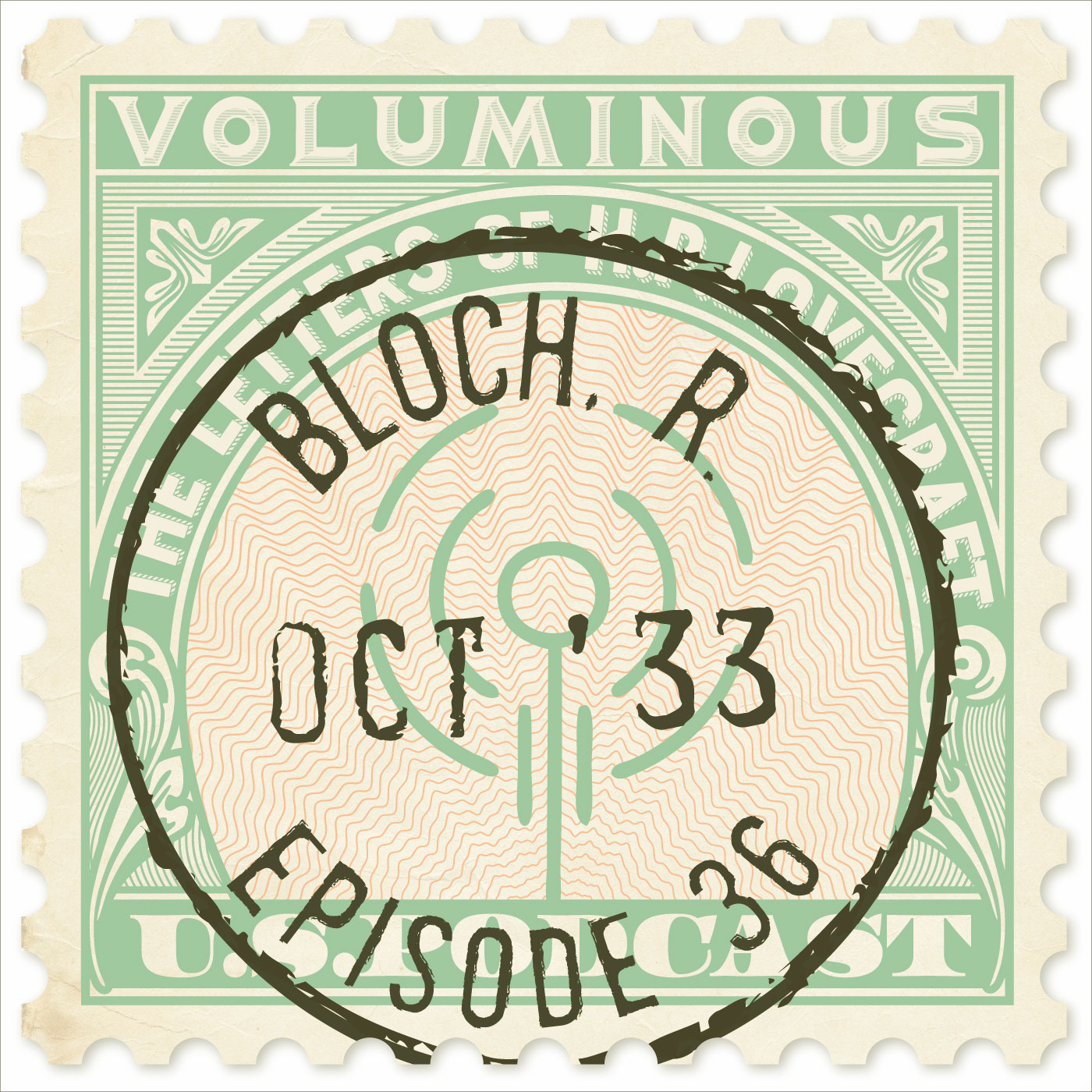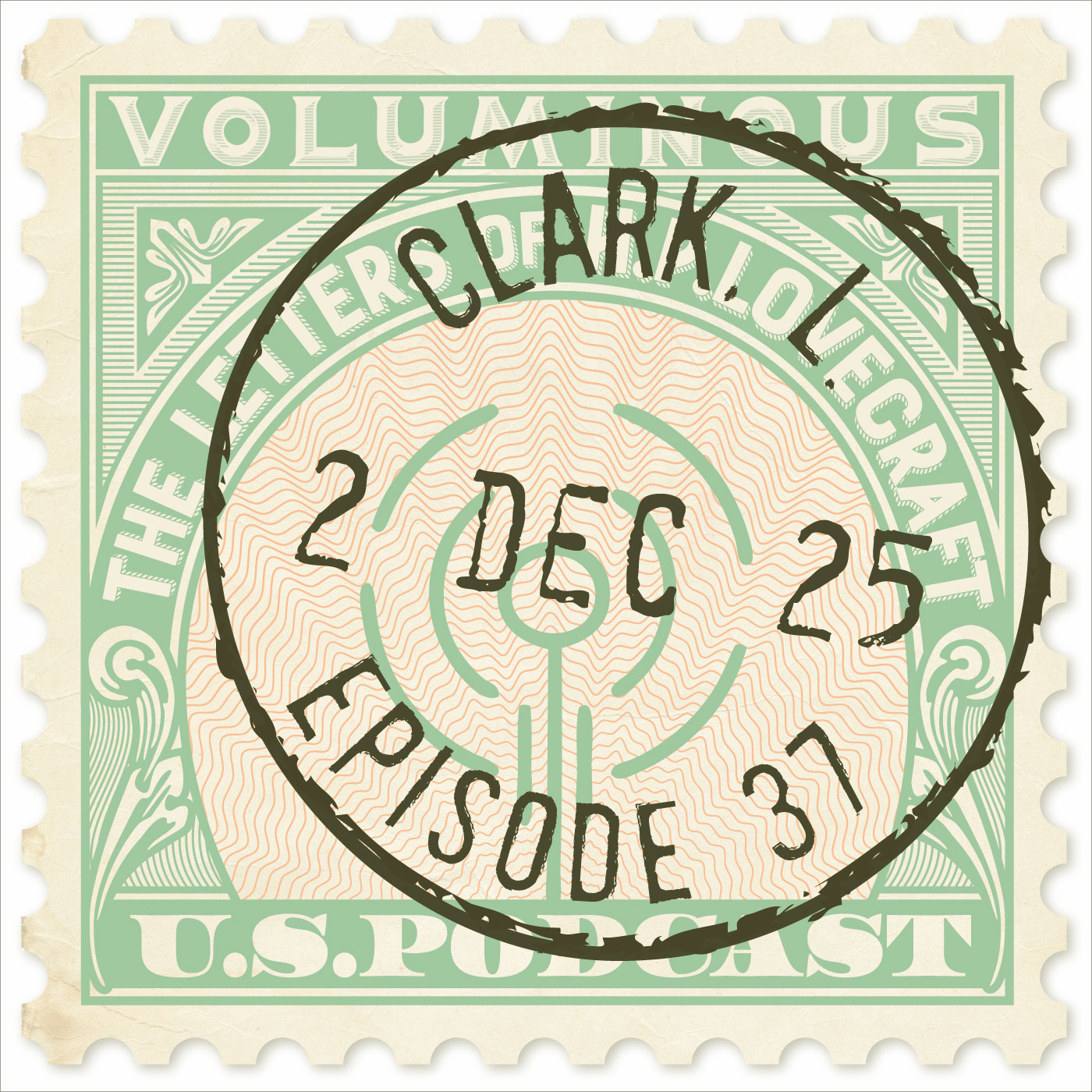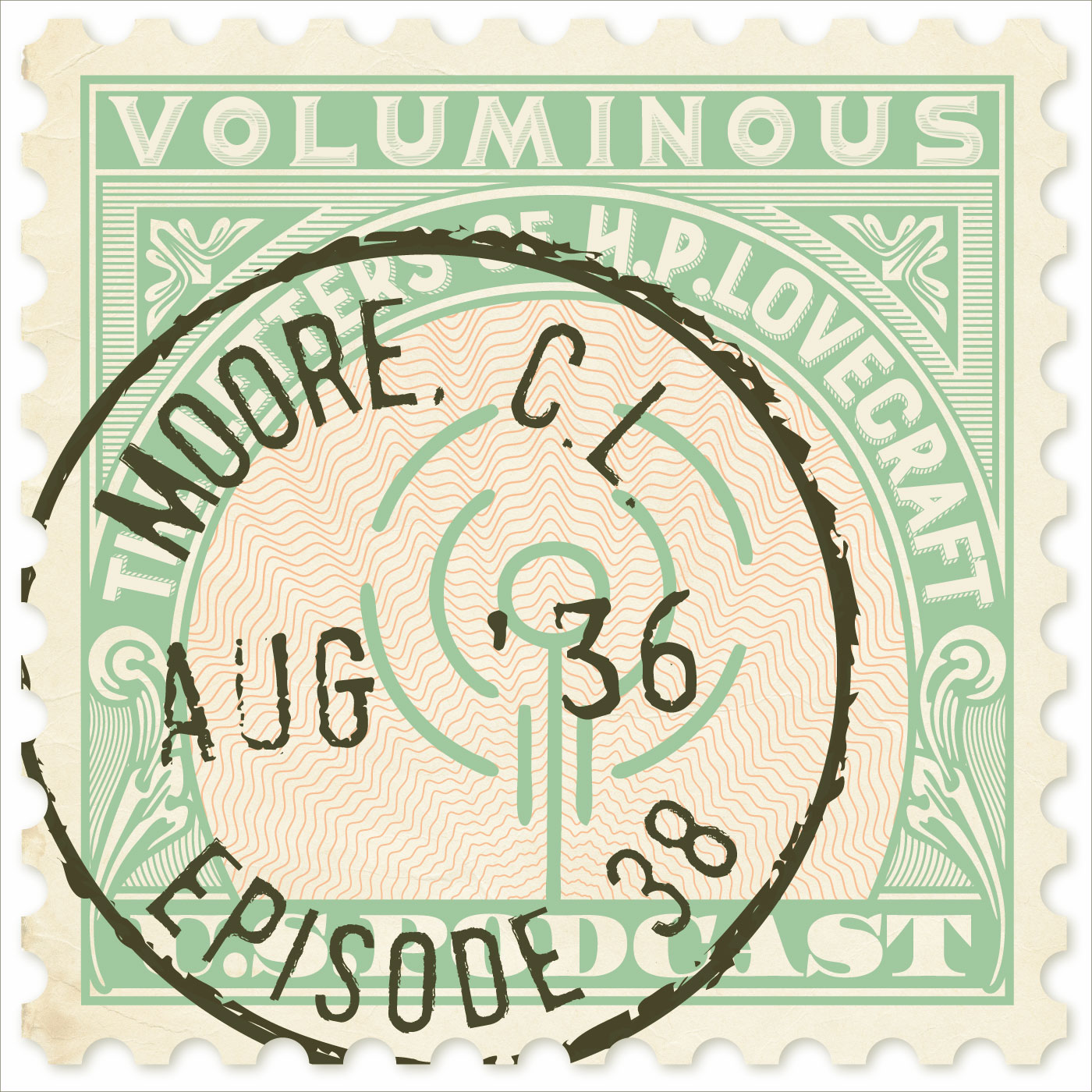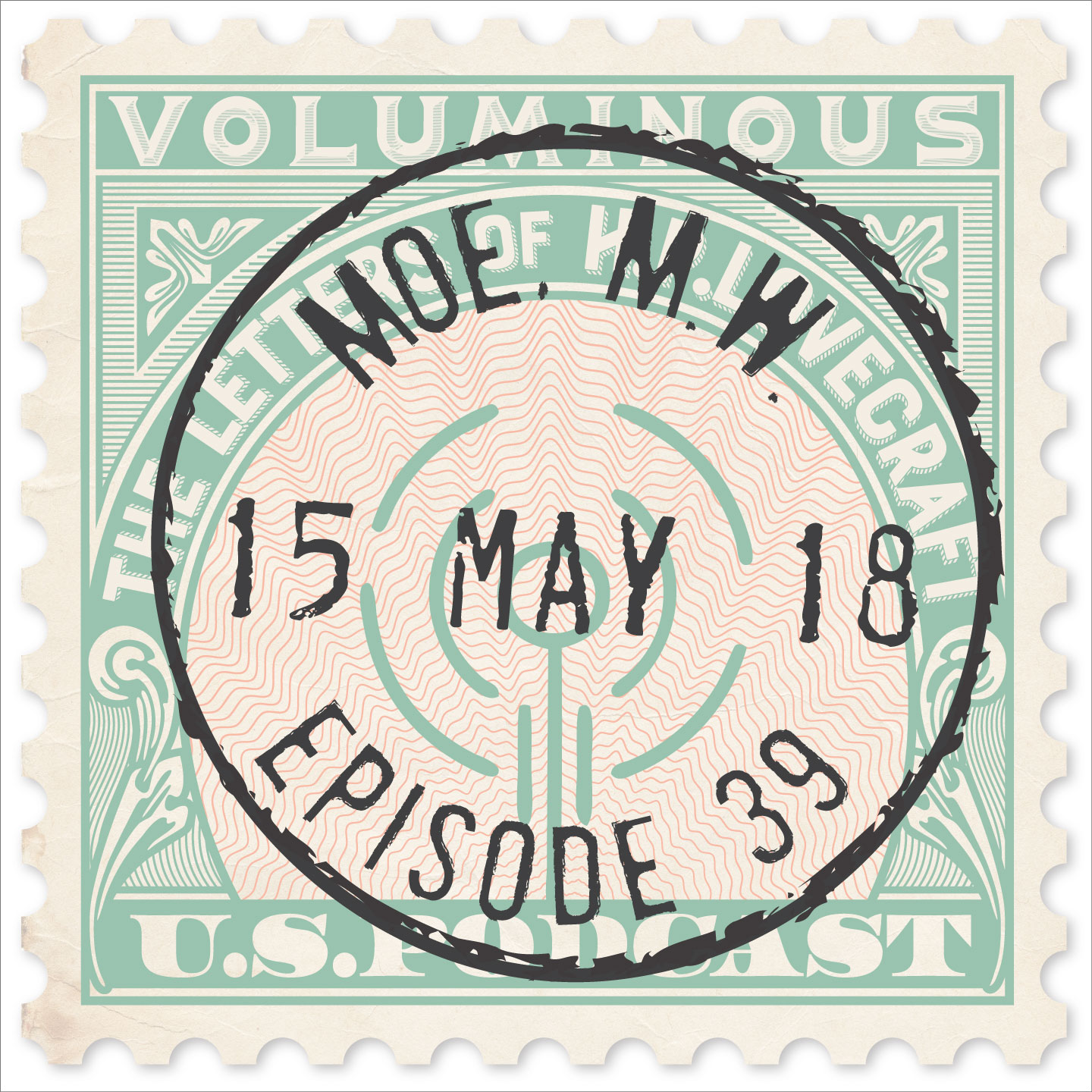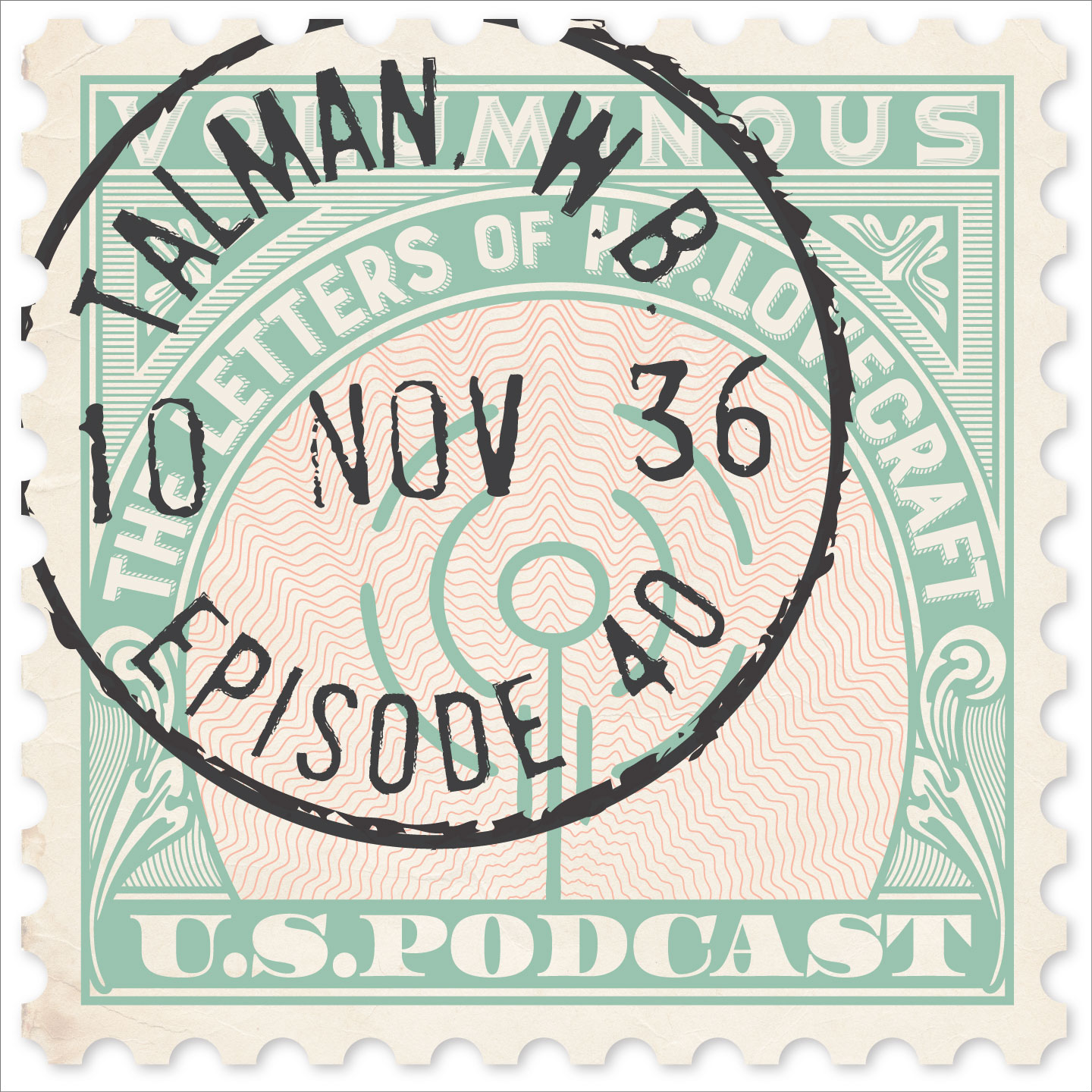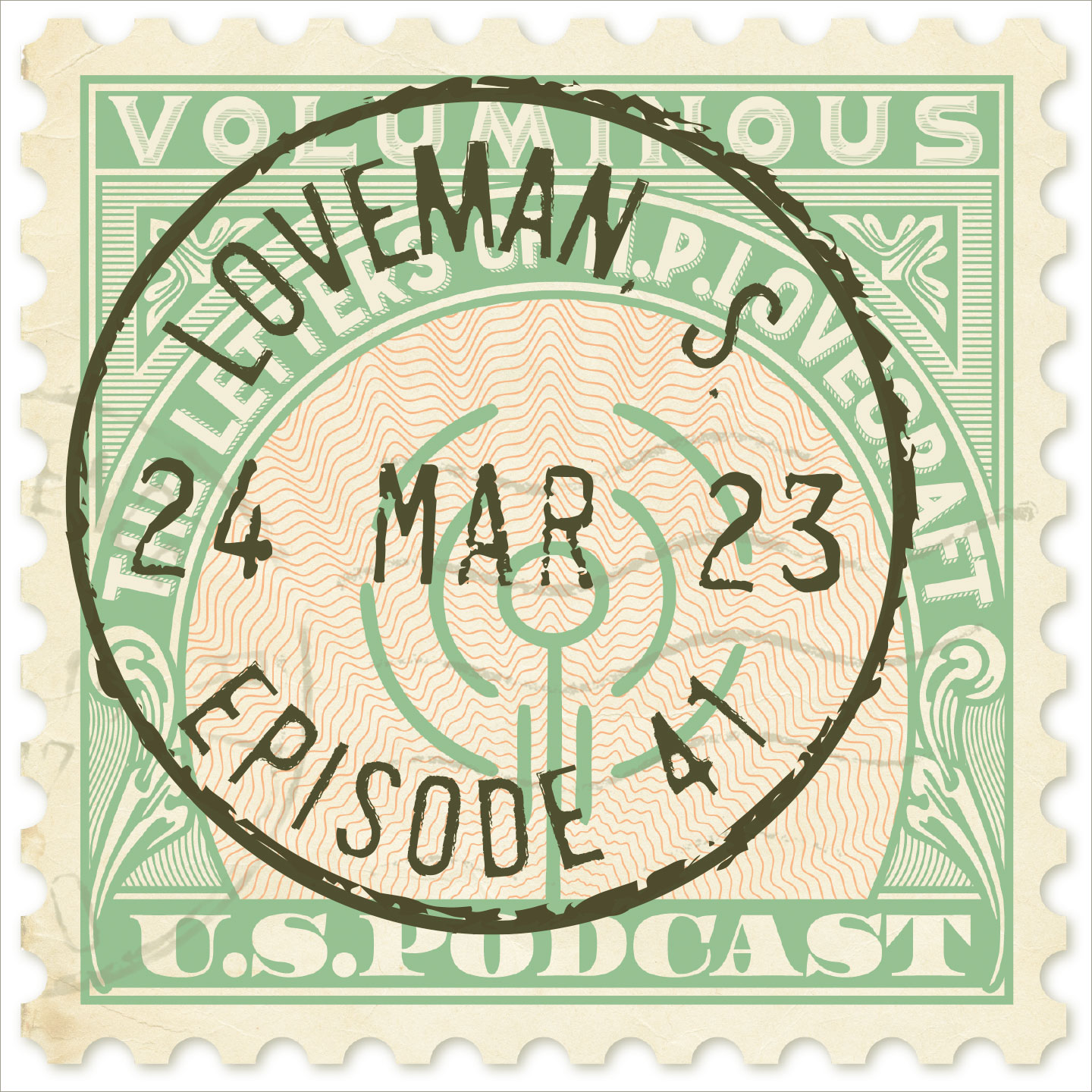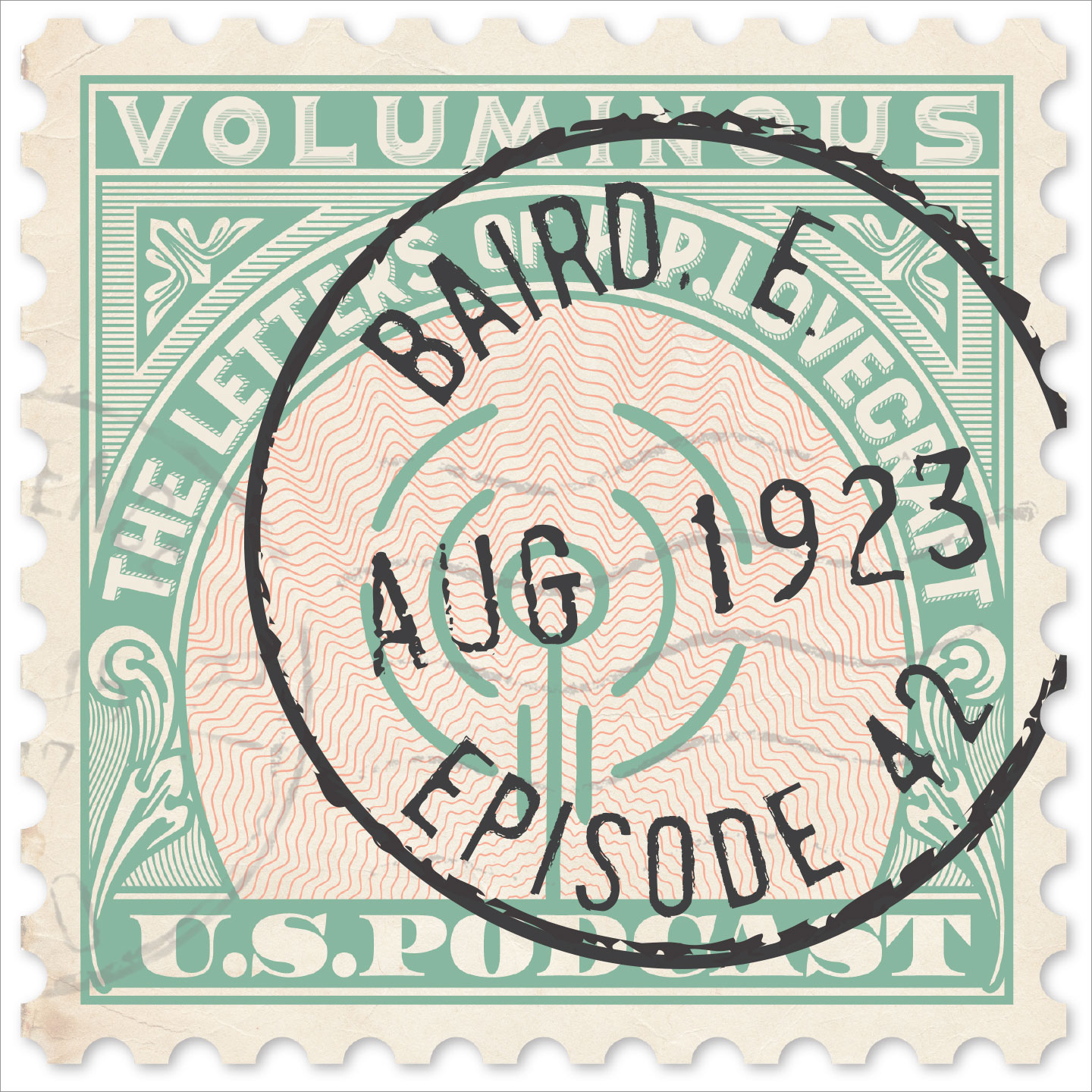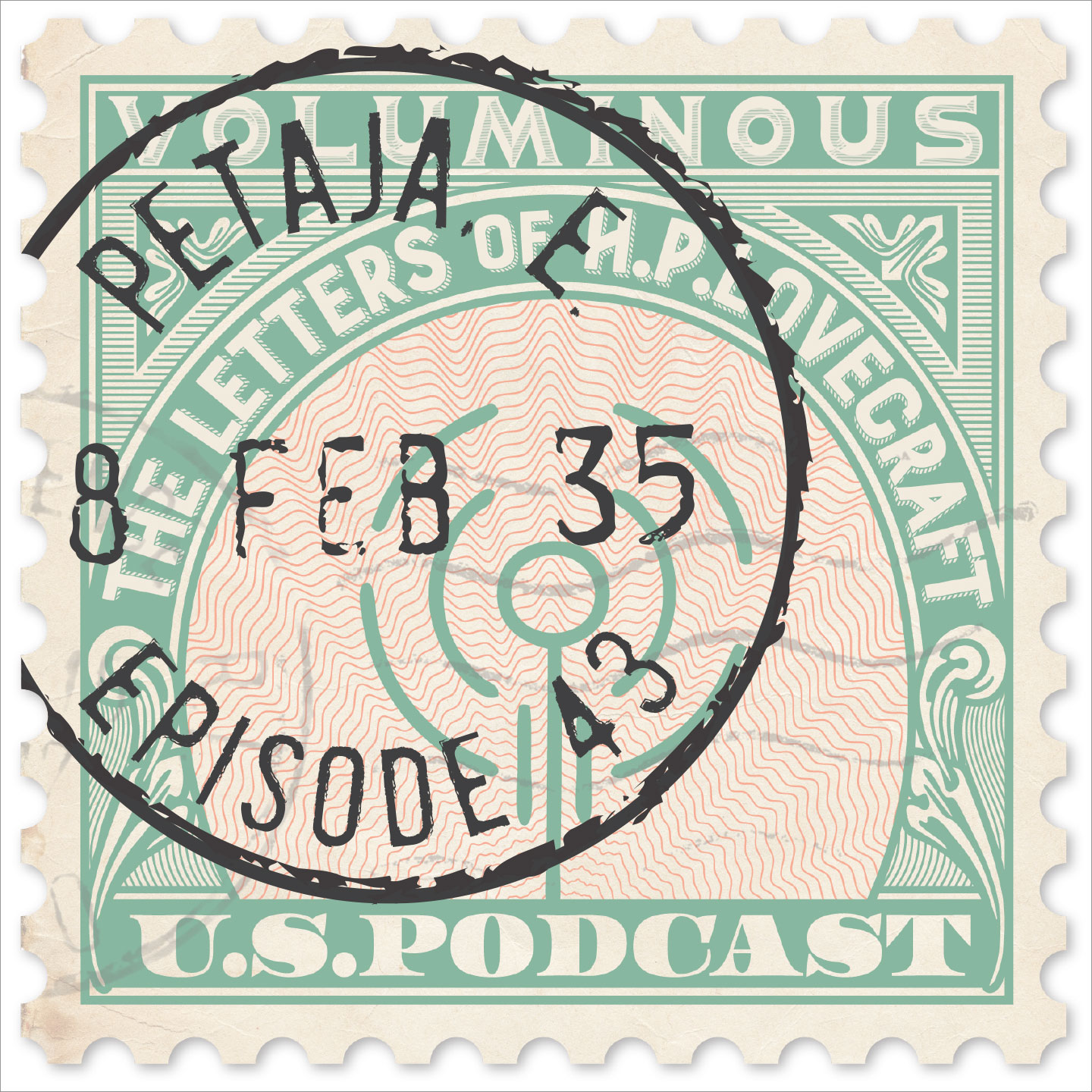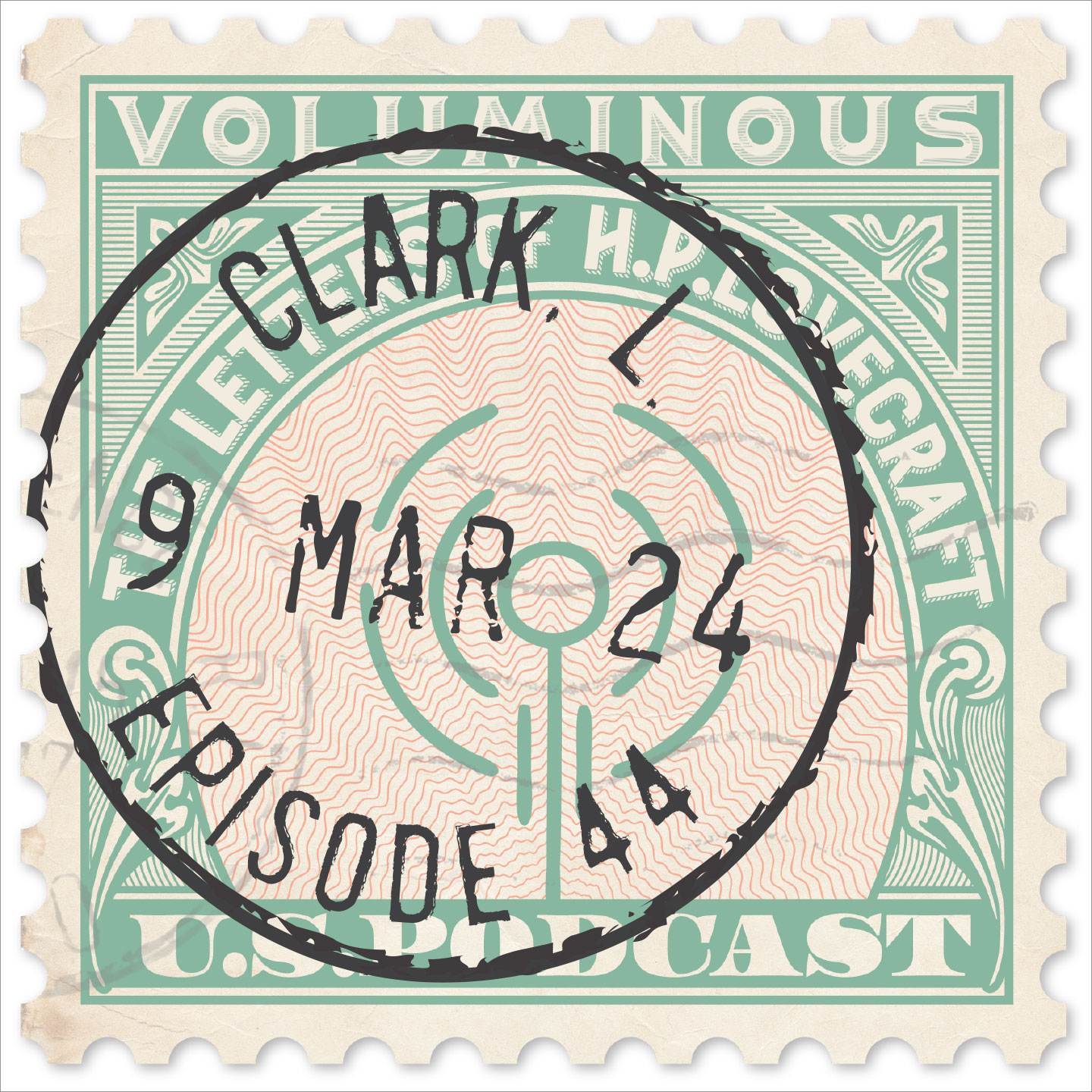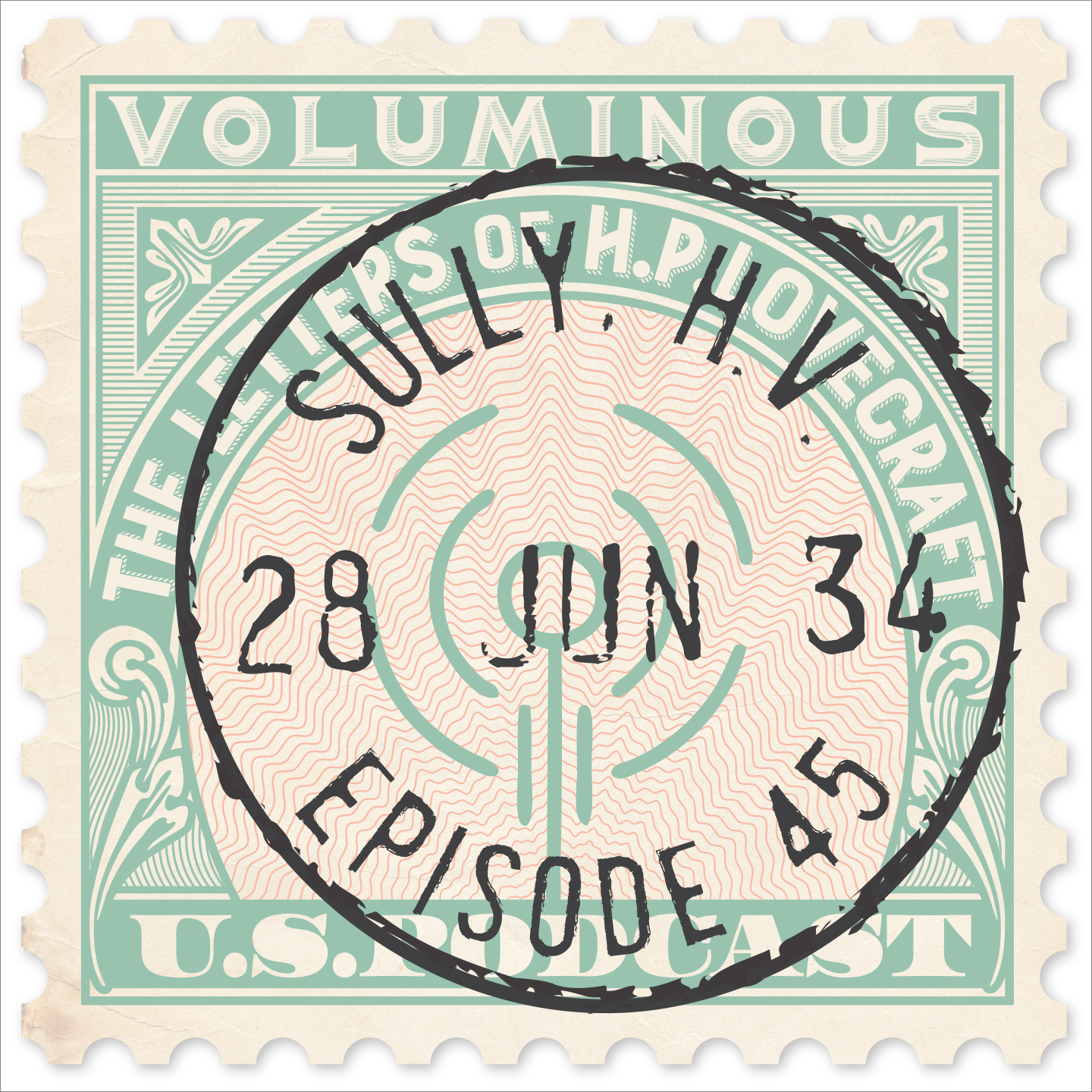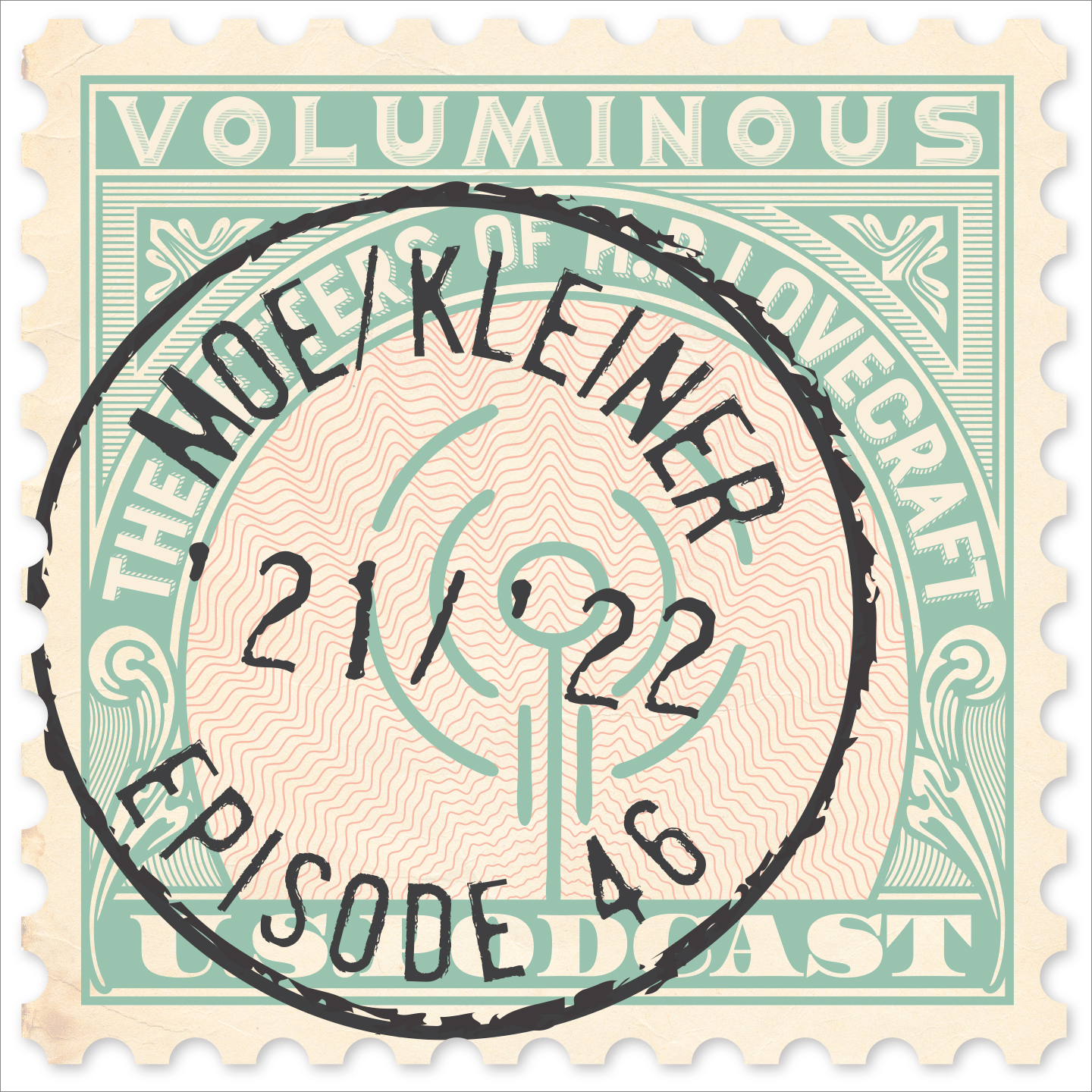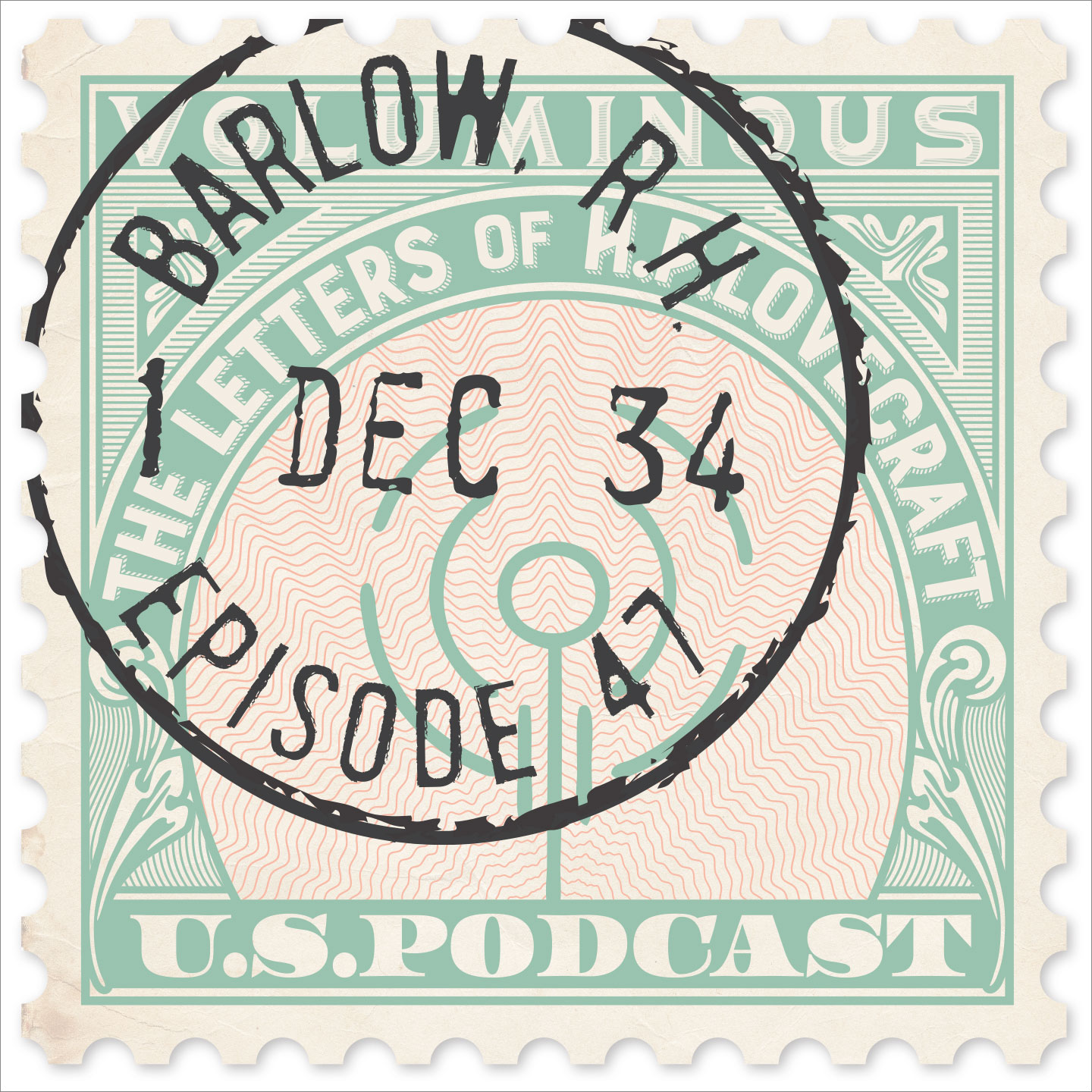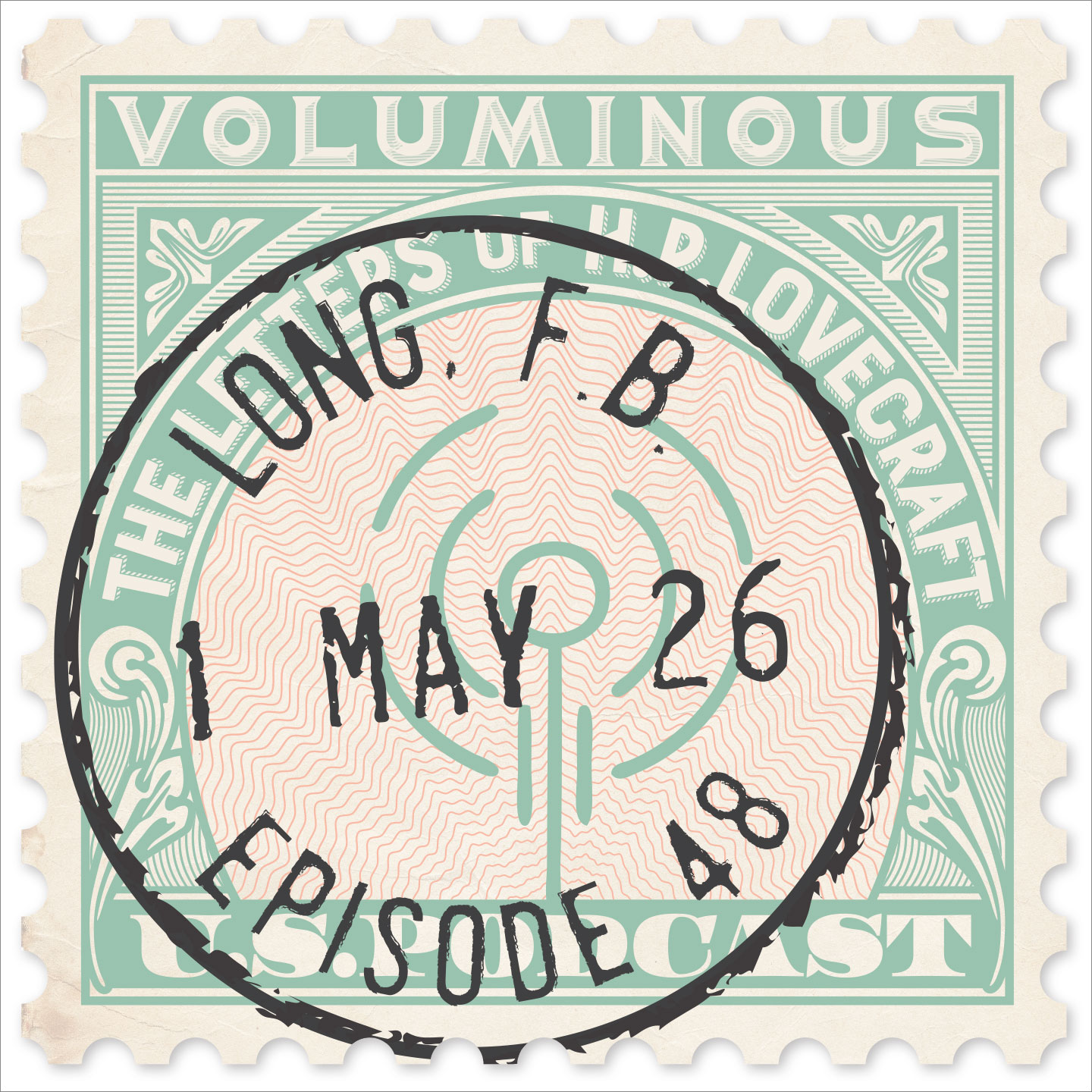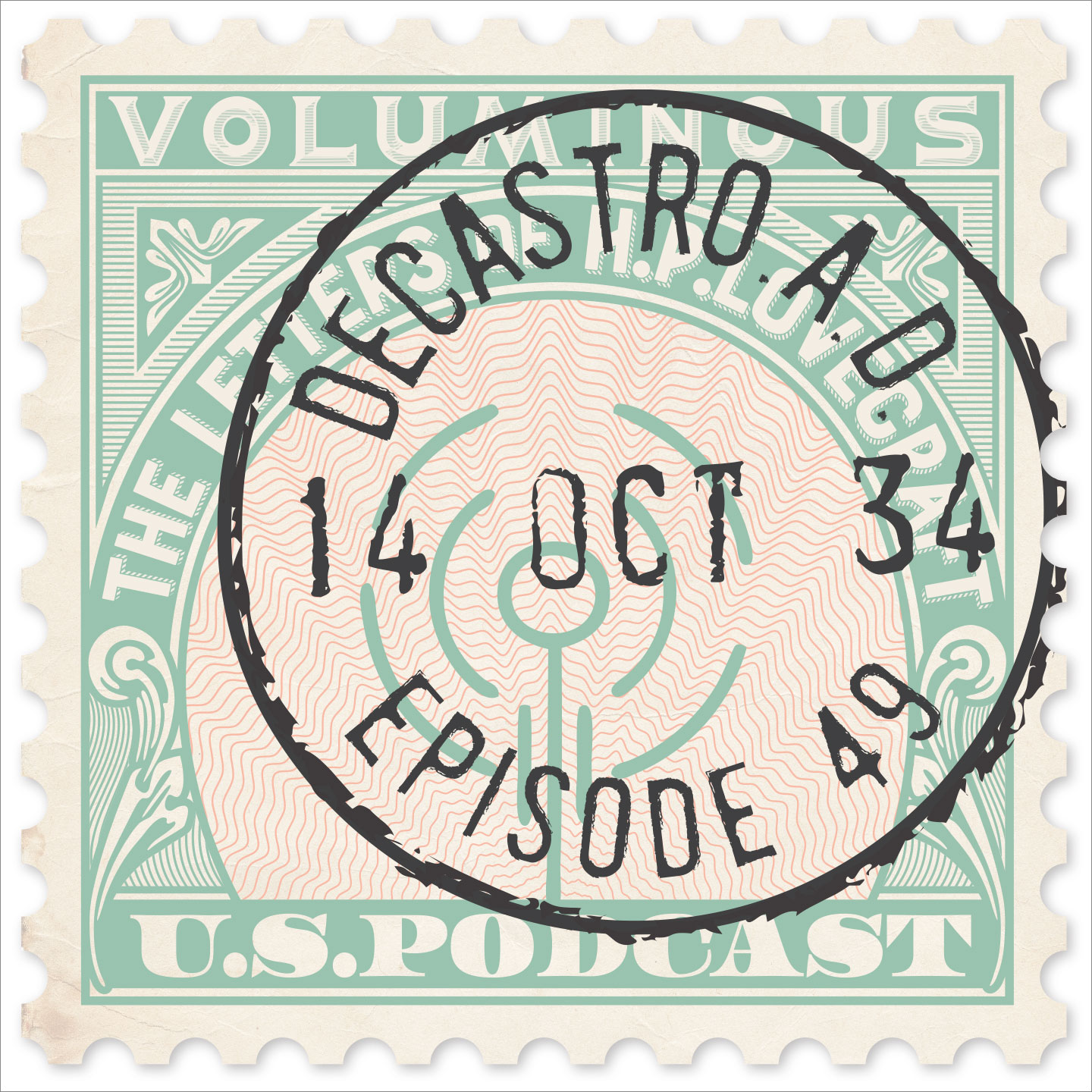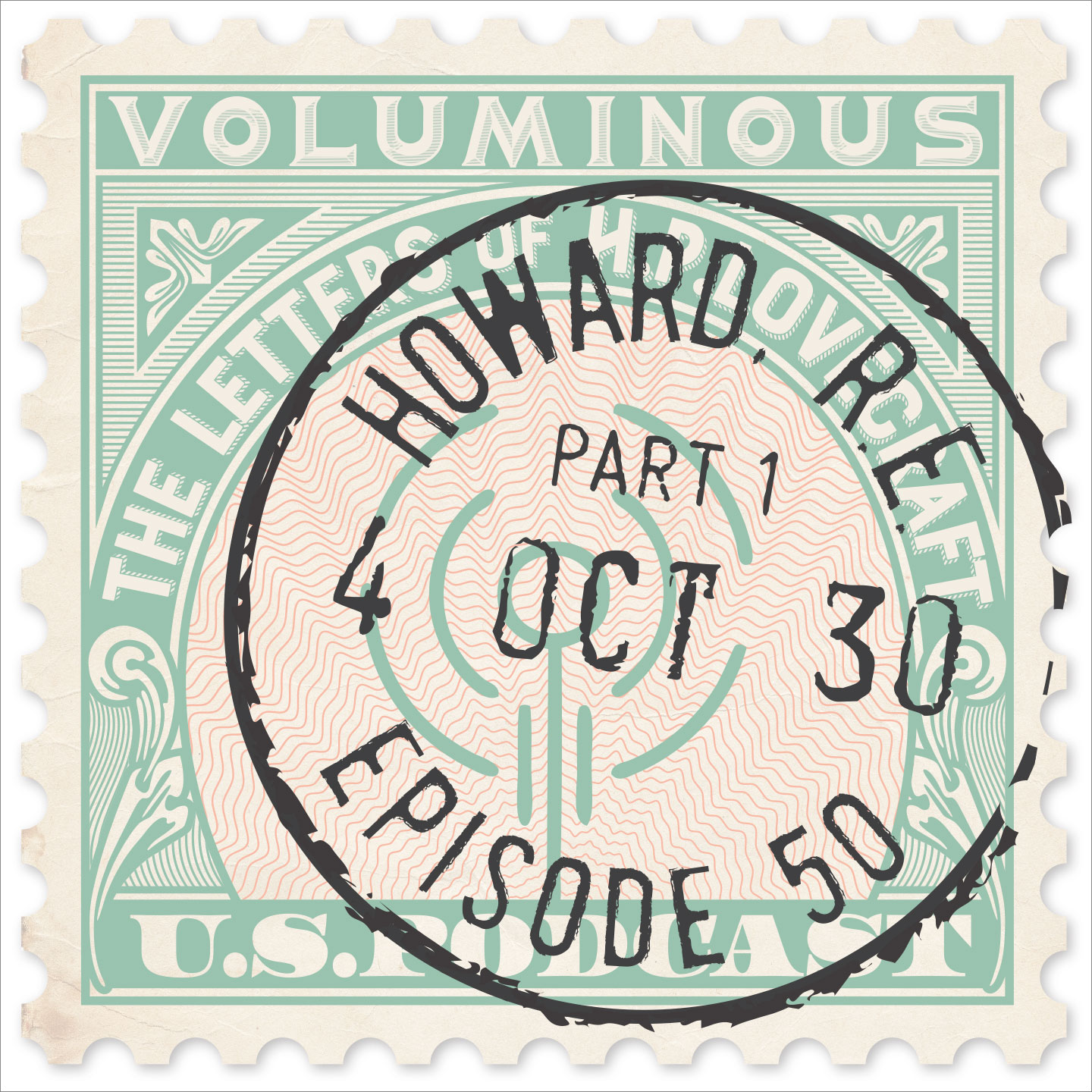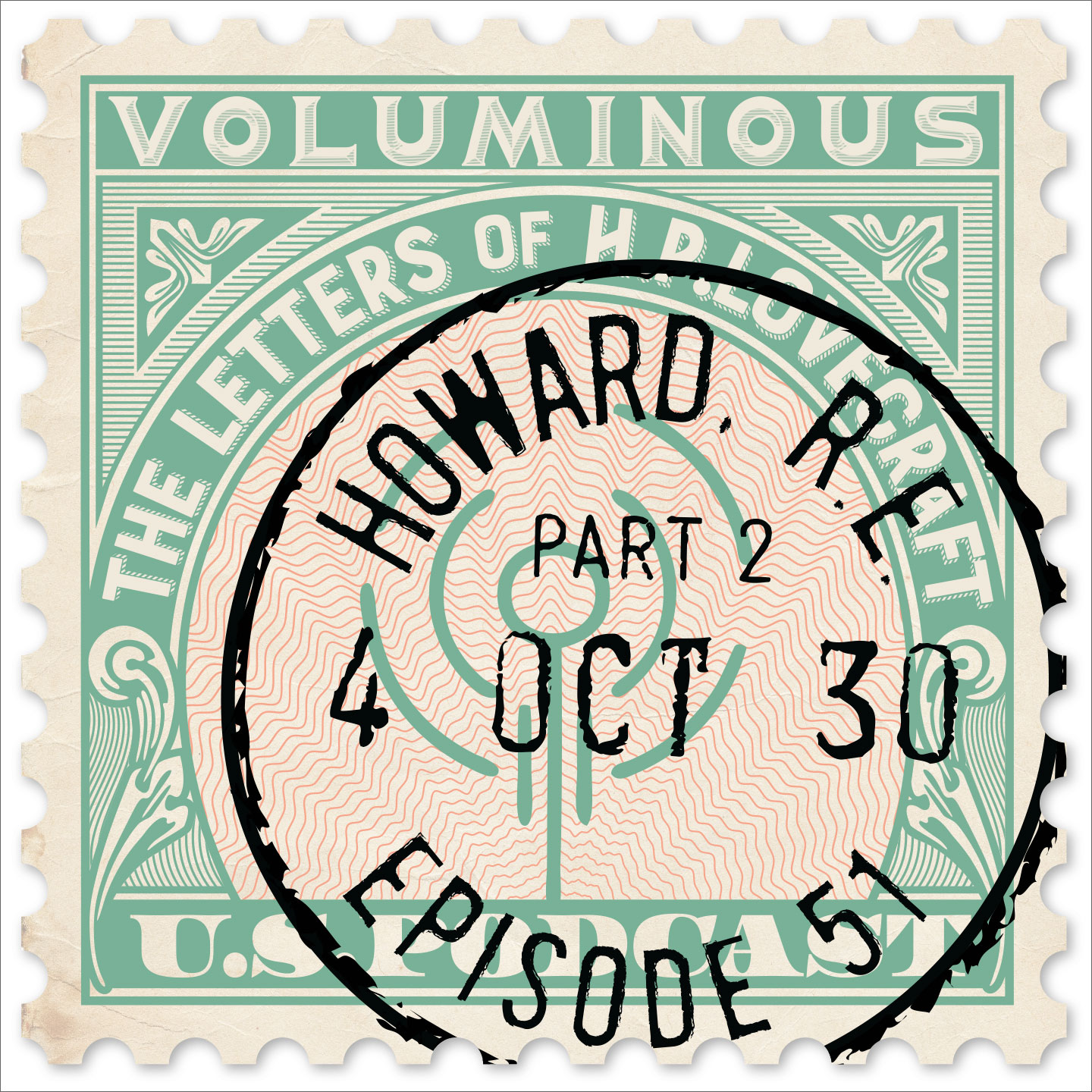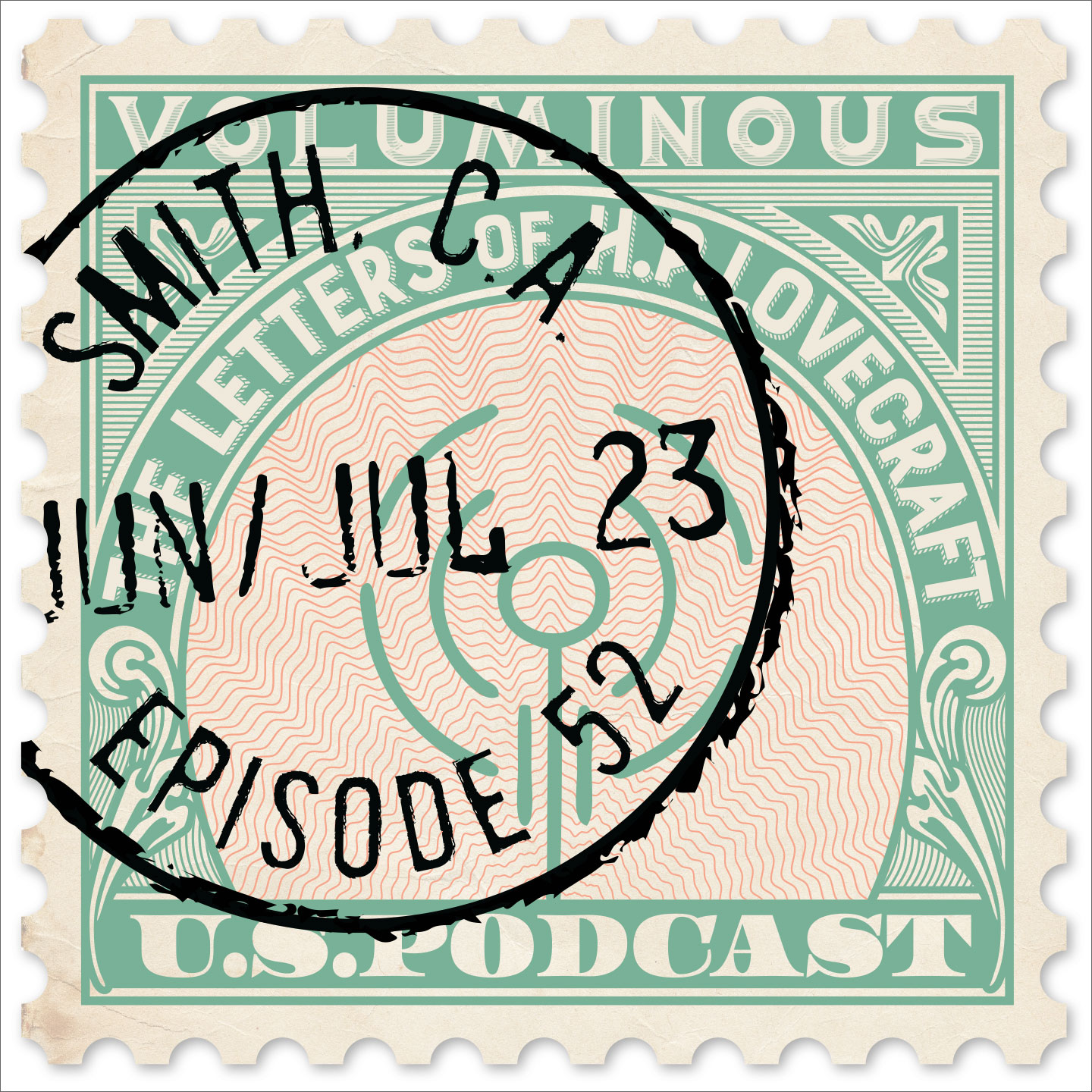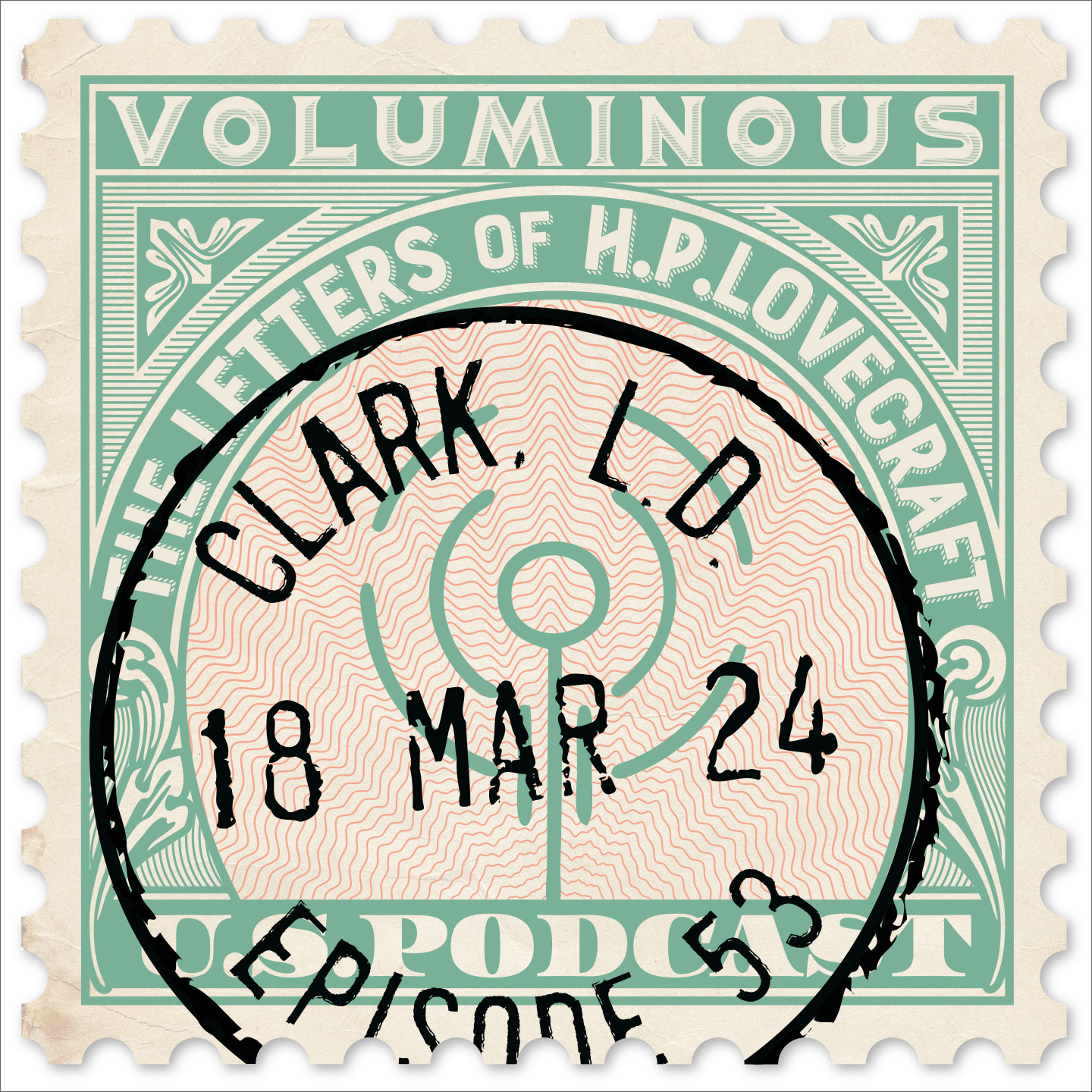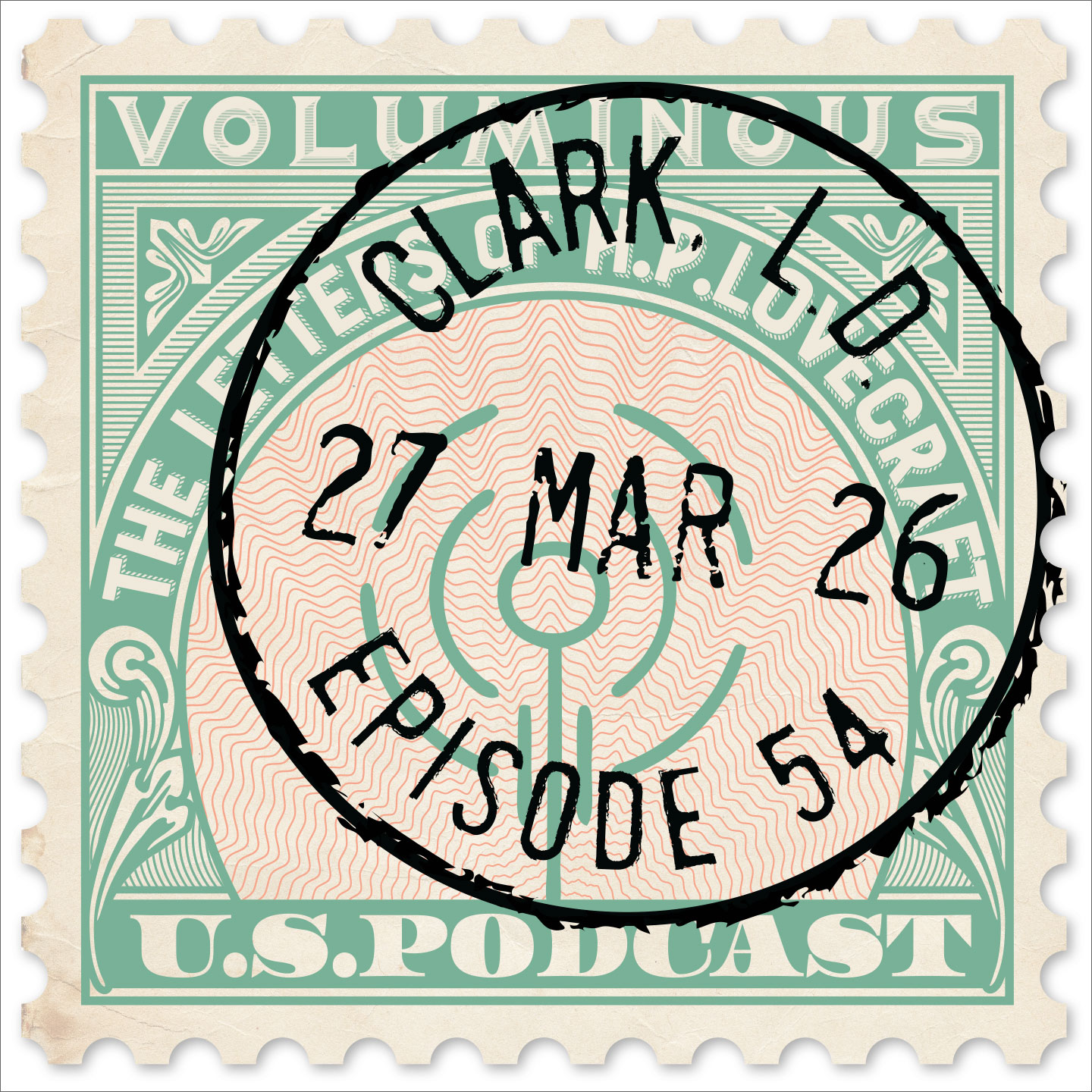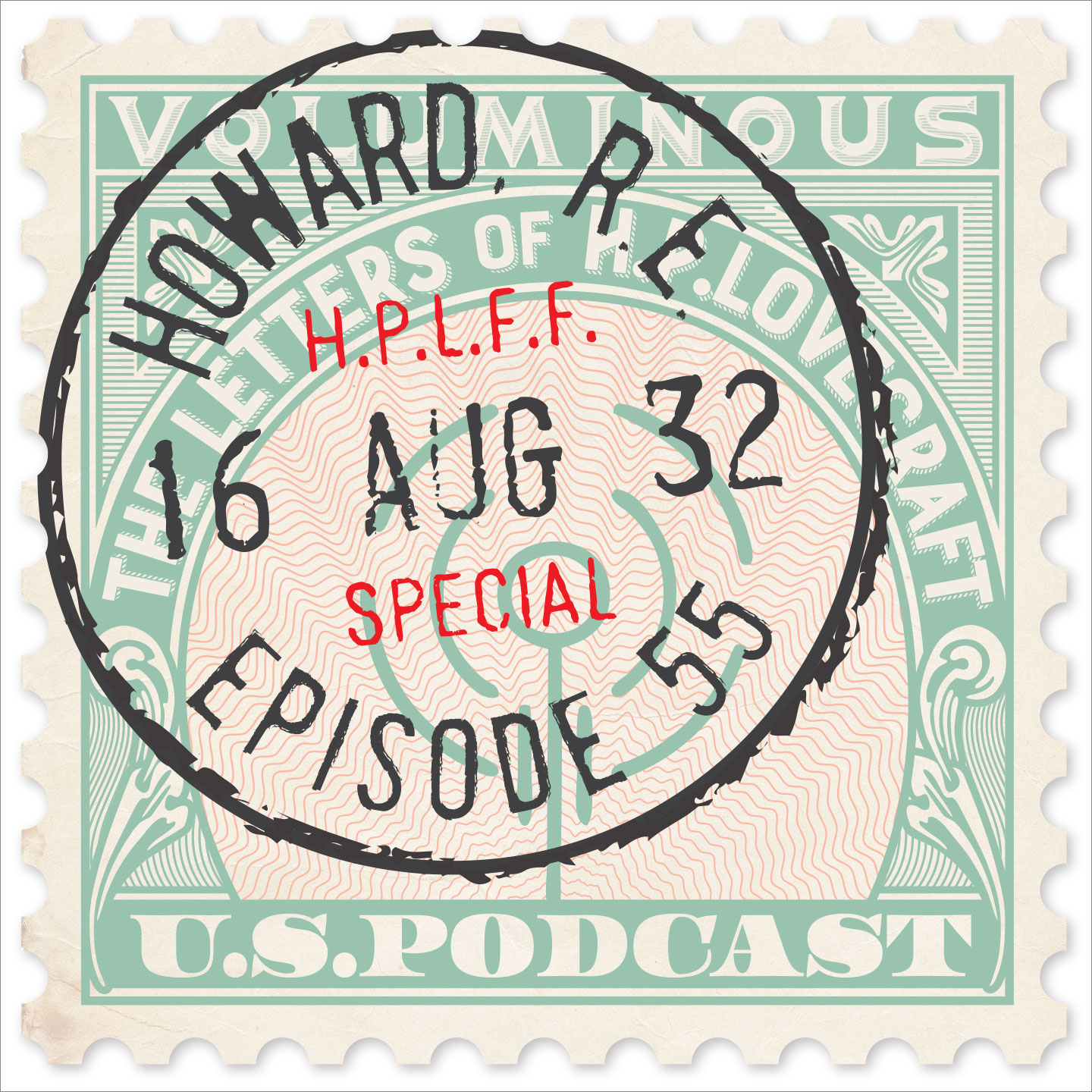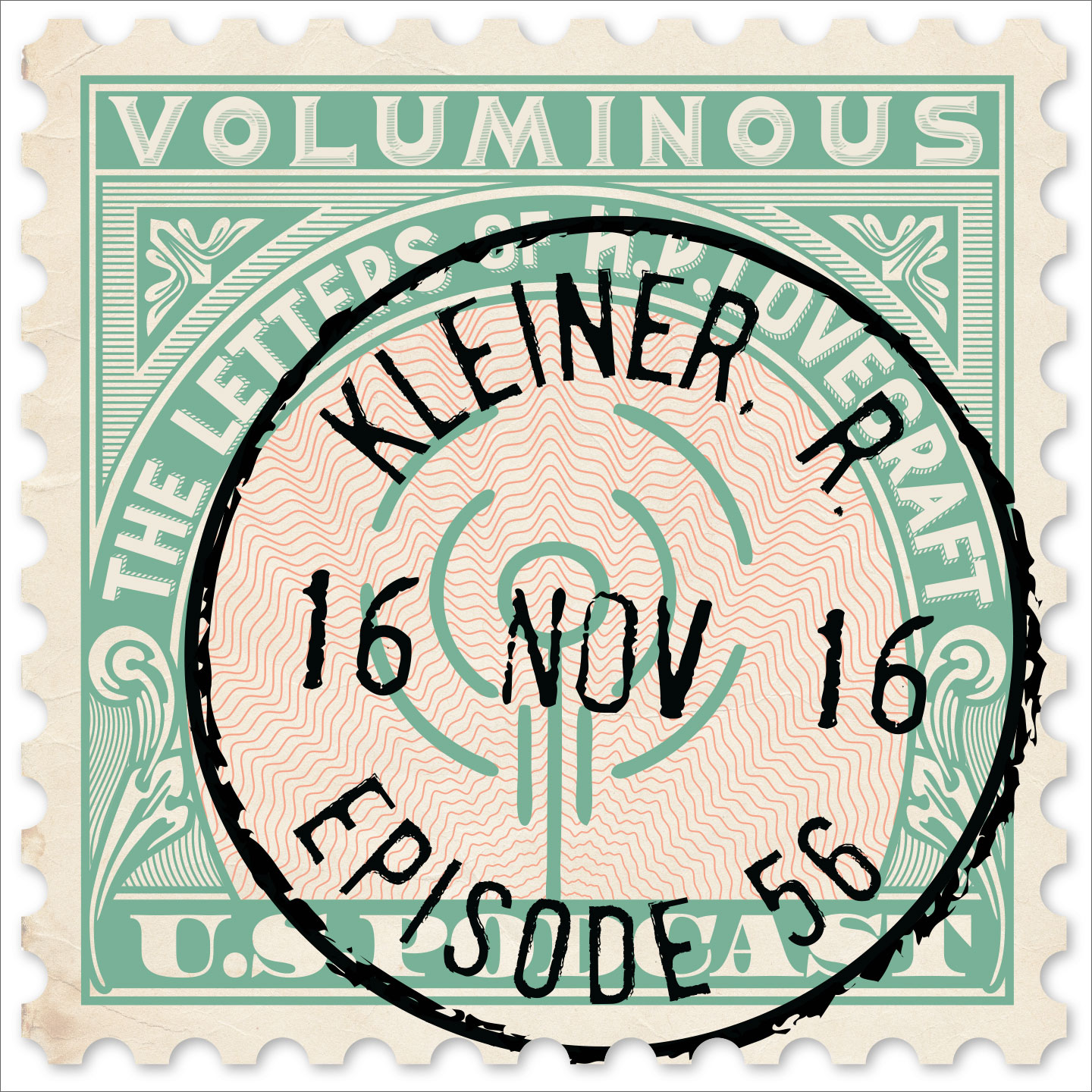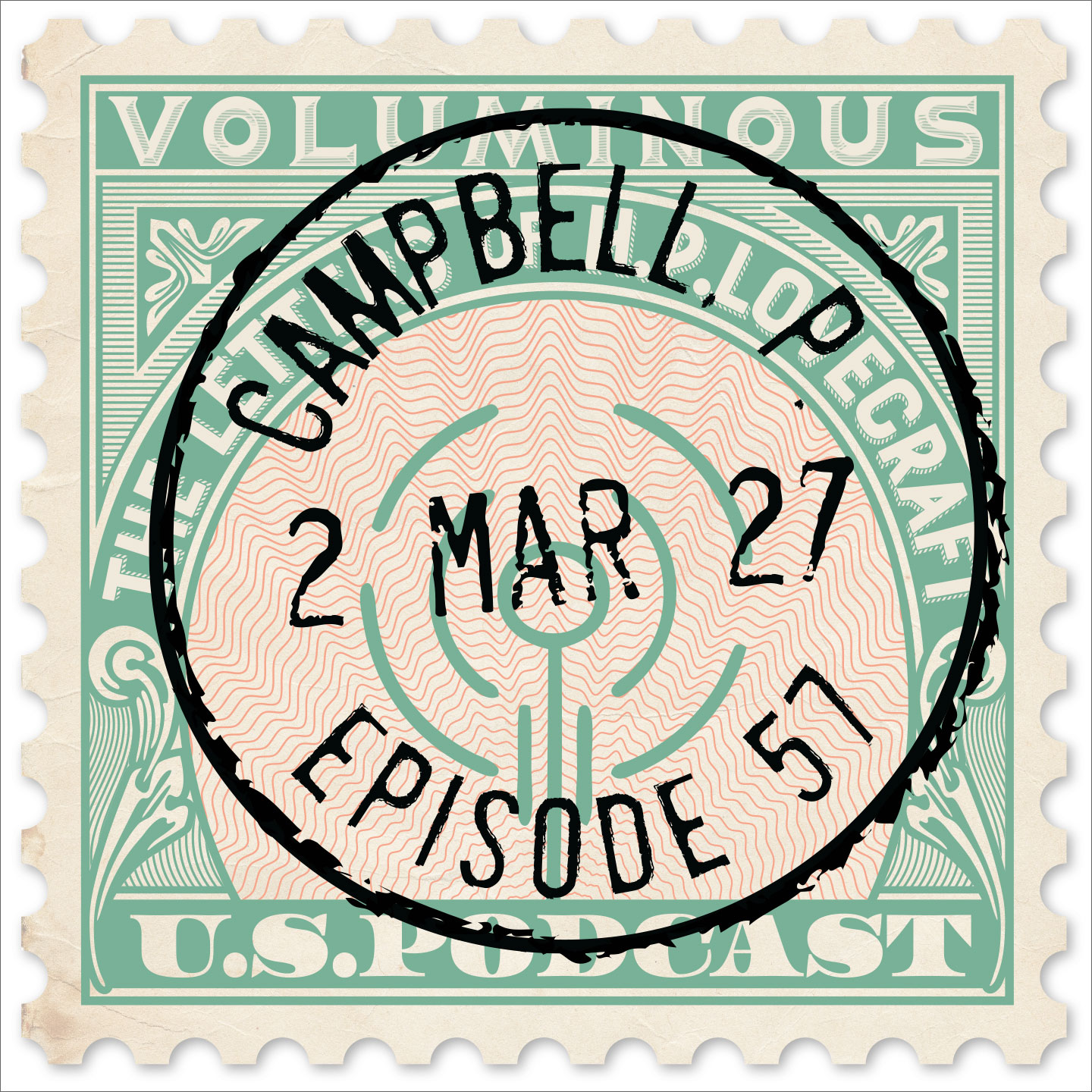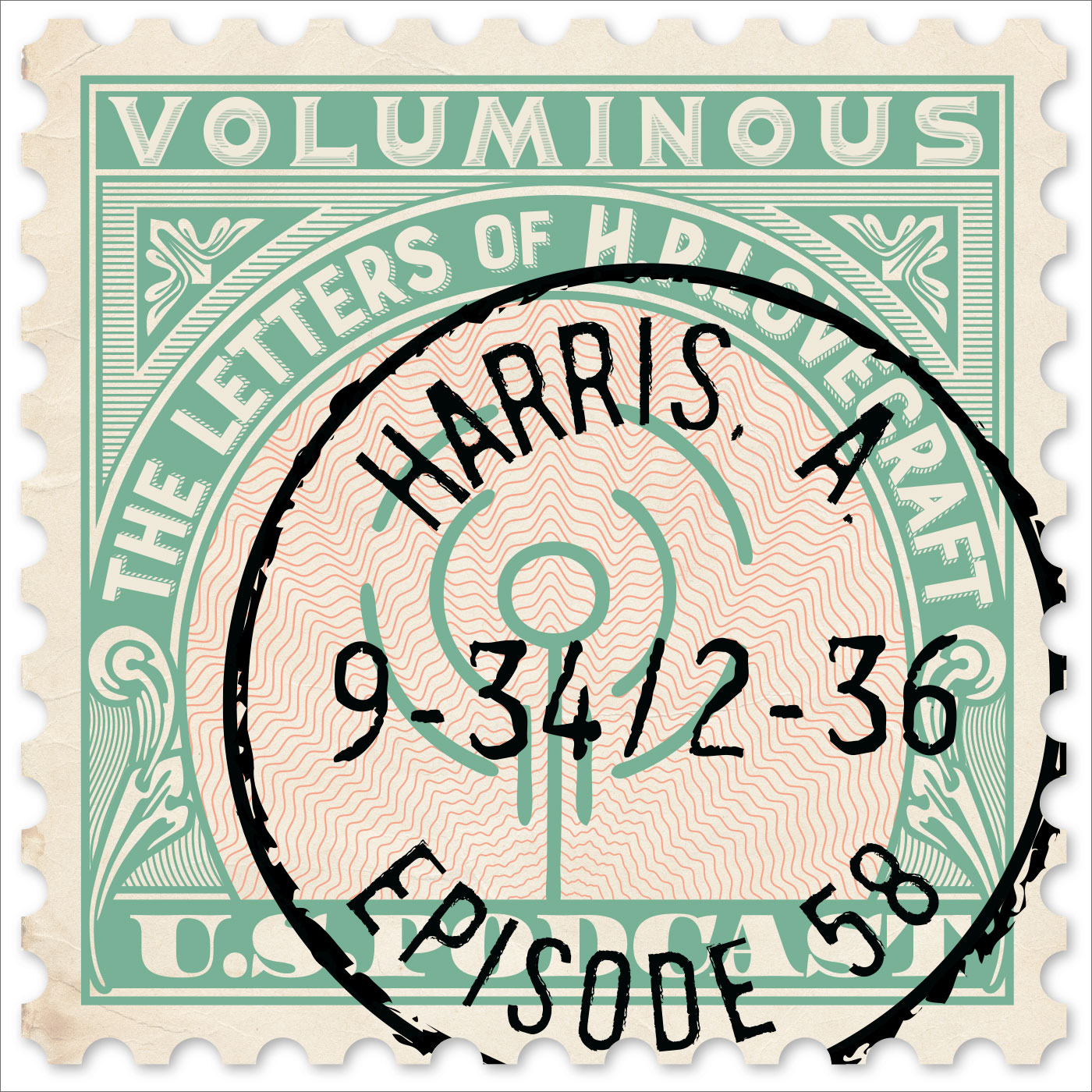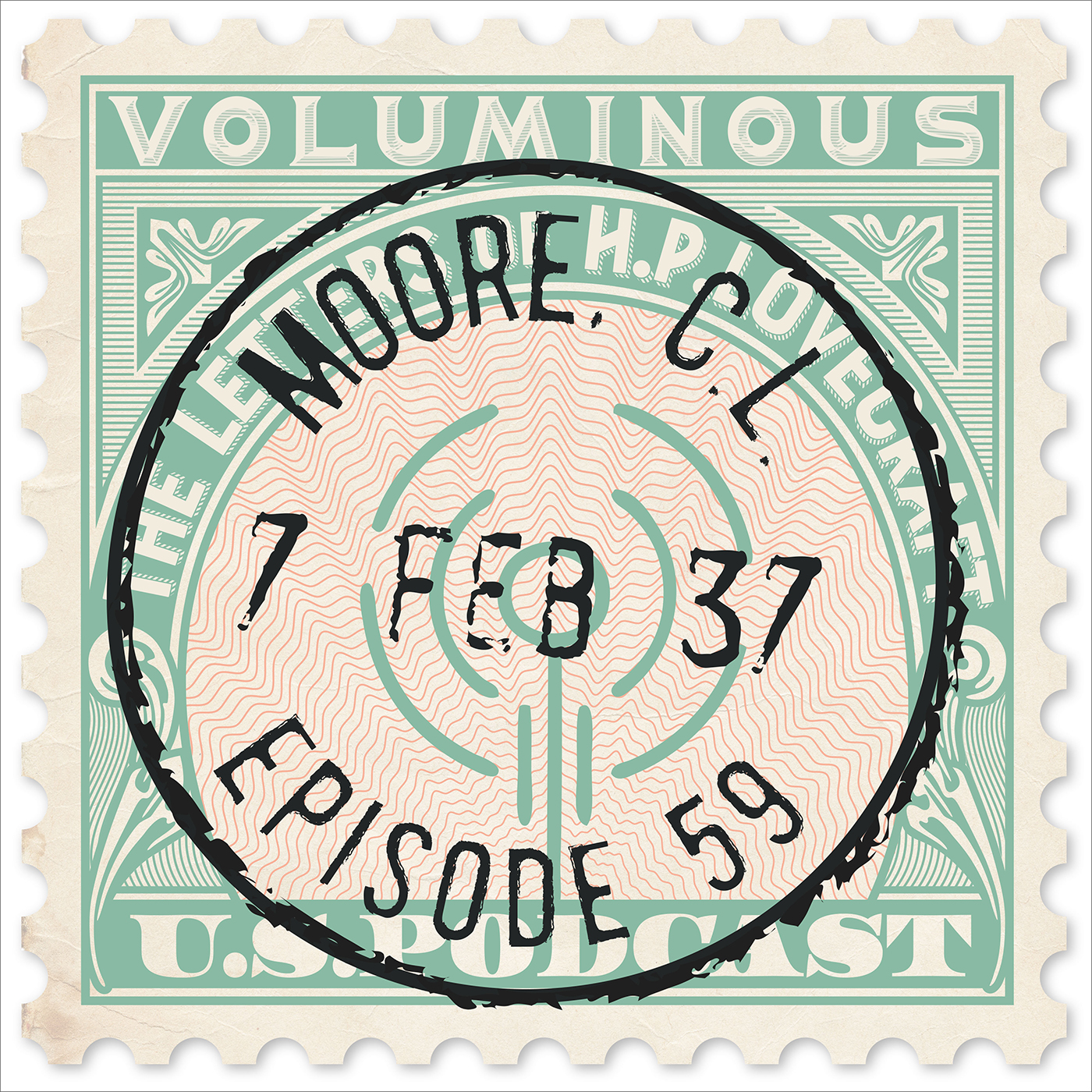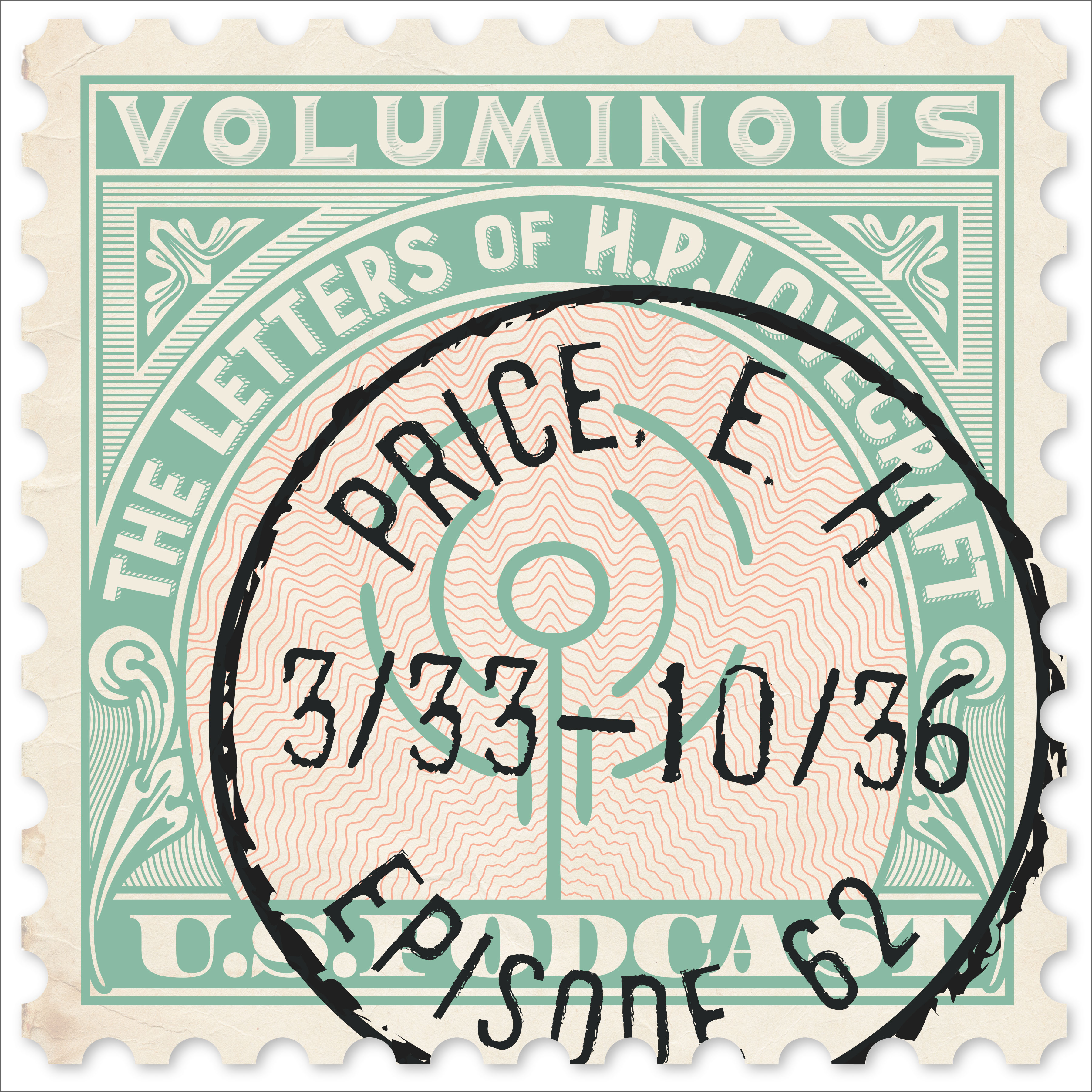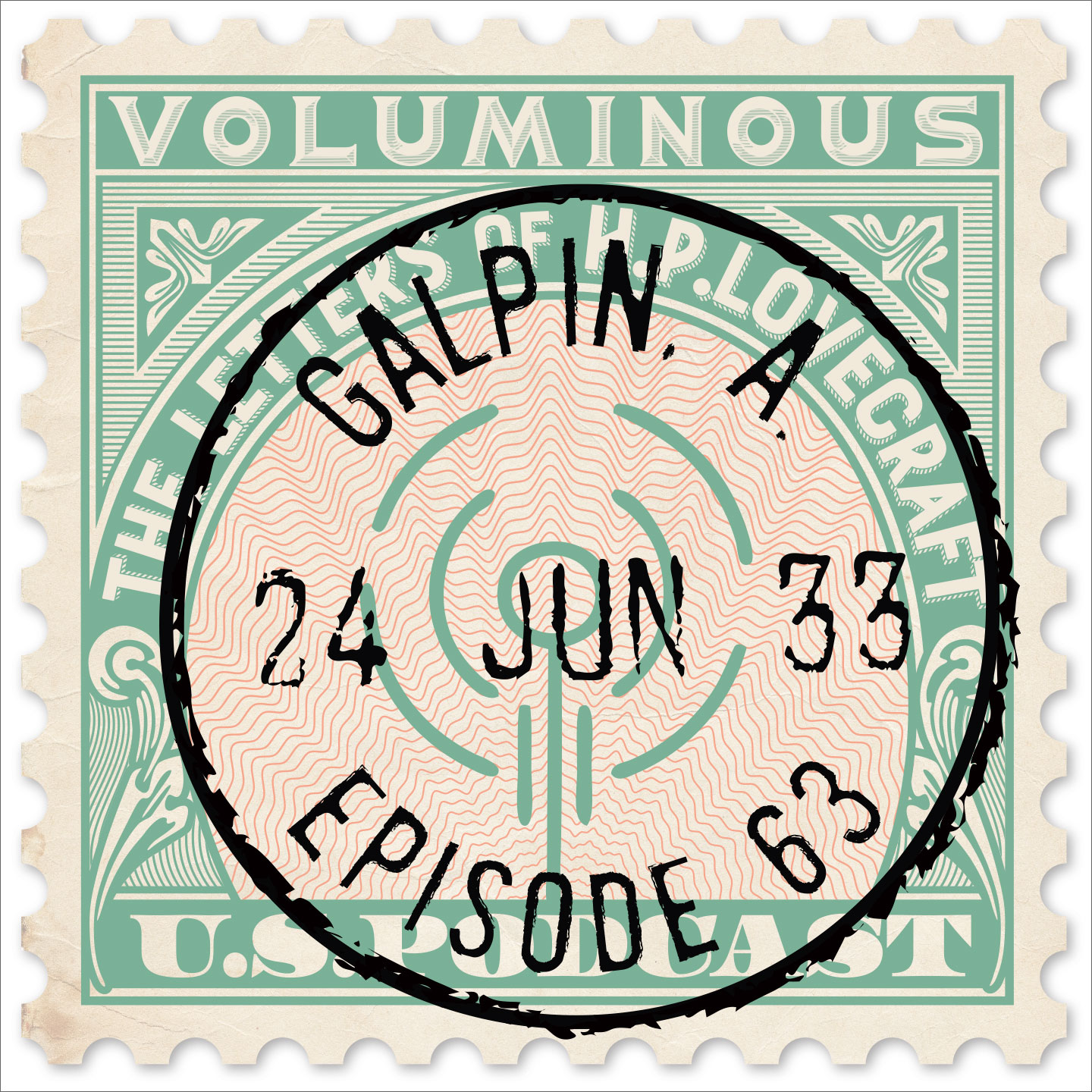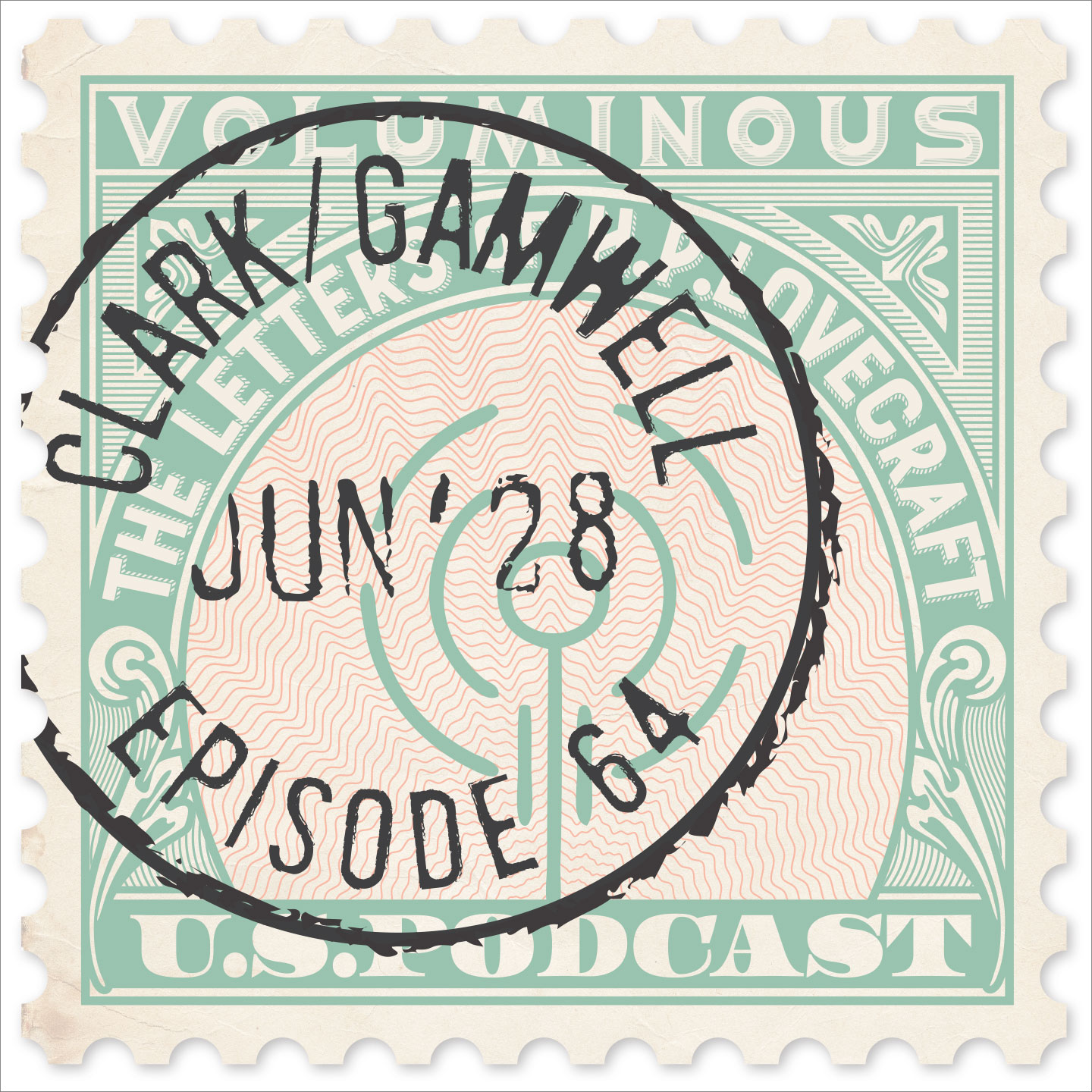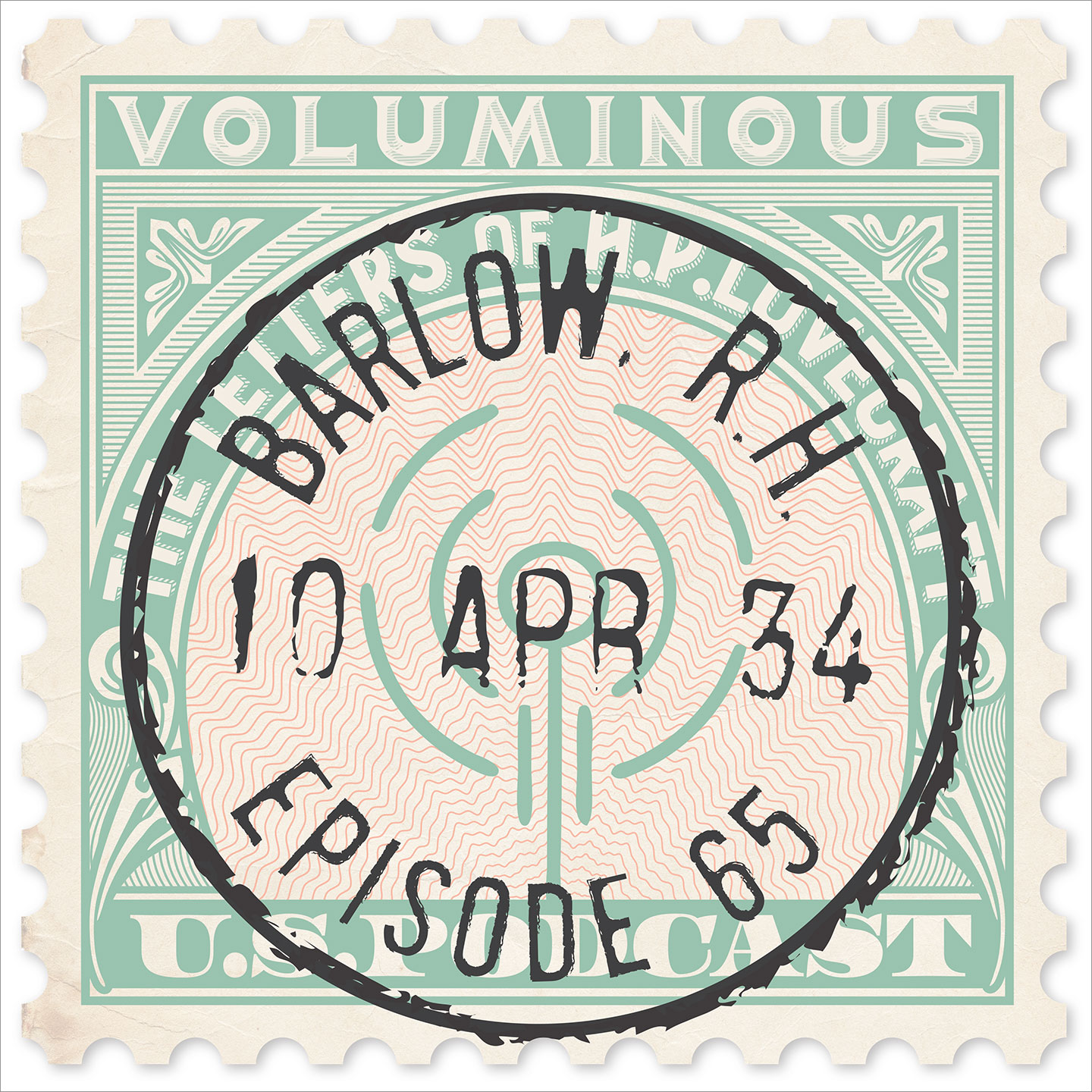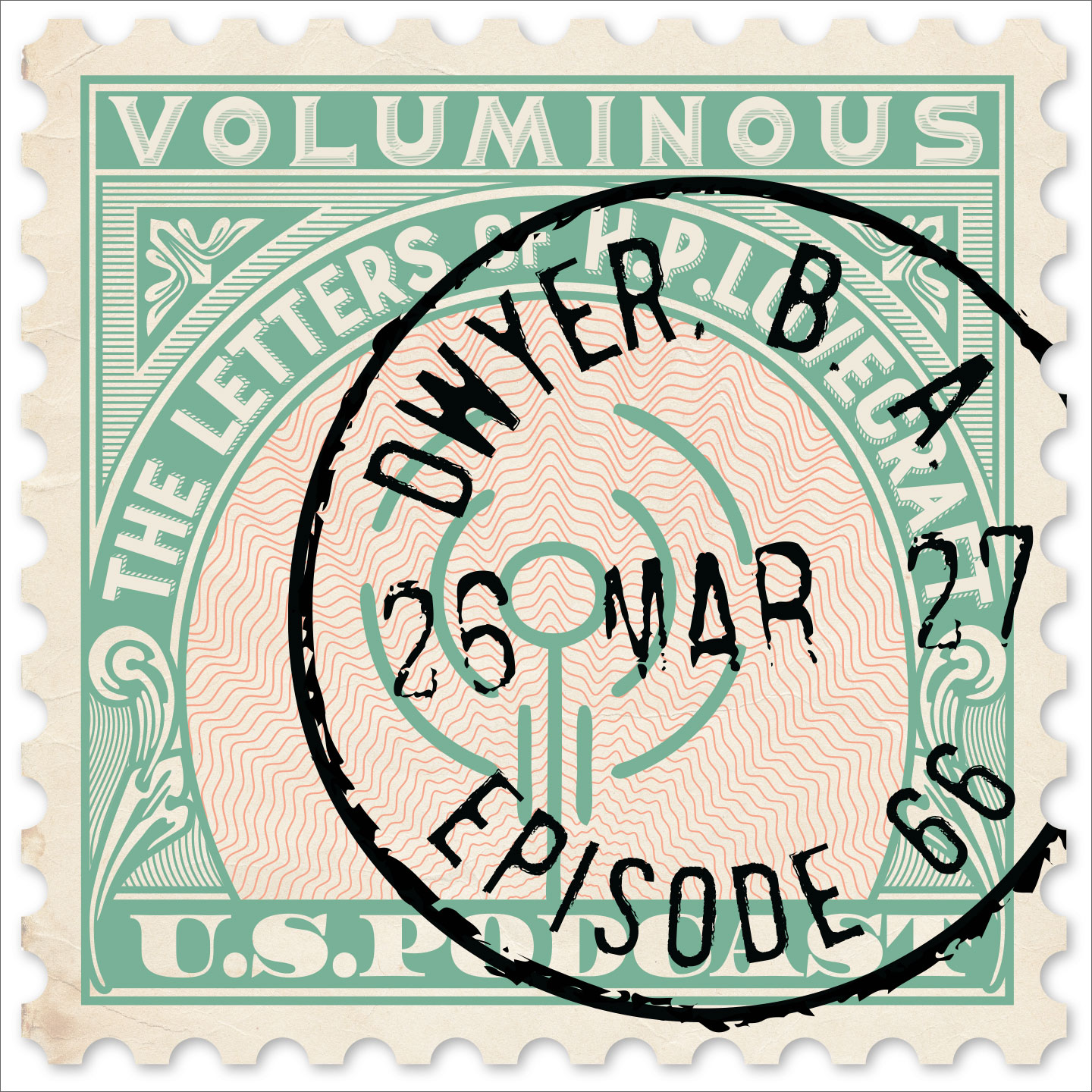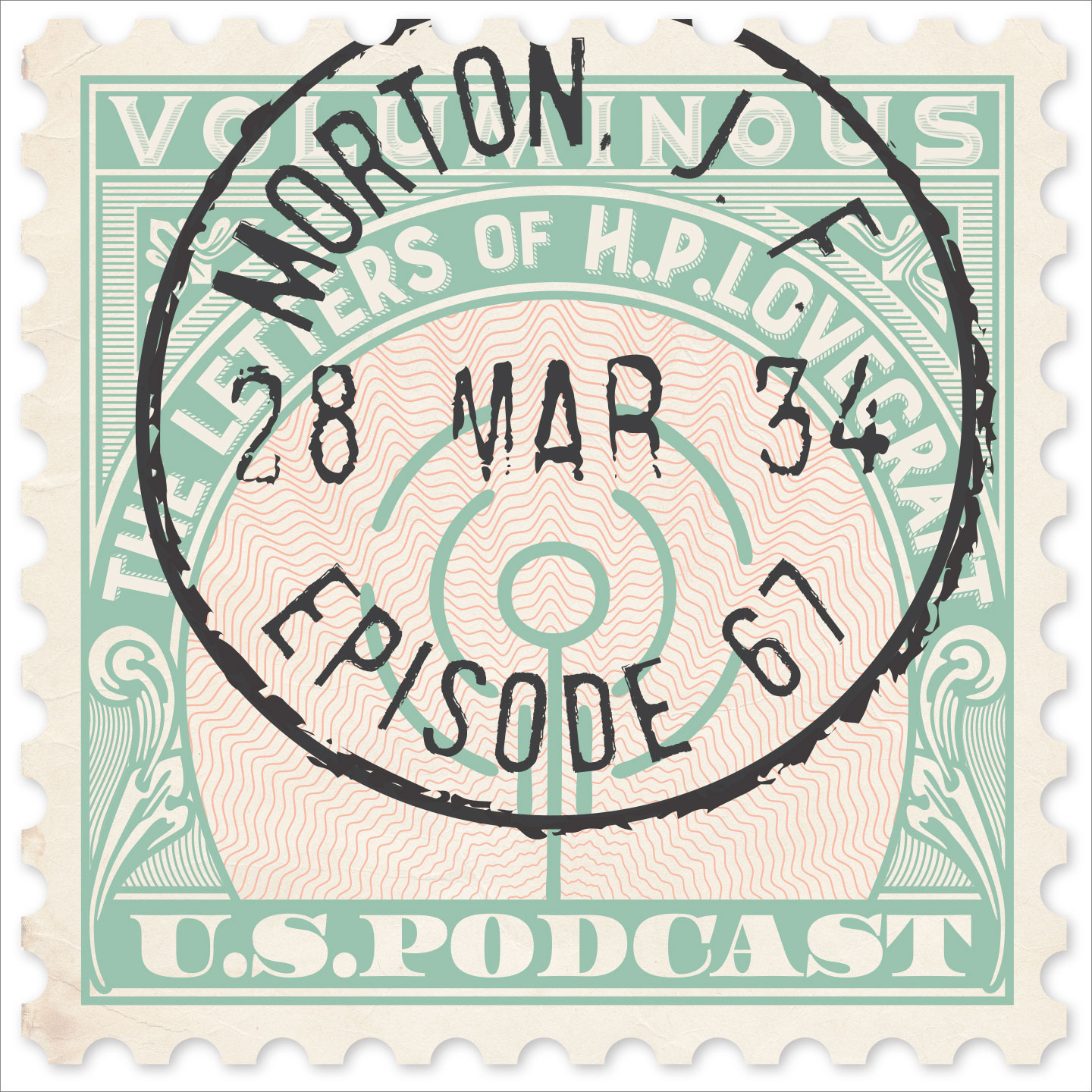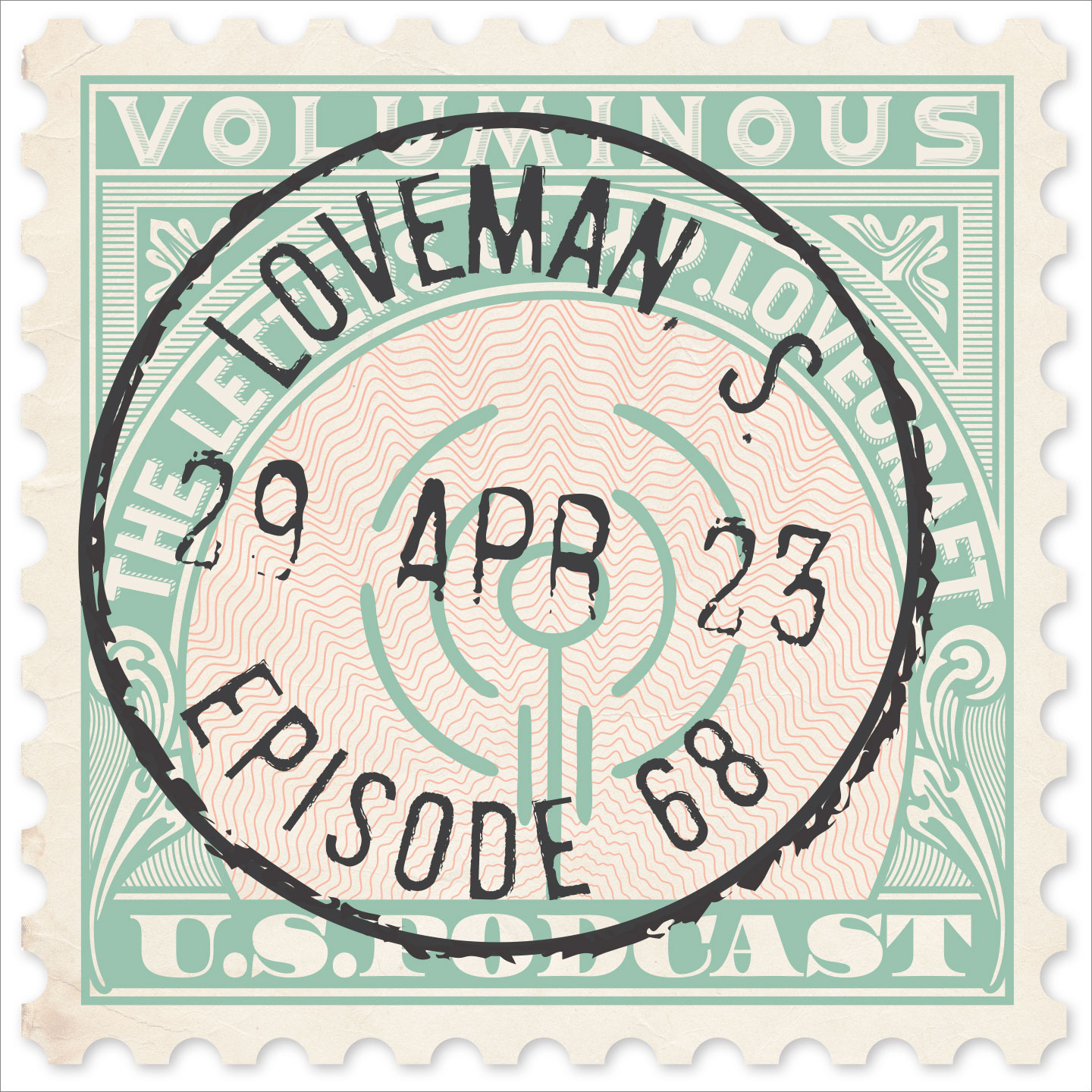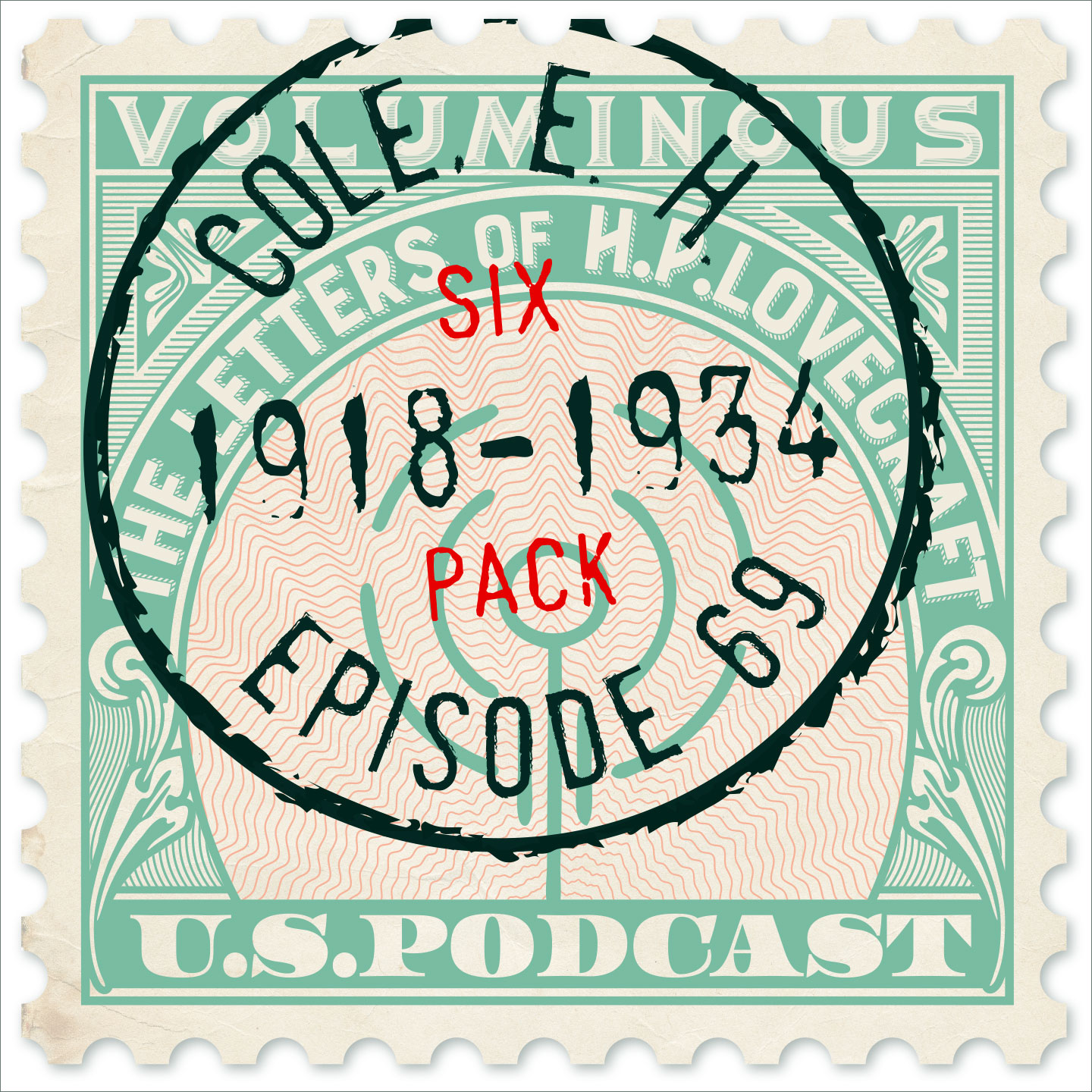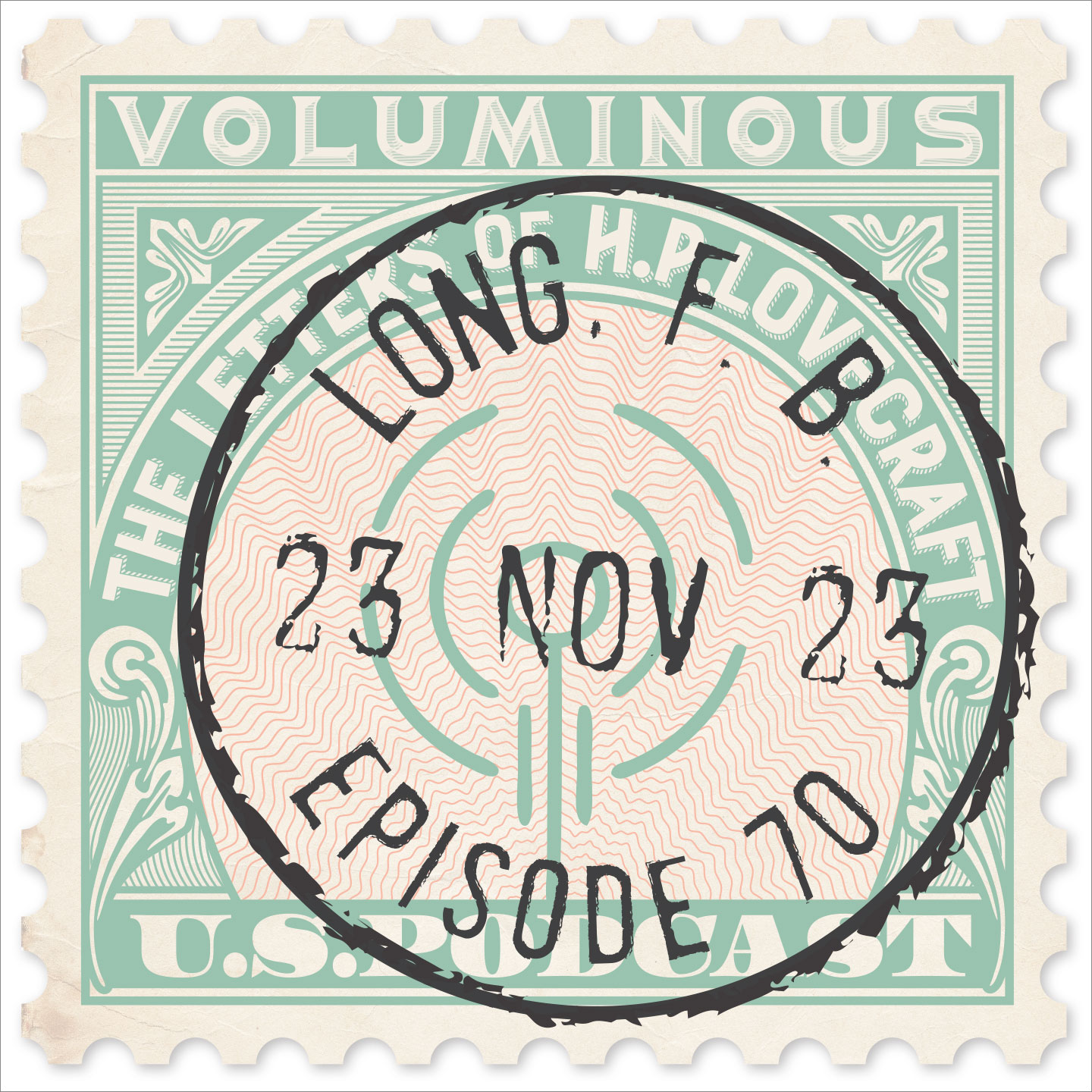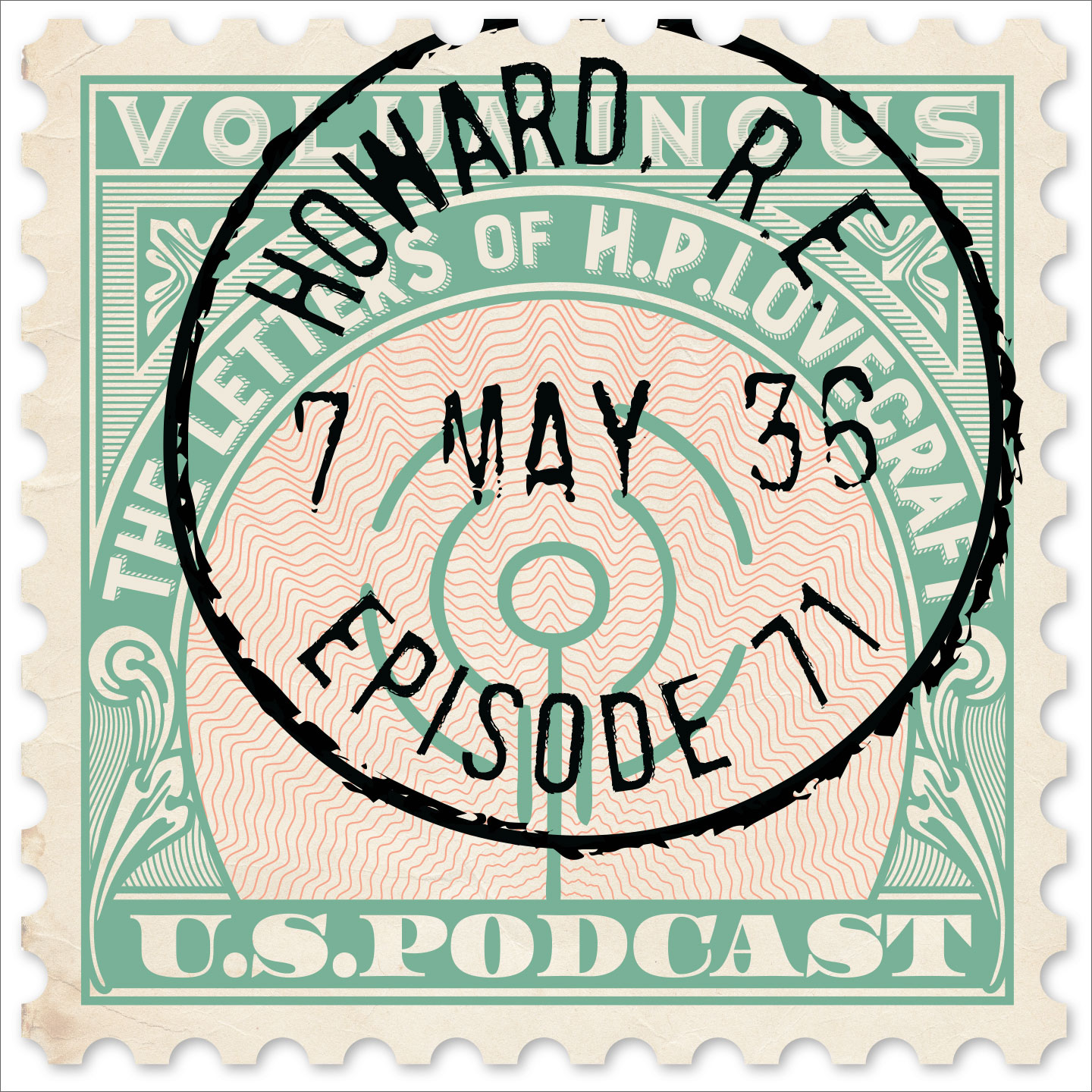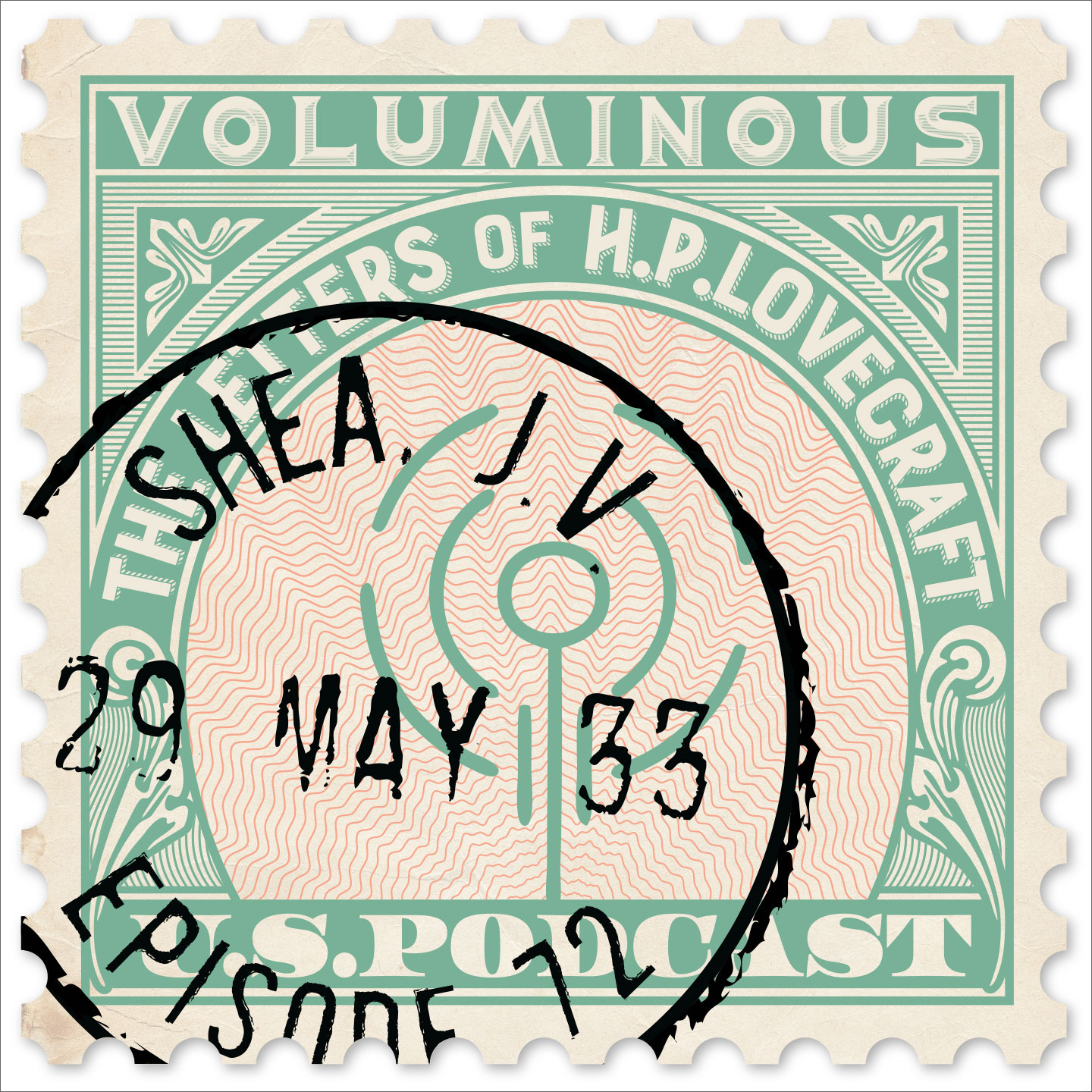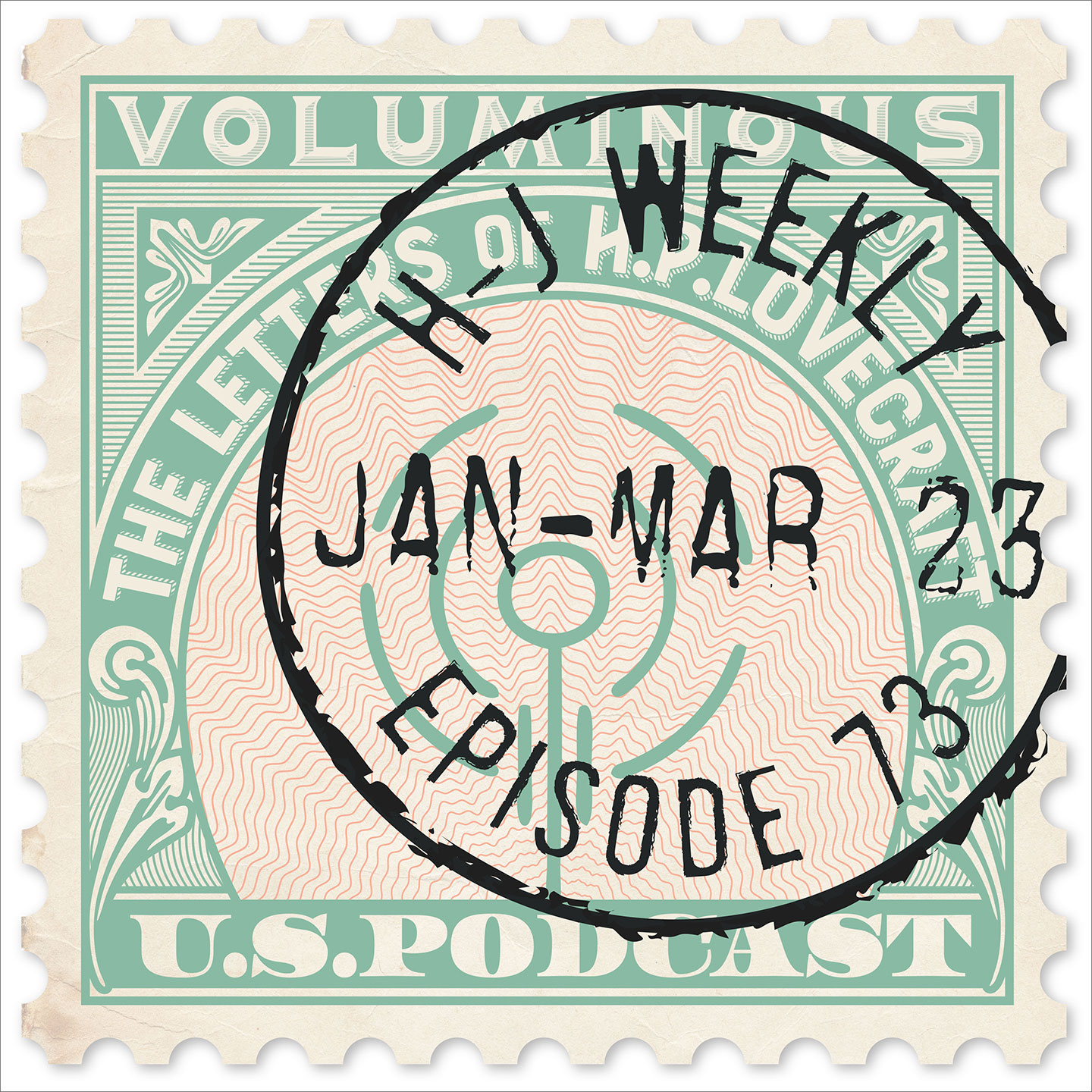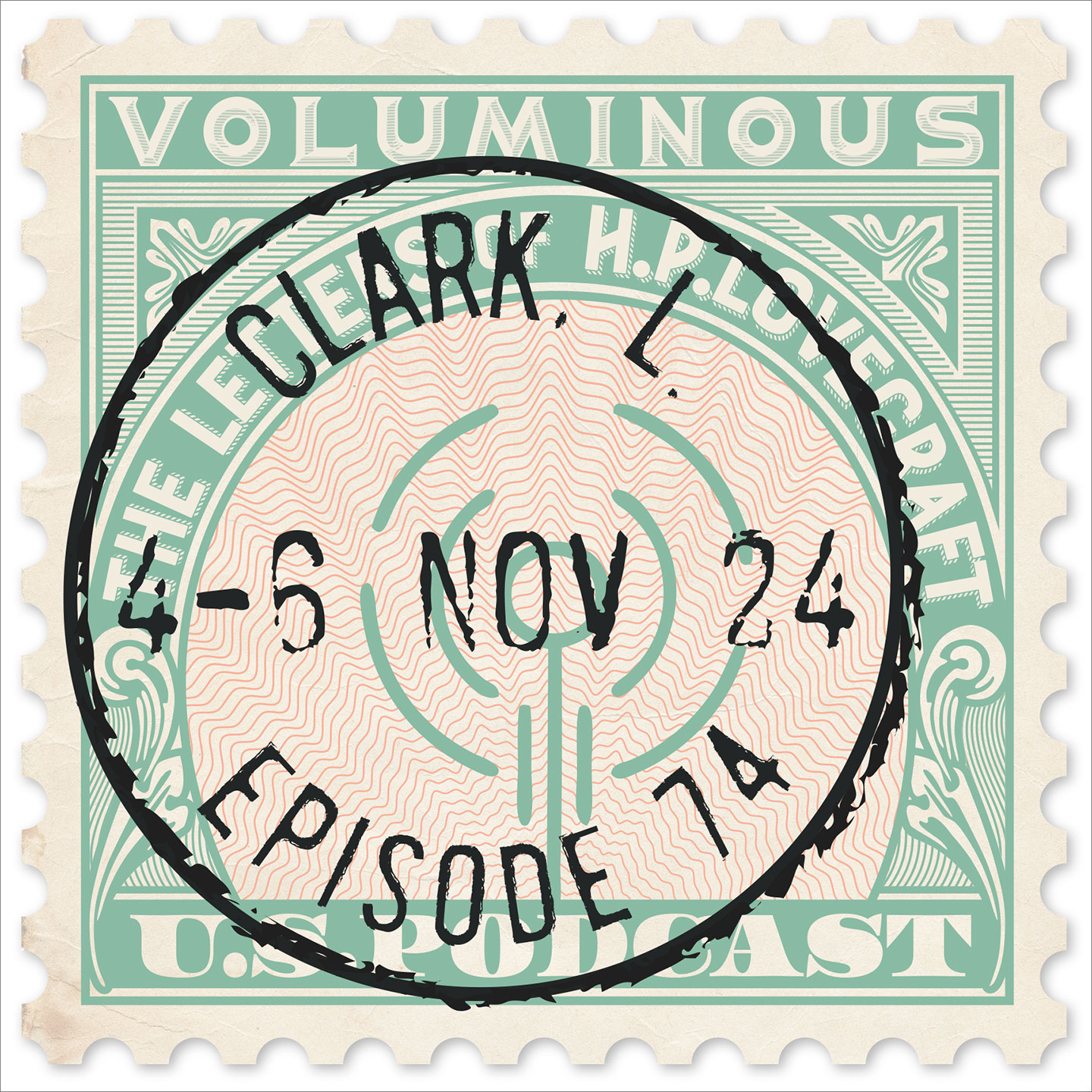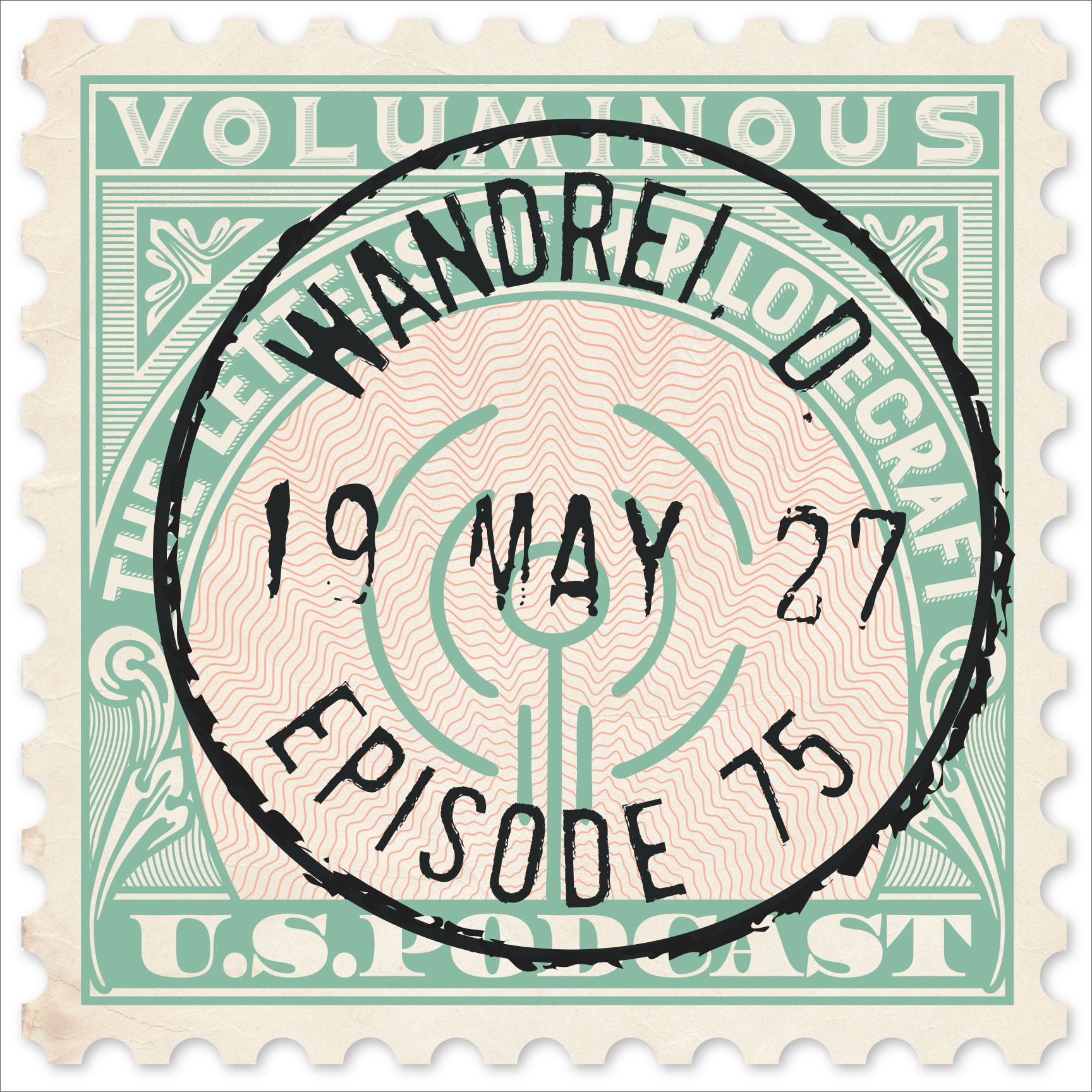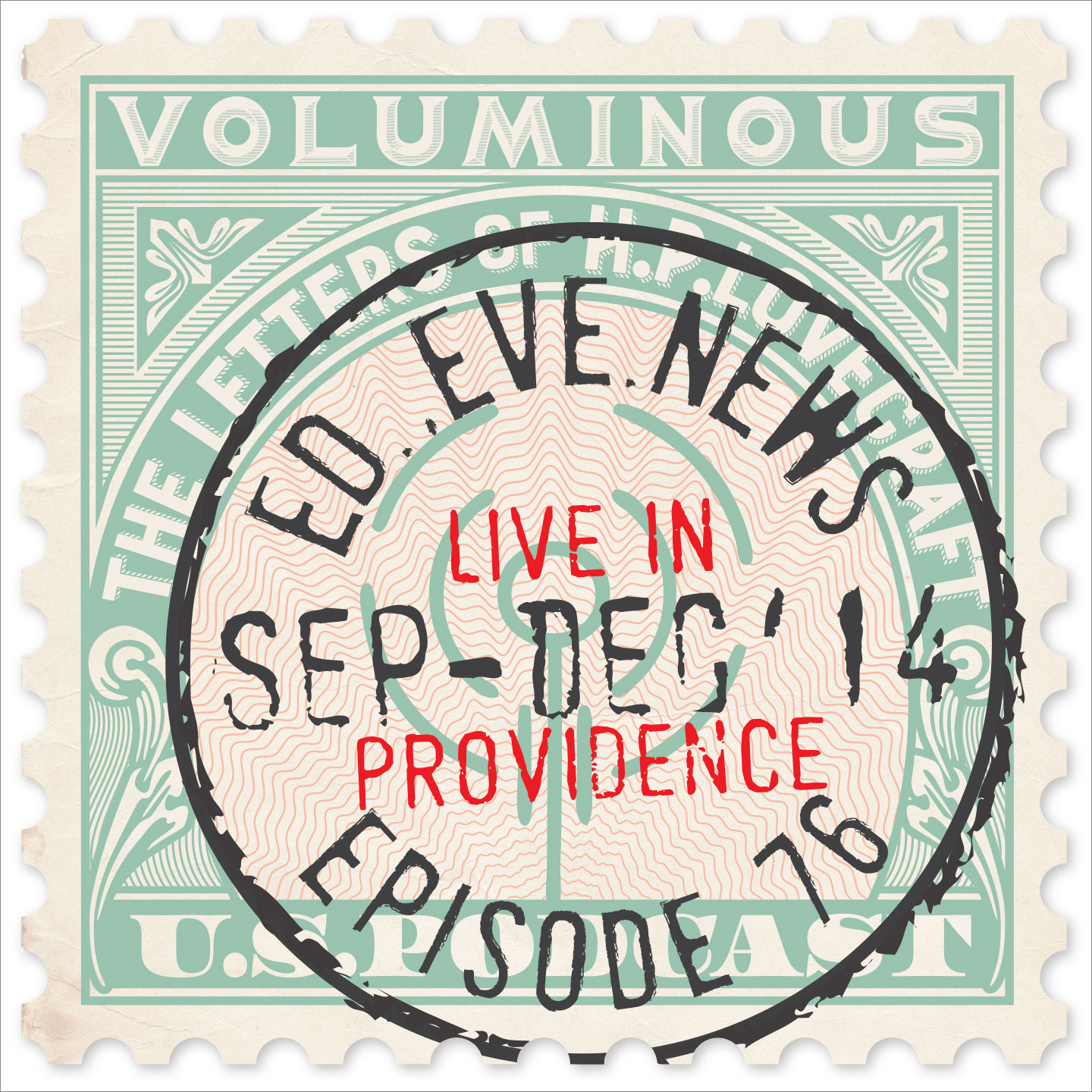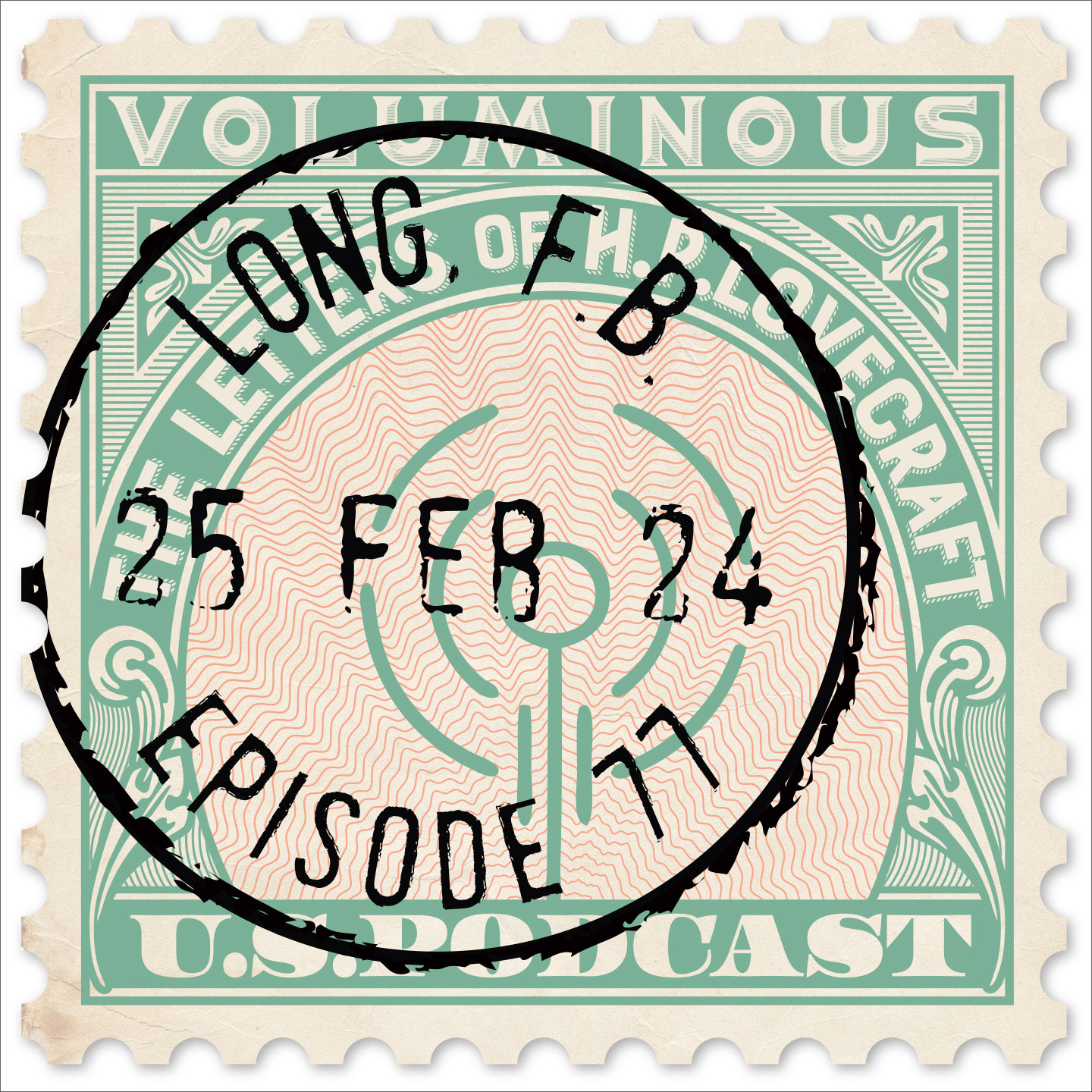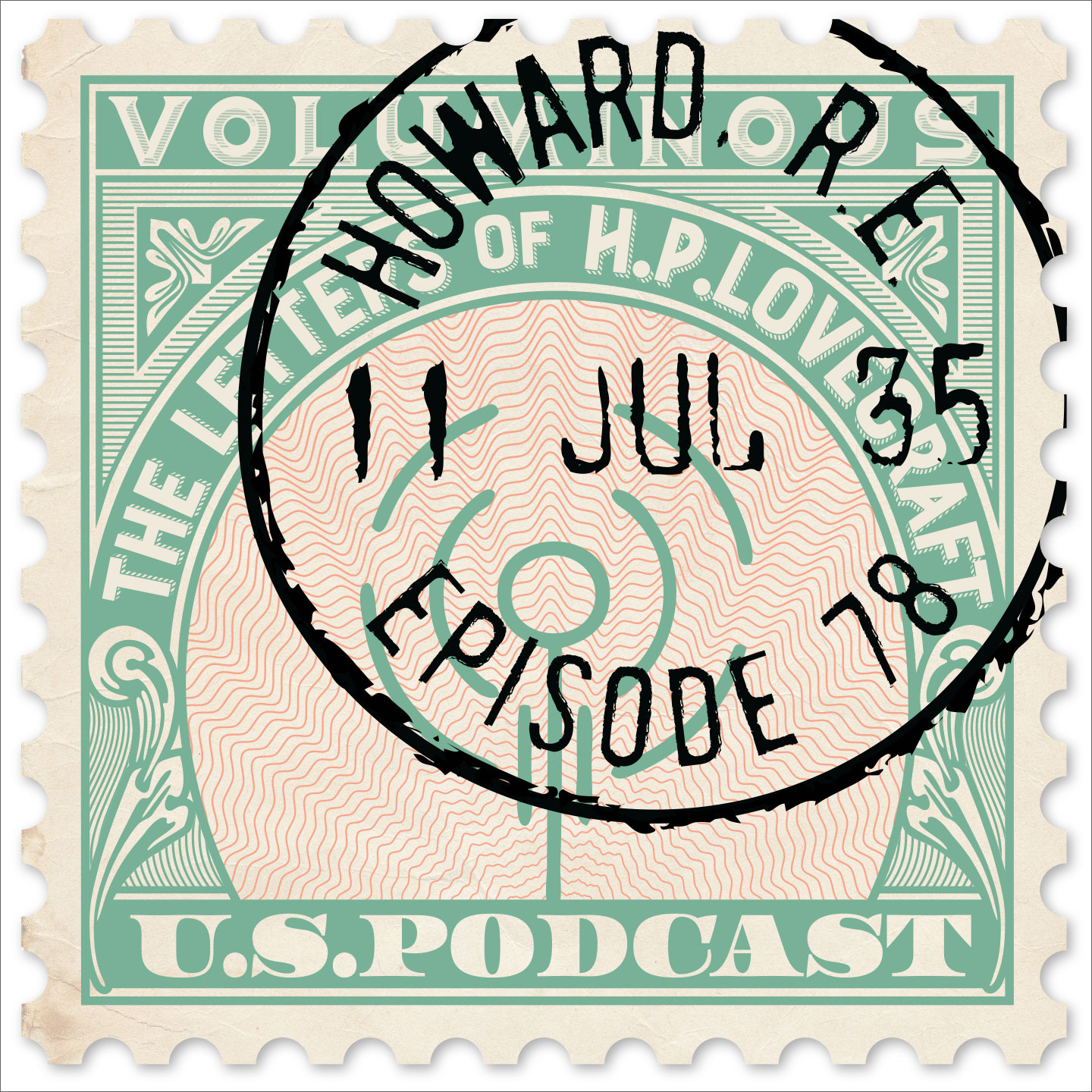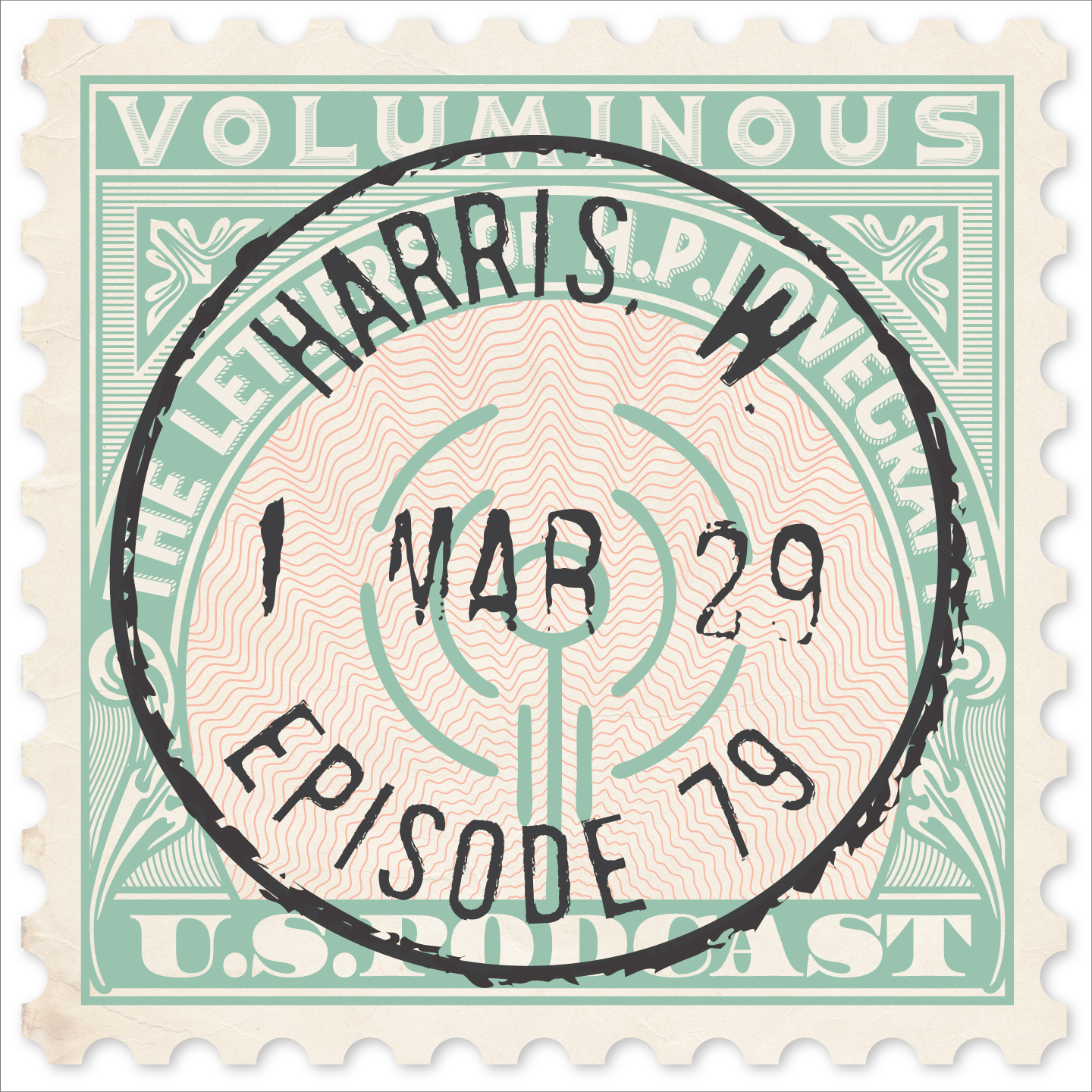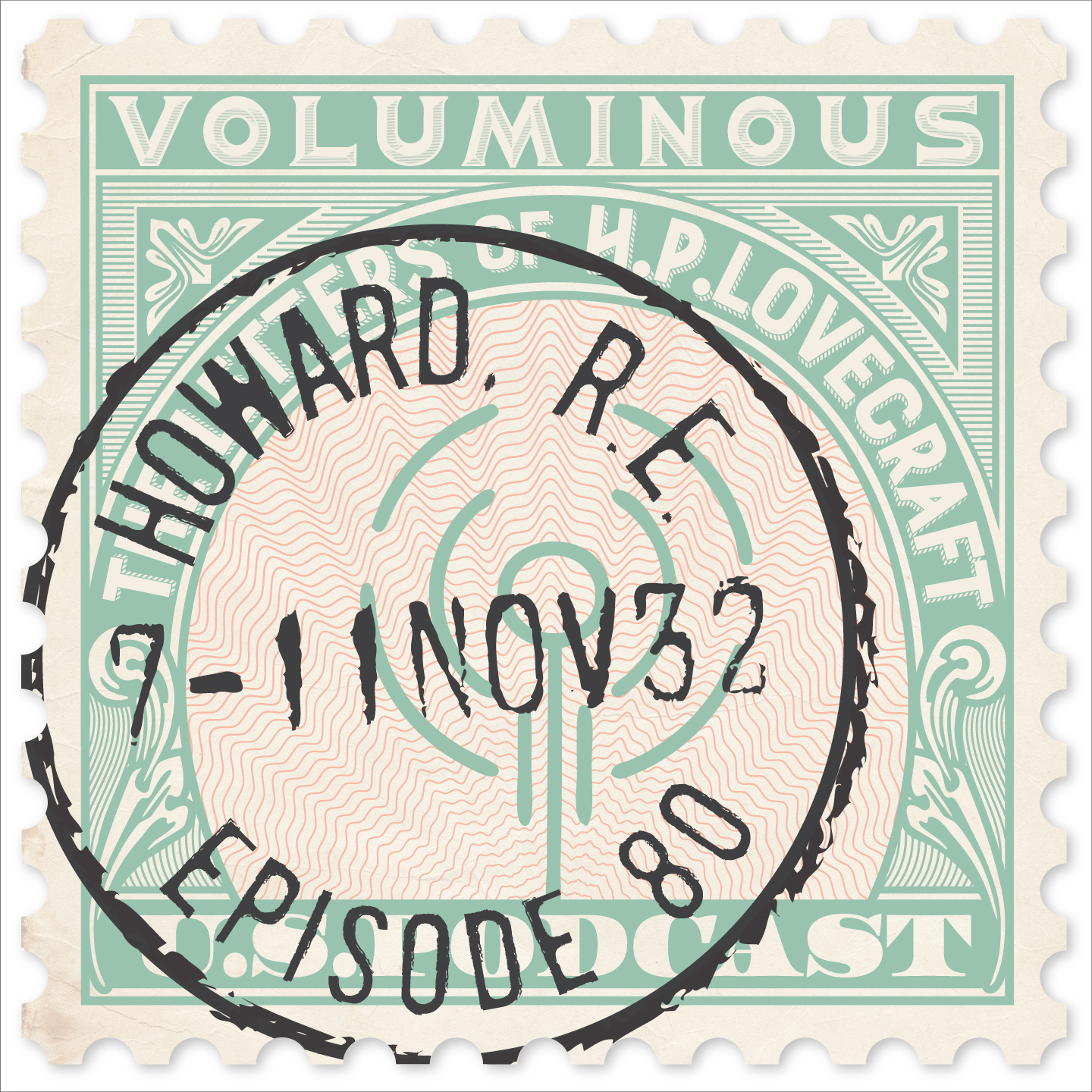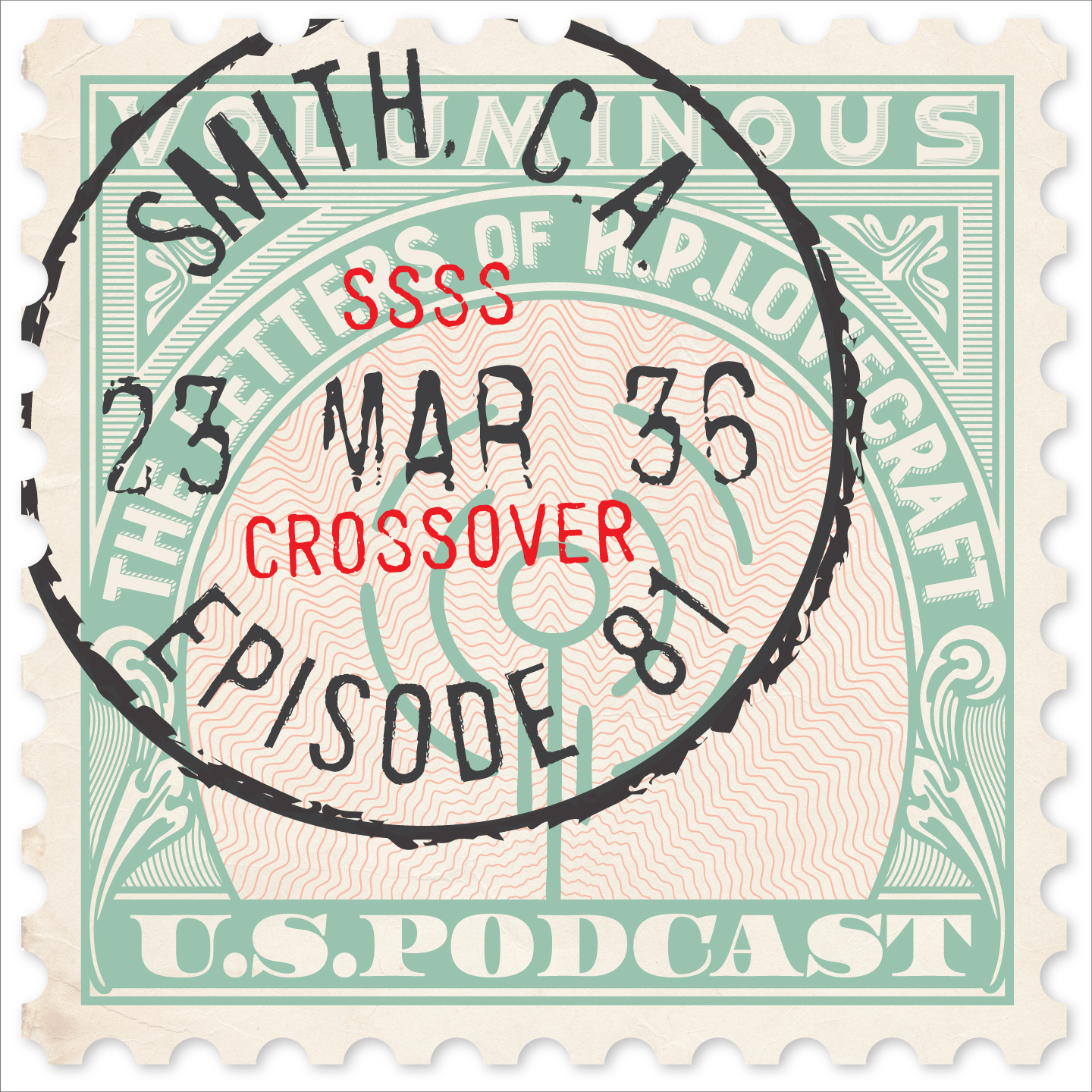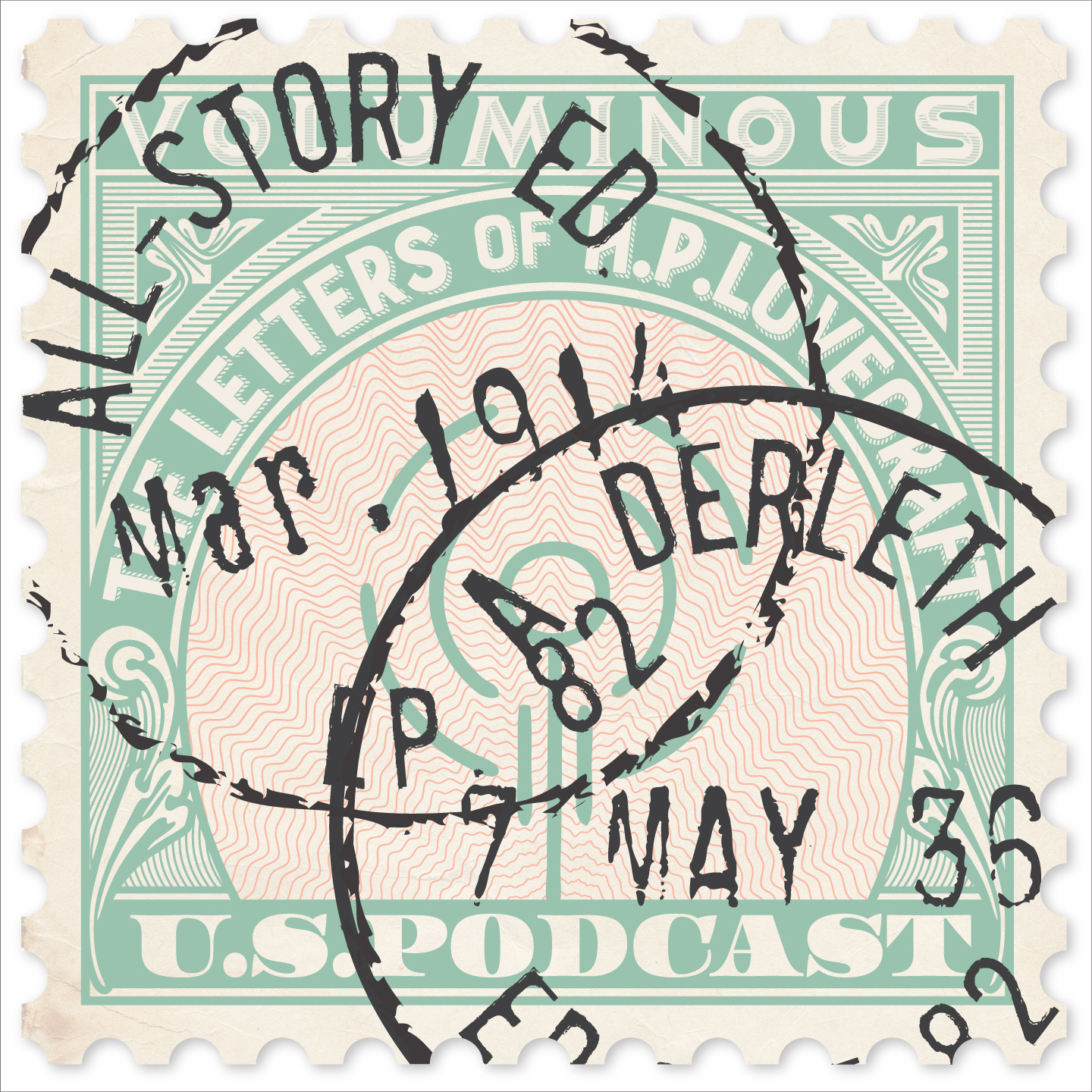
In addition to his classics of horror fiction, it is estimated that Lovecraft wrote 100,000 letters — or roughly 15 every day of his adult life — ranging from one-page diaries to seventy-page diatribes. Perhaps 20,000 of those letters have survived, in the hands of private collectors and at the John Hay Library in Providence.
In each episode of this podcast, we'll read one of these letters (or part of it) and then discuss it. In his letters HPL reveals an amazing breadth of knowledge of philosophy, science, history, literature, art and many other subjects, and forcefully asserts some highly considered opinions (some of which can be upsetting).
And of course his letters offer a fascinating window into his personal life and times. Although we've been working with Lovecraftian material for over 30 years, we still find interesting new things in his letters, and while we don't claim to be experts we look forward to sharing them with a wider audience.
Subscribe via iTunes, Stitcher or wherever you get podcasts! Or listen right here!
RSS Feed- Episode 62
- Posted July 4, 2021
Currying Favor
A pair of letters to soldier of fortune and pulp fictioneer E. Hoffmann Price, Lovecraft's friend and collaborator from New Orleans, in which HPL talks of writing weird fiction, playing with kittens, his rambling walks in Providence woods, and the allure of East Indian curry.
Music by Troy Sterling Nies. Thanks to Hippocampus Press for including this letter and more in their new edition of Letters to E. Hoffmann Price and Richard F. Searight. Special thanks to Leslie Baldwin for making the delicious curry! And thanks to listener/HPLHS member Bill Barbato for making the handy Voluminous Database.
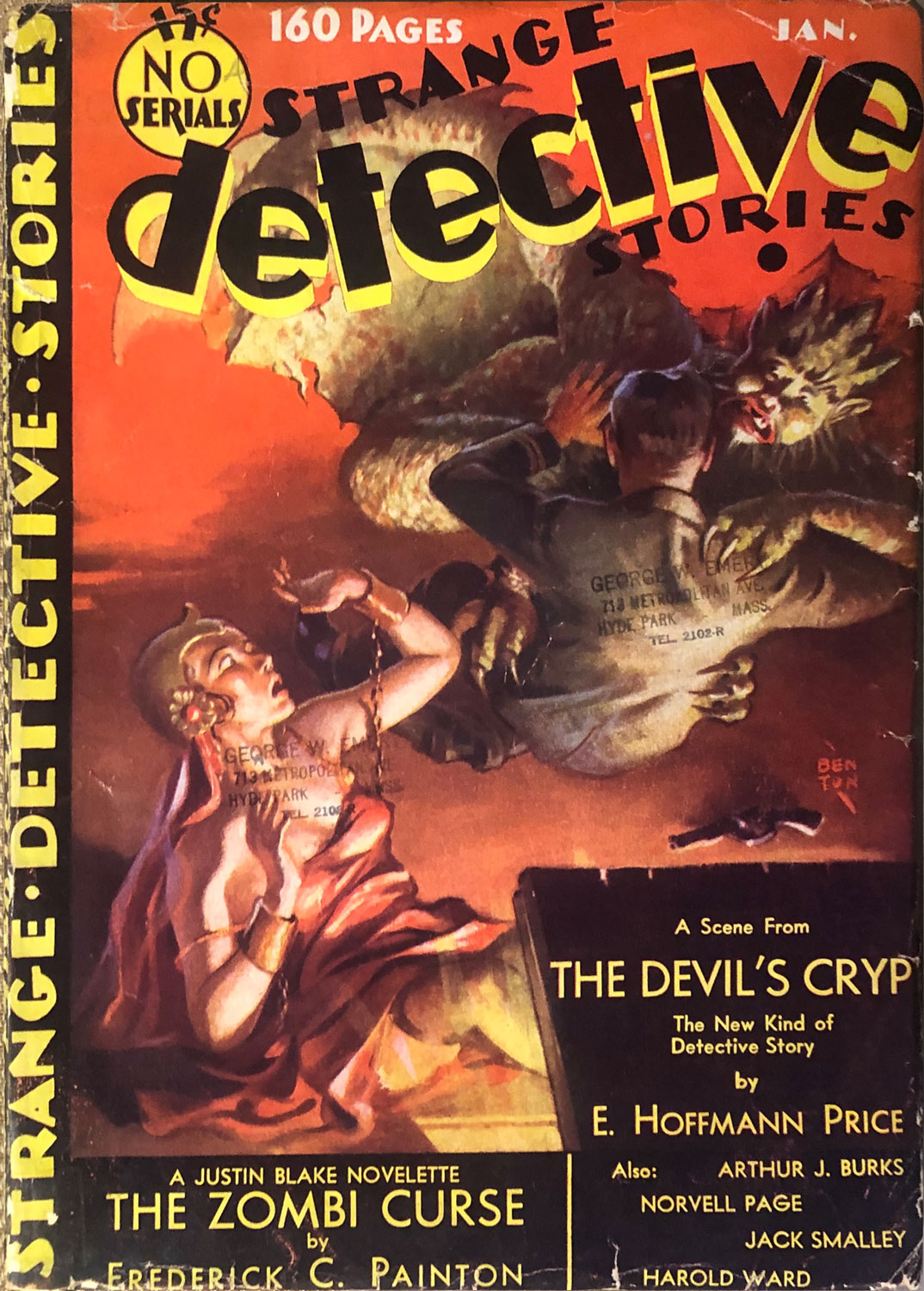
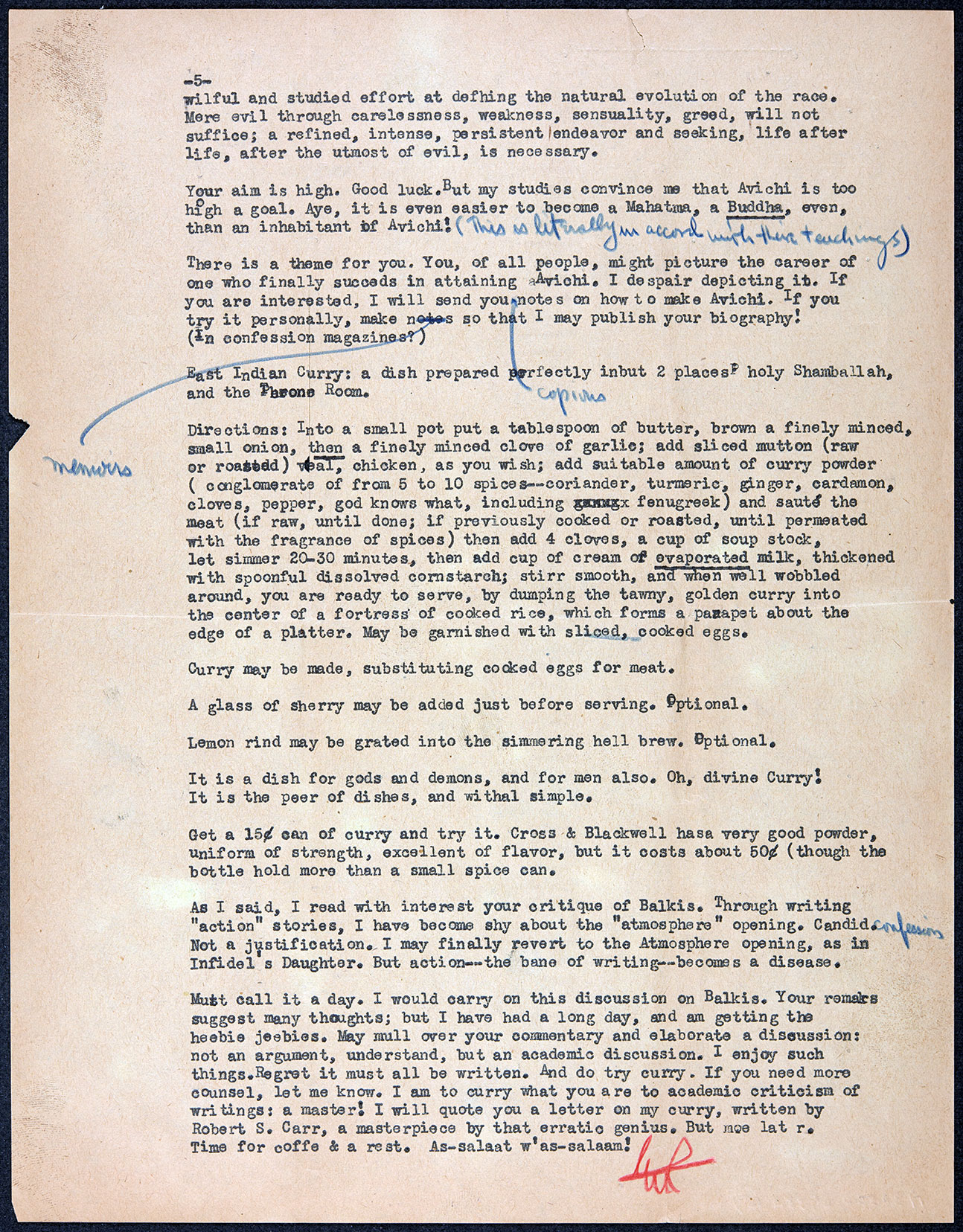 The Brown Digital Repository has at least one of the missives from Price to which the first letter in this episode is a response. Price describes his experience in writing the Shamballa story which was published under the title "The Devil's Crypt" in Strange Detective Stories magazine for January of 1934. Our old friend Will Hart has a PDF of the story you can read in his vast online archive of Lovecraftian stuff, CthulhuWho1.
The Brown Digital Repository has at least one of the missives from Price to which the first letter in this episode is a response. Price describes his experience in writing the Shamballa story which was published under the title "The Devil's Crypt" in Strange Detective Stories magazine for January of 1934. Our old friend Will Hart has a PDF of the story you can read in his vast online archive of Lovecraftian stuff, CthulhuWho1.
Seen at right is the page from a subsequent letter Price sent to Lovecraft with his recipe for East Indian curry.
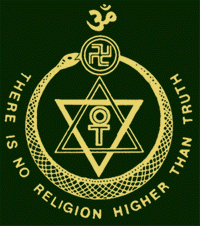 Theosophy is far too big a topic for us to cover either in the episode or here on the website, but it's fascinating stuff. HPL mentions Helena Blavatsky, Annie Besant and Charles Webster Leadbeater, three of the founding figures of the movement. Shamballa is a mythical, spiritual kingdom or hidden land, home of the mystic brotherhood of Masters who figure prominently in Theosophy. It has been described (and spelled) in numerous ways by numerous people, and mentioned in passing in various works by Price.
Theosophy is far too big a topic for us to cover either in the episode or here on the website, but it's fascinating stuff. HPL mentions Helena Blavatsky, Annie Besant and Charles Webster Leadbeater, three of the founding figures of the movement. Shamballa is a mythical, spiritual kingdom or hidden land, home of the mystic brotherhood of Masters who figure prominently in Theosophy. It has been described (and spelled) in numerous ways by numerous people, and mentioned in passing in various works by Price.
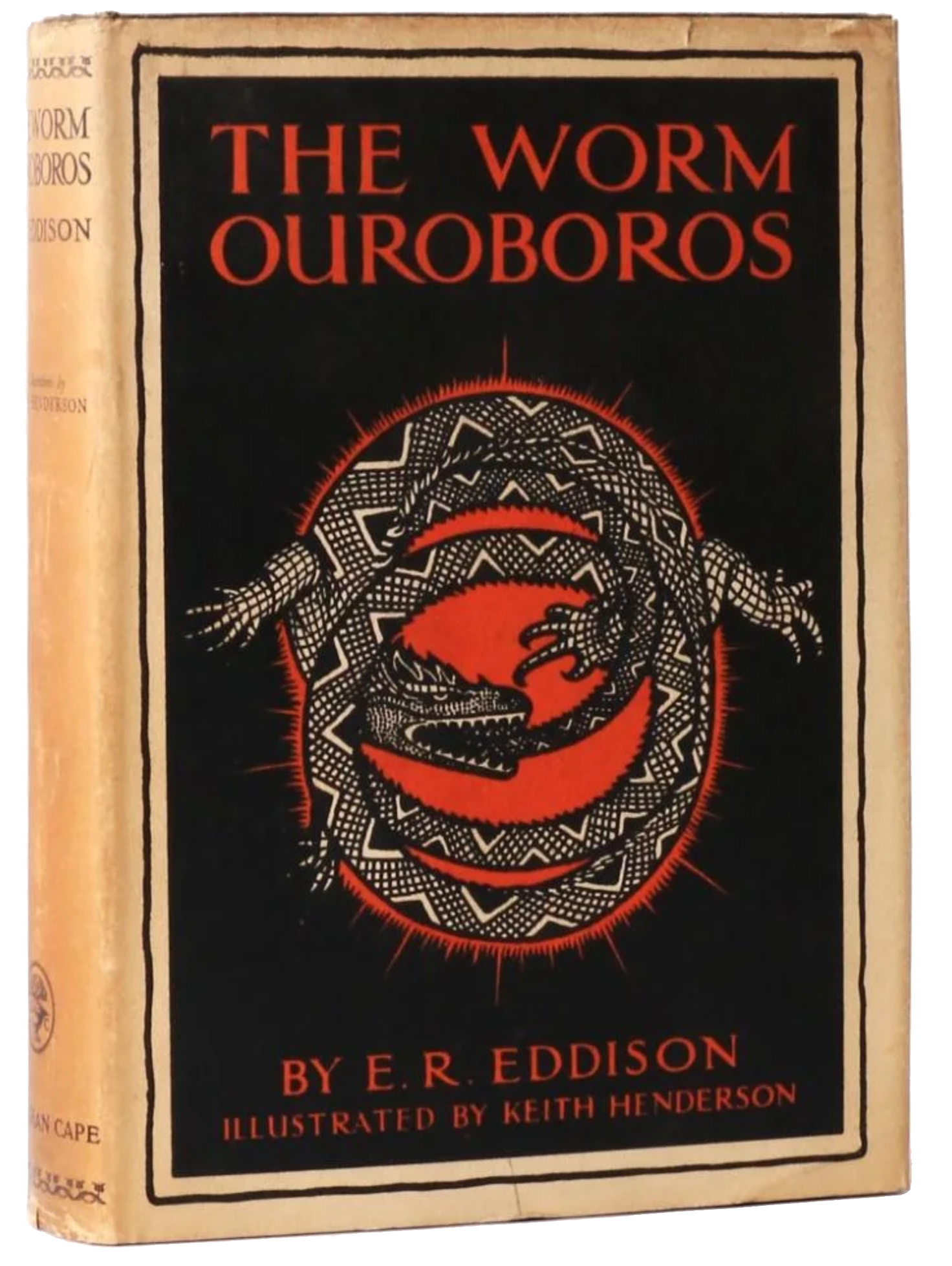
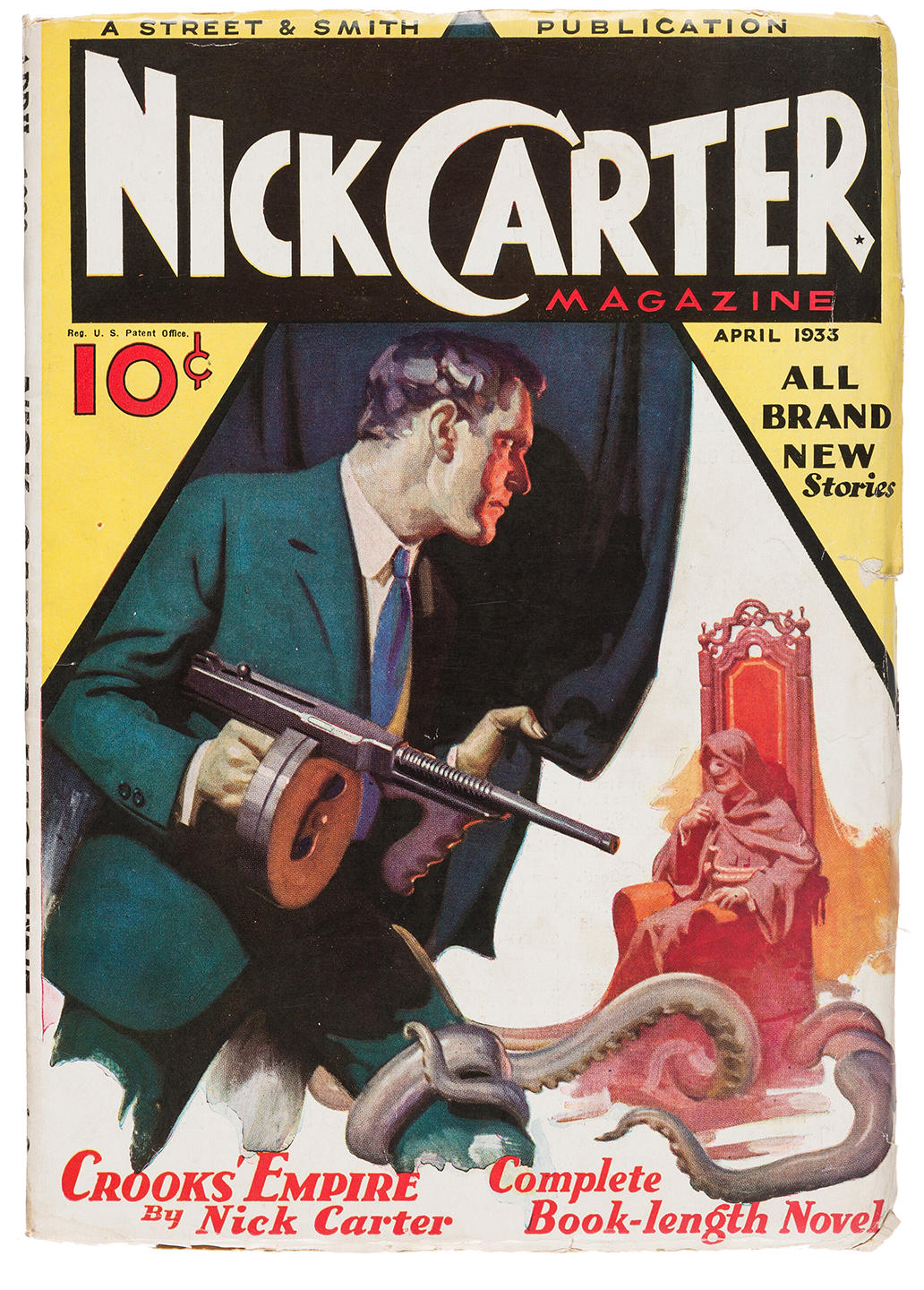 HPL was surprised to see an issue of Nick Carter magazine on his local newsstand in 1933, perhaps even the very issue pictured here. The famous detective character was introduced in dime novels in 1886, created by Ormond Smith and John Coryell, and after initial fame had indeed waned in popularity. But with the success of "The Shadow" in the early 1930s, he was brought back and went on for many more decades of thriller fun in fiction, comic books, radio, movies and television.
HPL was surprised to see an issue of Nick Carter magazine on his local newsstand in 1933, perhaps even the very issue pictured here. The famous detective character was introduced in dime novels in 1886, created by Ormond Smith and John Coryell, and after initial fame had indeed waned in popularity. But with the success of "The Shadow" in the early 1930s, he was brought back and went on for many more decades of thriller fun in fiction, comic books, radio, movies and television.
The Worm Ouroboros by Eric Rücker Eddison is a heroic fantasy novel written in Jacobean style in 1922. Nominally set on Mercury, as Lovecraft notes it is much more like a fantasy version of Earth combining elements of medieval Europe, Viking lore, and classical mythology. Apparently some of the characters in the novel refer to their home as "Middle Earth", and the novel influenced later more famous works of fantasy like The Lord of the Rings and The Chronicles of Narnia. Eddison belonged to the same literary club at Oxford as Tolkien and Lewis. James Branch Cabell, an American author of fantasies that Lovecraft did not care for, admired the work and wrote the introduction for the 1926 American edition. Eddison expanded on his fantasy world starting in 1935 with a trilogy of novels set in the land of Zimiamvia.
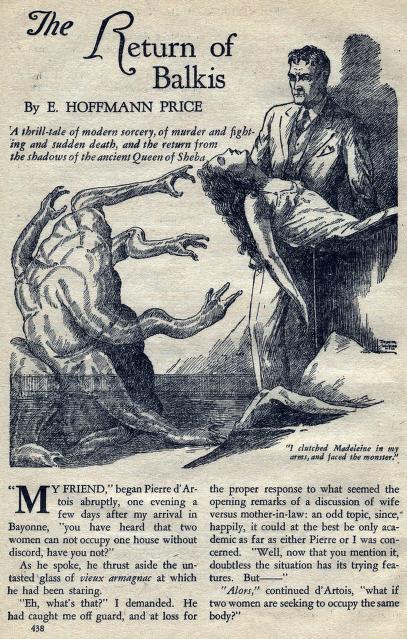
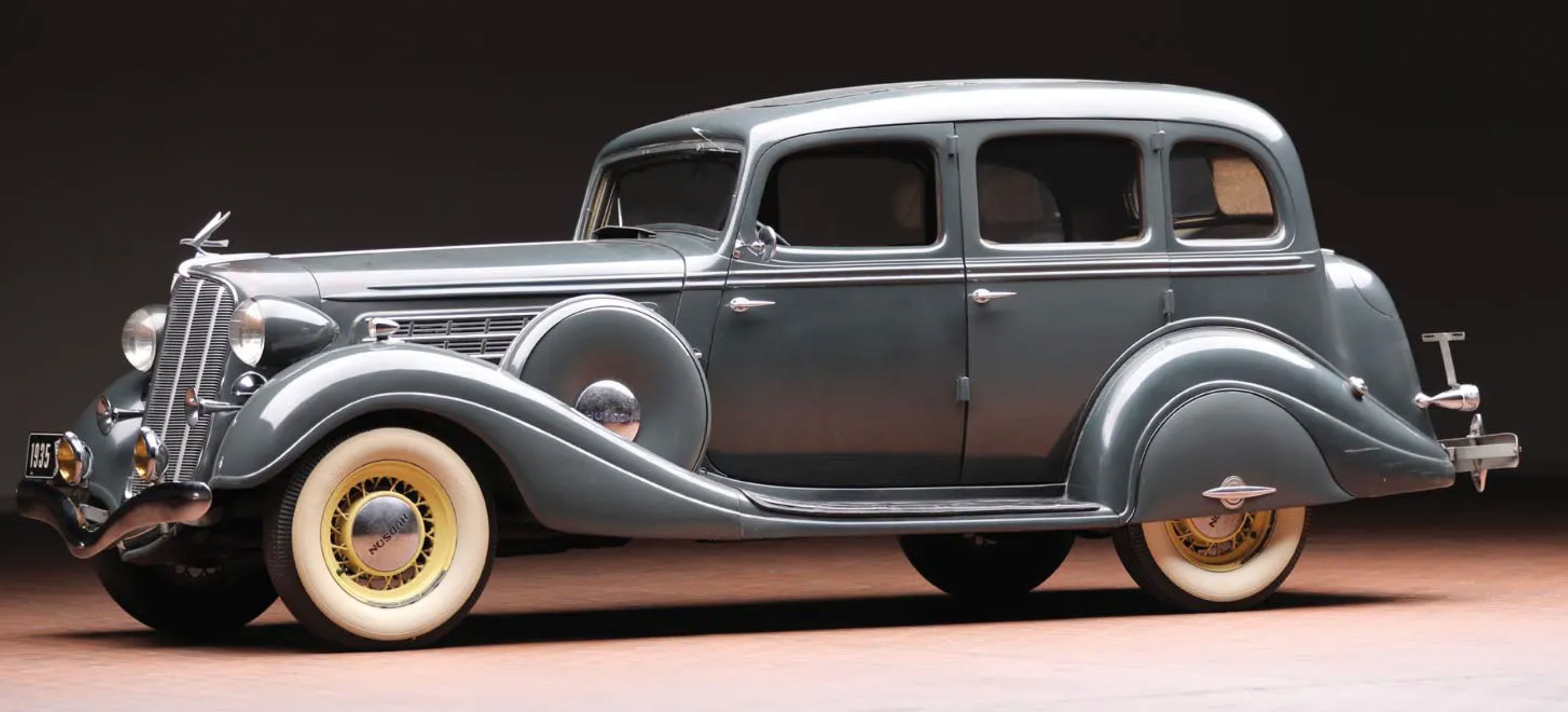 We don't know exactly what year or model of "Hu'd-Su'un" Price was driving in 1936, but if it was anything like this 1935 Hudson Eight, it is easy to see why Lovecraft referred to it as a "super-juggernaut". Hudson also made a similar car called the Terraplane, which was popular with actual aviators like Amelia Earhart and Orville Wright. It's fun to imagine Price taking HPL for rides in Rhode Island in such a car. Hudson itself merged with Nash-Kelvinator to become AMC, and the Hudson brand name was retired after 1957.
We don't know exactly what year or model of "Hu'd-Su'un" Price was driving in 1936, but if it was anything like this 1935 Hudson Eight, it is easy to see why Lovecraft referred to it as a "super-juggernaut". Hudson also made a similar car called the Terraplane, which was popular with actual aviators like Amelia Earhart and Orville Wright. It's fun to imagine Price taking HPL for rides in Rhode Island in such a car. Hudson itself merged with Nash-Kelvinator to become AMC, and the Hudson brand name was retired after 1957.
Although Farnsworth Wright did not accept Price's Shamballa story, he did publish "The Return of Balkis" in the April 1933 issue of Weird Tales. Lovecraft described the story as "good, vivid stuff". It starred occult detective Pierre D'Artois, who lived in Bayonne, France. D'Artois appeared in at least eight stories by Price, including "The Peacock's Shadow" and "The Bride of the Peacock". You can read "The Return of Balkis" online here. And while you're there you can read Clark Ashton Smith's "Ice Daemon"!
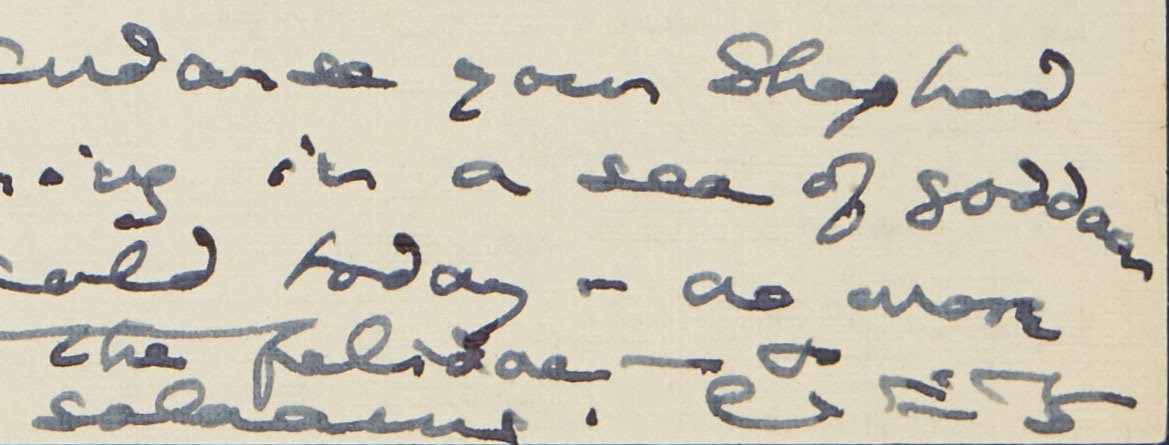 Price and Lovecraft made a habit of signing their letters to each other in foreign languages. Here you can see HPL's signature from the second letter covered in this episode. Between his penmanship and our ignorance, we can't say whether or not this is meant to be Arabic. You can see the entire letter in the trusty Brown Digital Repository.
Price and Lovecraft made a habit of signing their letters to each other in foreign languages. Here you can see HPL's signature from the second letter covered in this episode. Between his penmanship and our ignorance, we can't say whether or not this is meant to be Arabic. You can see the entire letter in the trusty Brown Digital Repository.
S. T. Joshi and David E. Schulz have some excellent footnotes in their new collection of the letters to Price, including a detailed explanation of the "ritual of approach to the Rajah of Kandi" mentioned in the second letter of this episode. You should check them out!
- Update
- Posted September 15, 2021
E. Hoffman Price and the Klan
Our brothers-in-podcasting, Chad Fifer and Chris Lackey of HPPodcraft covered E. Hoffman Price's story "The Devil's Crypt" in a recent episode of their show, Strange Studies of Strange Stories. They learned more about Price than we did, and discovered a post worth sharing.
In 1927 Price had written a story, "The Infidel's Daughter", that controversially poked some fun at the Ku Klux Klan. The story was published in the December issue of Weird Tales and was forgotten. In 1974 Price wrote a foreword to a new anthology of his old pulp stories, and he went out of his way to apologize for that story: he apologized to the KKK for having made fun of them in the first place. It seems that by the 1970s, the daring "soldier of fortune" and world traveller Price had become a frightened old man shaking his fist at changes in society.
You can read more about it here. Our thanks to Chad and Chris for pointing this out. If you're not already a listener, be sure to check out their show!